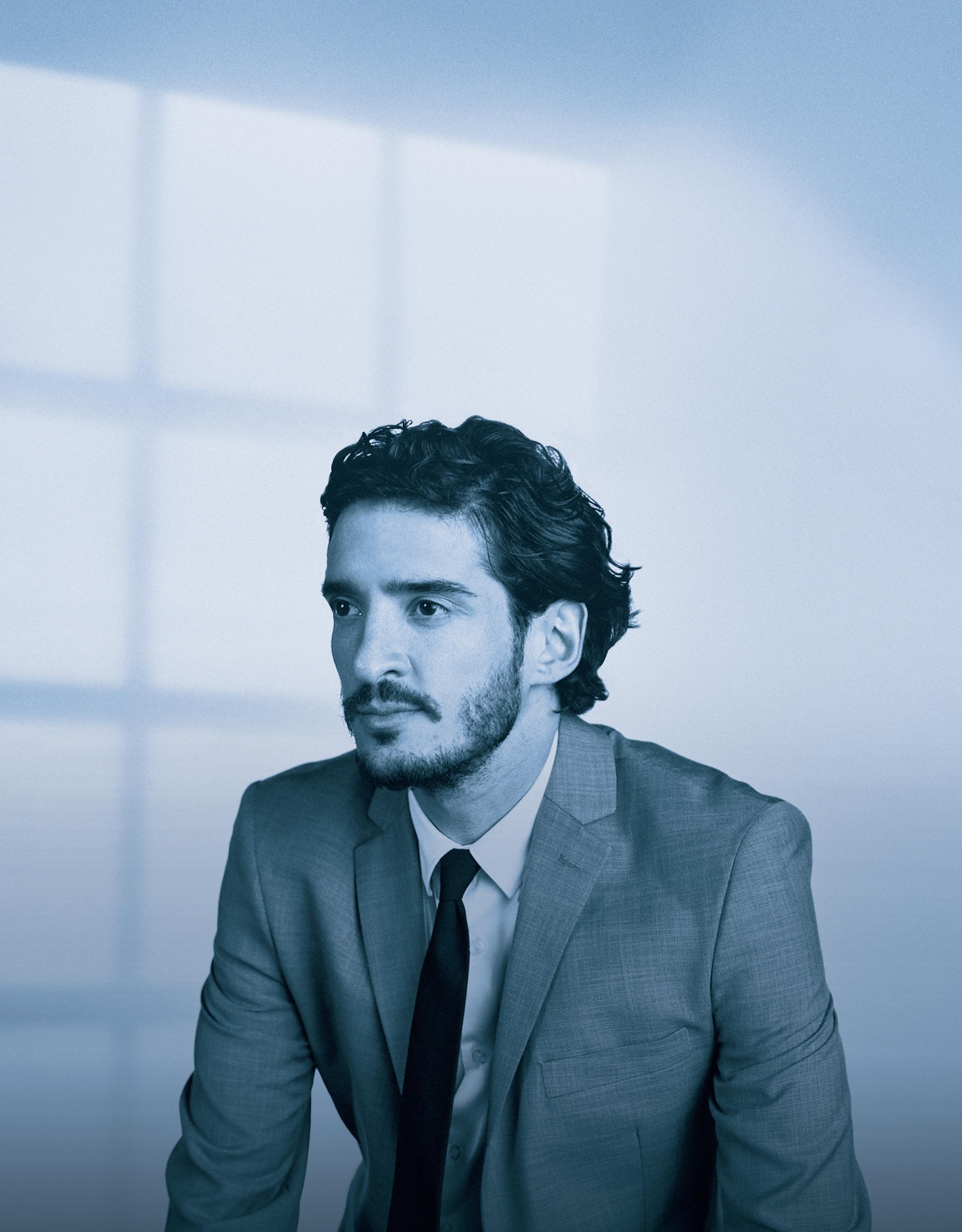GLOBAL MIAMI
APRIL / MAY 2024

THE TRILLION DOLLAR ASSET MANAGER PLANTS ITS FLAG PLUS THE 2024 ANNUAL TRADE REPORT
TRADE & INVESTMENT WITH CHILE
INVESTMENT, INNOVATION & TRADE


Baptist Health Miami Cardiac & Vascular Institute

APRIL / MAY 2024

THE TRILLION DOLLAR ASSET MANAGER PLANTS ITS FLAG PLUS THE 2024 ANNUAL TRADE REPORT
TRADE & INVESTMENT WITH CHILE
INVESTMENT, INNOVATION & TRADE


Baptist Health Miami Cardiac & Vascular Institute
From its humble beginnings in 1987 in two small rooms tucked behind the Baptist Hospital Emergency Center to developing technologies and treatments that have changed the course of cardiovascular medicine worldwide, Baptist Health Miami Cardiac & Vascular Institute is primed for its next move to expand and elevate cardiovascular services.
Spearheading the ambitious growth initiative is the Institute’s new leader, Tom C. Nguyen, M.D., FACS, FACC. In his role as chief medical executive and Barry T. Katzen Endowed Chair of Baptist Health Miami Cardiac & Vascular Institute, where he is also the director of Minimally Invasive Valve Surgery, Dr. Nguyen plans to focus on research and innovation with patient-centered care at the Institute’s core.
Miami Cardiac & Vascular Institute, whose experts have pioneered many innovative and less invasive cardiovascular procedures, recently opened a new cardiovascular care office that includes a dedicated arrhythmia center, the first of its kind in South Florida and one of the few in the U.S. Building upon the Institute’s strong foundation, Dr. Nguyen will continue to strengthen teams that will enable the launch of other new programs such as robotic heart surgery.
“To best serve the needs of the community and make Miami Cardiac & Vascular Institute the crown jewel of South Florida and beyond, we will be exploring new services and recruiting the best cardiothoracic surgeons and other specialists from around the world,” he says.

Tom C. Nguyen, M.D., FACS, FACC
With a passion for minimally invasive surgery and for treating valvular heart disease, Dr. Nguyen has spent more than 20 years researching the mitral valve and has published more than 300 peerreviewed articles. He comes to South Florida from the University of California San Francisco (UCSF), where he was chief of cardiothoracic surgery and the Charles Schwab Distinguished Professor of Surgery. While at UCSF, he transformed the cardiothoracic surgery program as co-director of its Heart and Vascular Center.
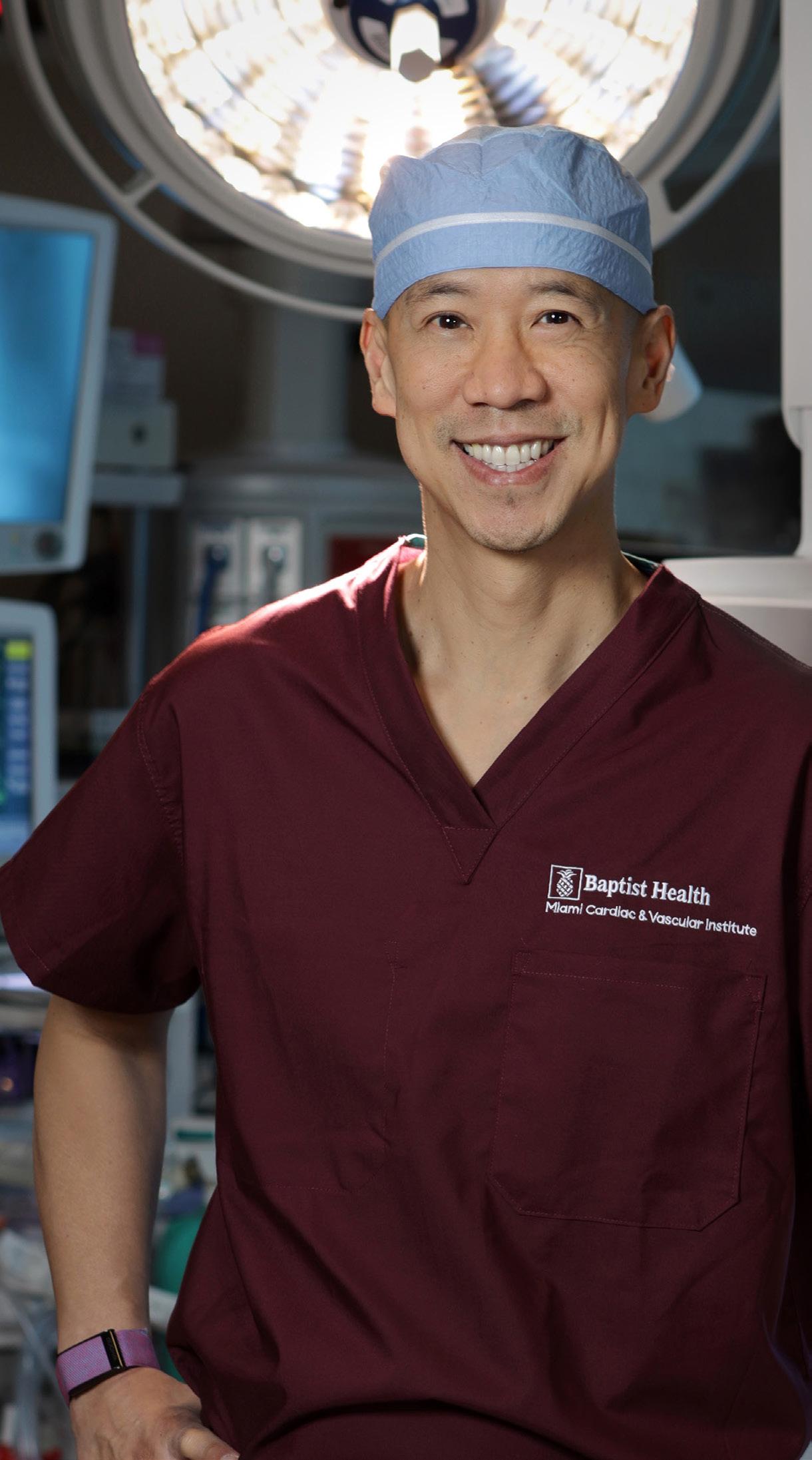
Growing up, Dr. Nguyen never imagined he’d be an internationally recognized cardiothoracic surgeon. A political refugee whose family fled Vietnam when he was only 4, he believes life is about opportunities, second chances and paying it forward. His experience left him vowing to always fight for the underdog and the sickest of the sick, particularly when patients are told that they have no options left.
“Everyone deserves a second chance,” he says. “When my dad and older sister and I came to Houston, we spoke no English. We were very poor and lived on rice, eggs and soy sauce,” he recalls.
At a young age, Dr. Nguyen realized that their close-knit community cared deeply for each other. Neighborhood “nannies” stepped in to watch children while parents worked. Helping hands were never far away. From this, he became aware that his success was not his own doing but was the result of support systems, luck and many mentors.
Dr. Nguyen graduated from Rice University with honors in economics and then attended the Johns Hopkins University School of Medicine. He completed a general surgery residency at Stanford University, a cardiothoracic surgery fellowship at Columbia Presbyterian and a transcatheter aortic valve replacement (TAVR) fellowship at Emory University. As an innovative heart surgeon, he has performed many first-in-man operations.
“I had the chance to go back to Vietnam for the first time after I completed medical school,” he says. “One morning at the crack of dawn, I saw a young man working tirelessly on a shrimping boat. We were about the same age. I wasn’t stronger or smarter. I was just luckier.”
Because of its complexities and challenges, cardiac surgery was of particular interest to Dr. Nguyen. “I can zone out and get laser-focused,” he explains. “There are at least 100 critical steps in heart surgery with small margins of error. You need to be composed in the most

chaotic environment. Everyone has a role, and every person is vital to the team. You can’t be duplicating efforts. If we work together as a team, we are unstoppable.”
He and his wife, interventional radiologist Gina Landinez, M.D., are the parents of two young girls. As someone who is keenly aware of women’s contributions to society, he is an active advocate for diversity, equity and inclusion.
The stories of hardship and the obstacles overcome by many immigrants and marginalized people resonate with Dr. Nguyen and give him special reason to appreciate the diversity of South Florida and that of his patients and their families.
“My experience shaped me as a doctor,” he says. “It’s a privilege and an honor to care for patients who have put all of their trust in you. When a patient comes back to me and says, ‘I’ve gone fishing again,’ or ‘Here’s a picture of me hiking,’ that is amazing. Getting them back to their families is magical.”
For more information, visit BaptistHealth.net/Heart
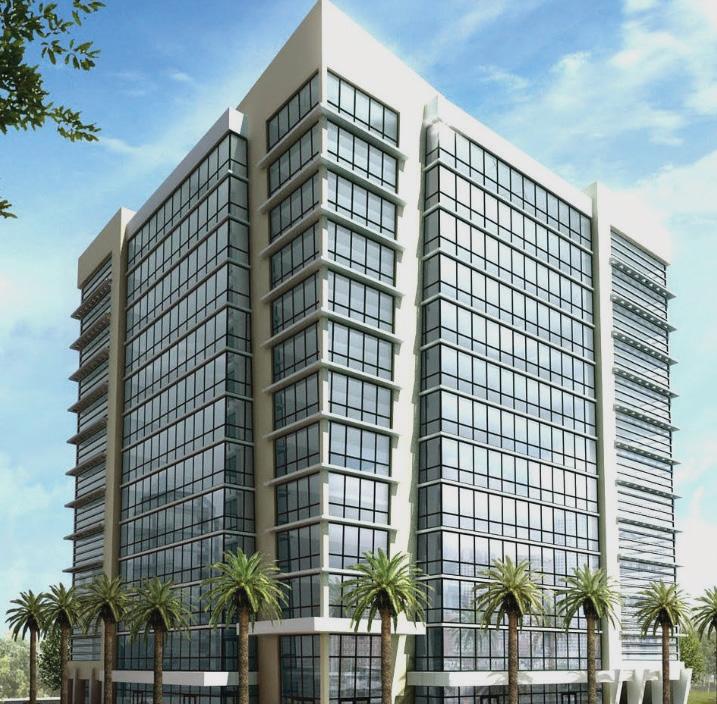

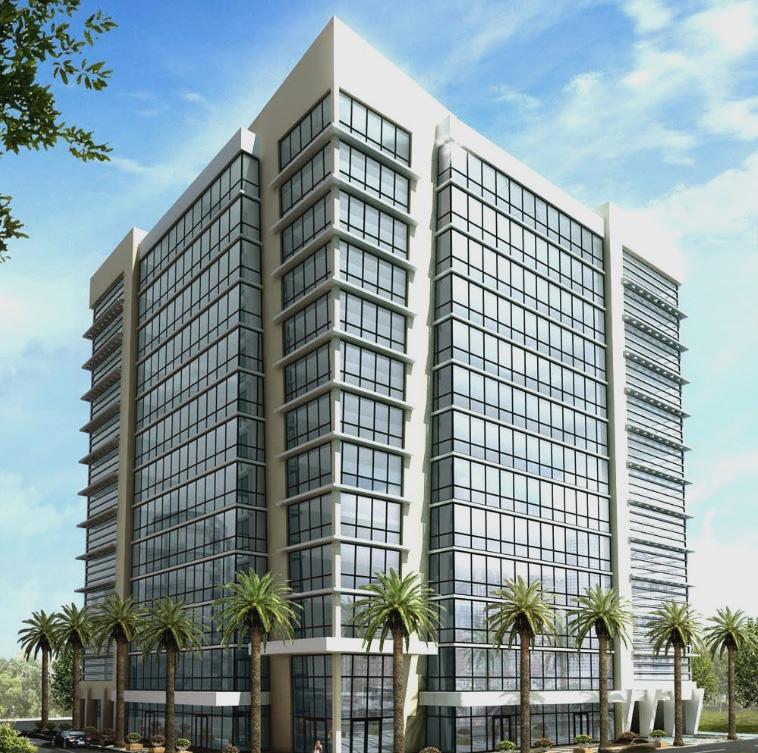

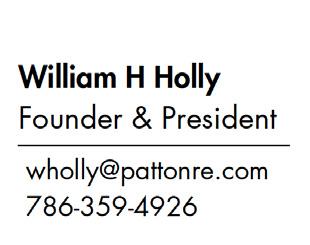

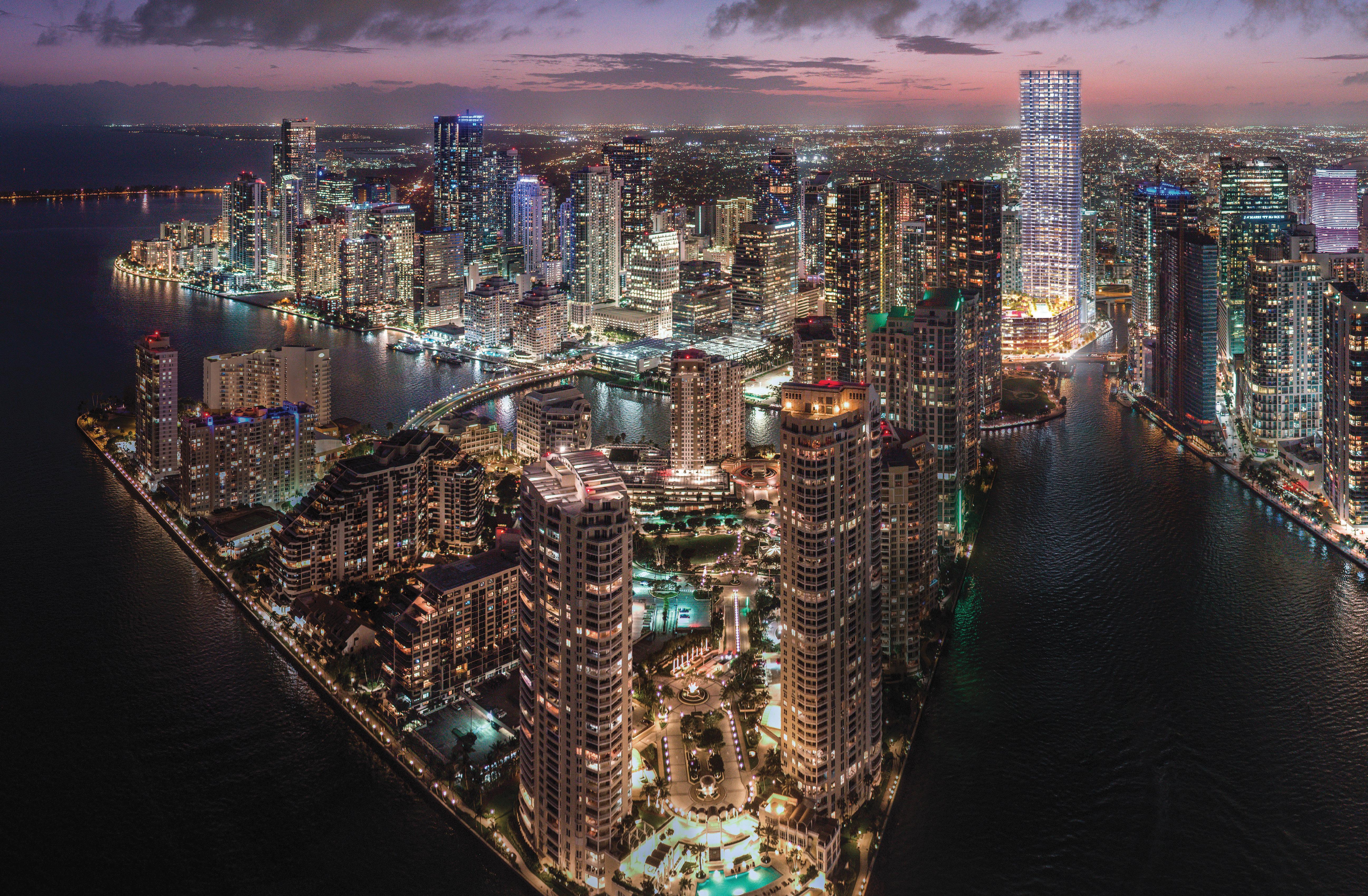






South Florida’s premier tech event, eMerge Americas, drew 24,000 people from 50-plus countries April 18-19, made healthcare and medtech a 2024 priority.
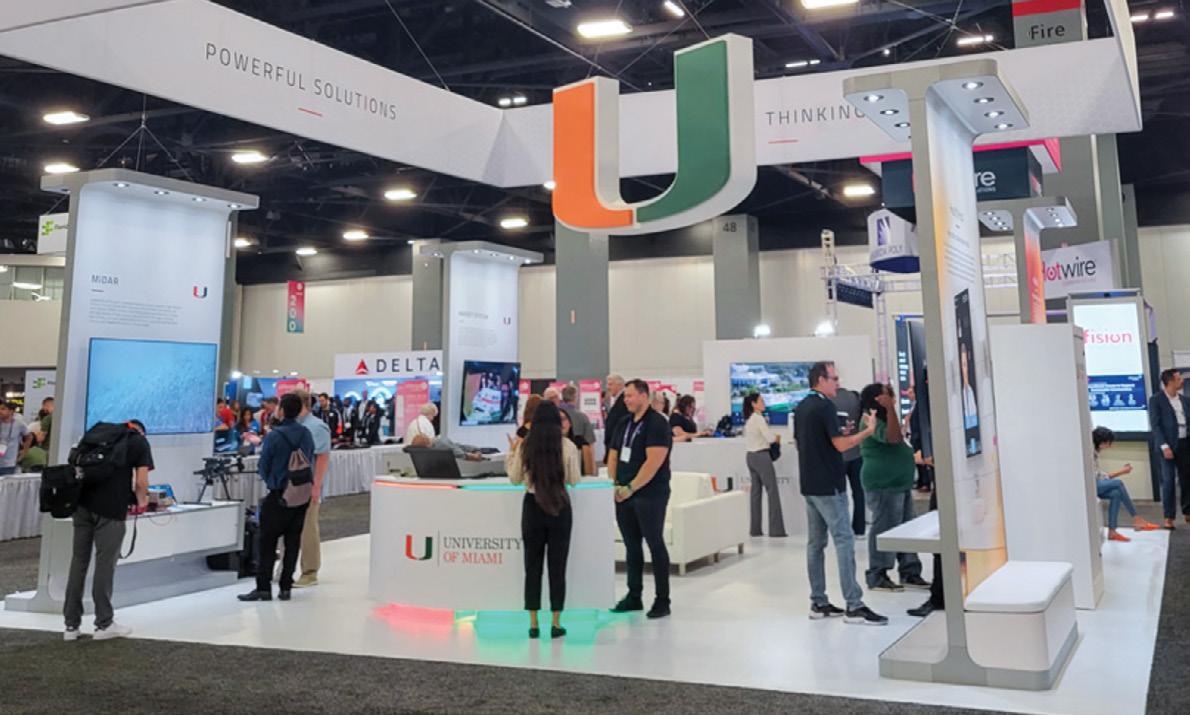
Just before the pandemic, alternative investment giant Blackstone concluded that Miami would be a perfect fit for a second HQ. The move, led by Managing Director and Technology Officer Josh Schertzer, helped transform the city.
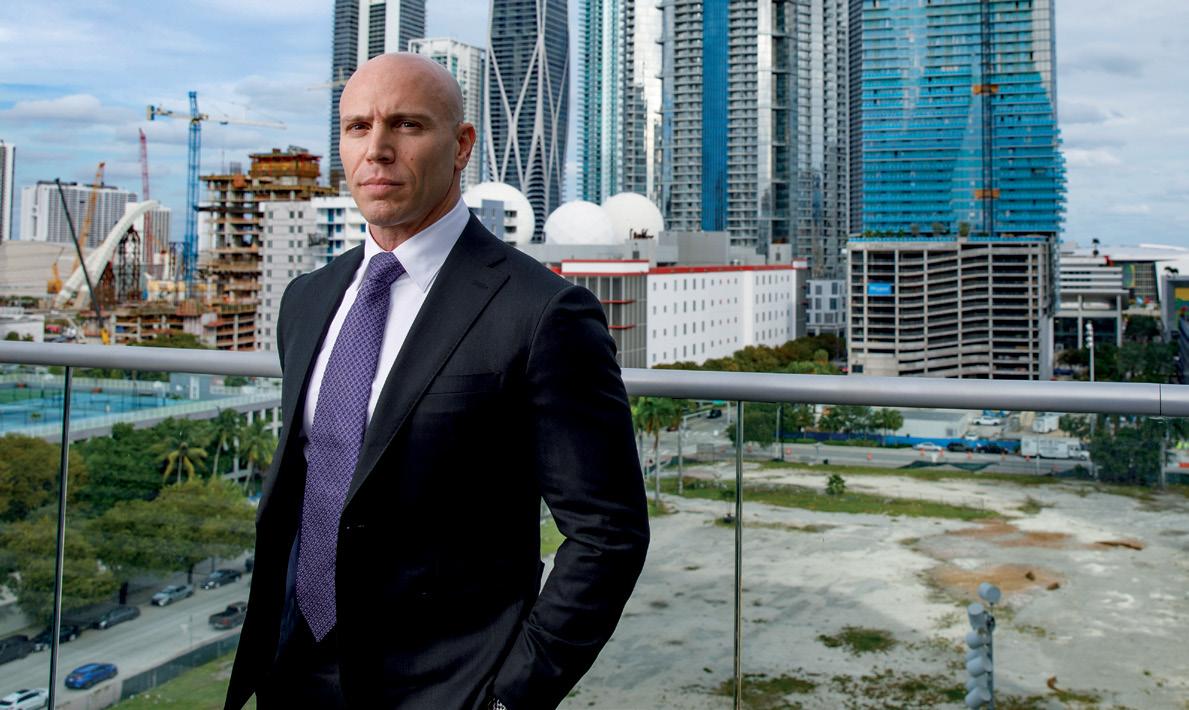
THE 2024 TRADE REPORT
World Trade declined last year, but the Miami Customs District did not experience a similar downtrend. Instead, the combined air and seaports of South Florida exhibited resilience and sustained growth in 2023, albeit slender.

Trade and investment between Chile and U.S. continue to grow as the Free Trade Agreement between them enters a third decade. Since the signing of the FTA, bilateral trade in goods and services between the U.S. and Chile has increased by fivefold, reaching nearly $49 billion last year.

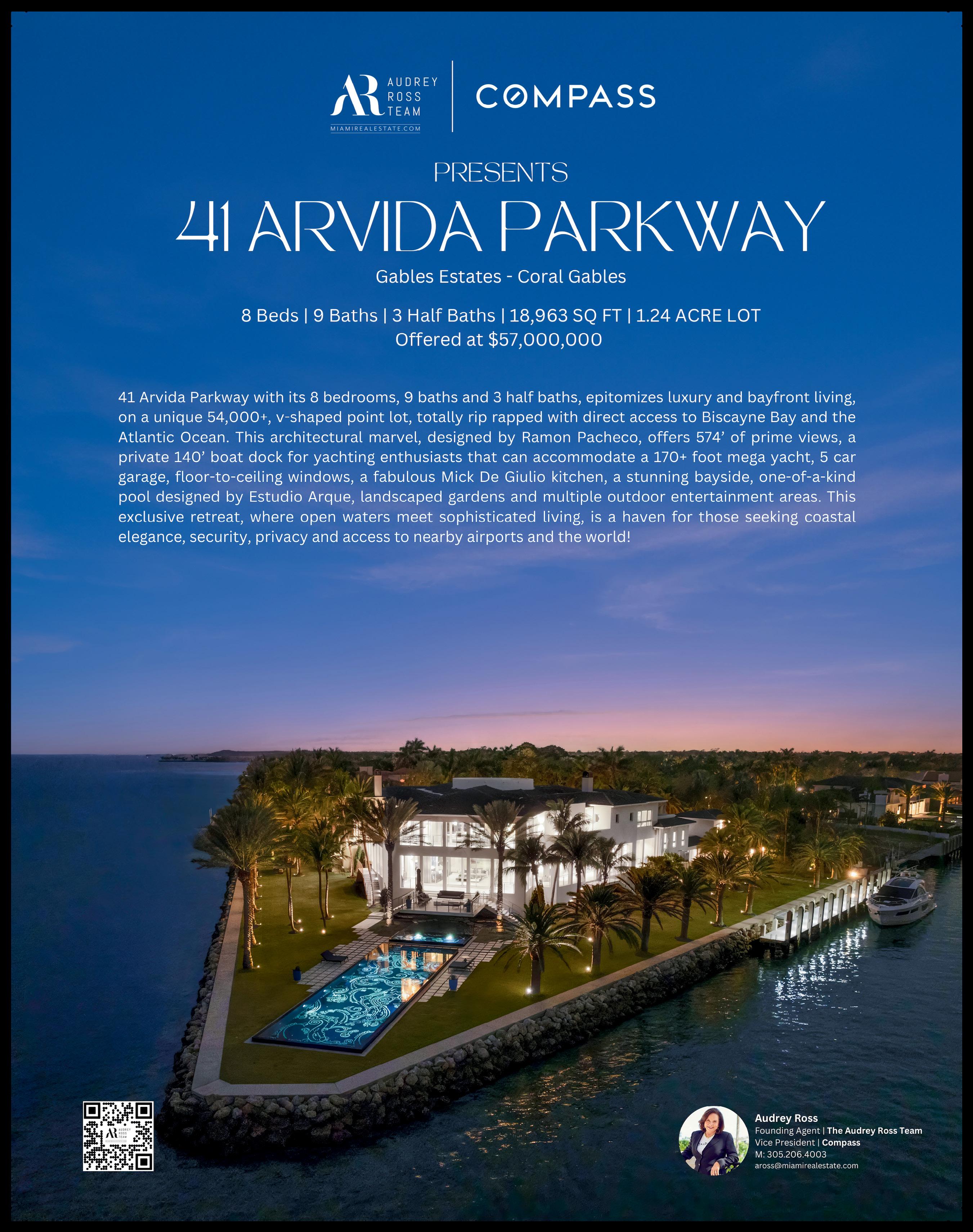
Our cover story this month is about the arrival of Blackstone, a cutting-edge alternative investment company that is symbolic of the New Miami. Our other stories are also reflections of how the city has become the darling of high technology and global interconnectivity. It is truly astonishing what is happening in Greater Miami today. It is, however, important to step back and understand how we got here. It’s always interesting to see how individual events can eventually create major consequences.
Today we are reaping huge benefits from the decisions and hard work of a handful of individuals who had the vision, talent, political and business clout – and yes, the money – to turn South Florida from a tourist destination and retirement “village” into what has become a powerhouse of trade, finance, innovation, and investment. This metamorphosis didn’t happen overnight but rather over decades of determined efforts, combining the strengths of the public and private sectors. It started in the ’60s and the ’70s, was reinforced in the ’80s and matured in the ’90s. Years ago, yes. But we wouldn’t have the economic success we enjoy today if not for those beginning steps.
Consider this. Cuba is taken over by Fidel Castro in the 1960s. The “first wave” of Cubans migrate to Miami. Consequence? That makes us a bi-lingual city, putting us on the road to pan-hemispheric trade.
After the influx from Cuba, a brilliant mayor, Maurice Ferré, has the vision that Miami can become a global city and the gateway to the Americas. In the 1970s he creates a team: Carmen Lunetta at the seaport, Dick Judy at the airport, Roy Kenzie at the DDA, and Charlotte Gallogly at the Office for International Development (which the mayor also created). His instructions were to make it happen.

In parallel to the creation of the international “A” team, another major event occurs, which at the outset seemed perilous to the economy. Eastern Airlines, the largest private sector employer at the time with 25,000 jobs, goes bankrupt. Consequence? American Airlines buys the Eastern routes into the Americas.
American brings in a remarkable head of the Americas Division, Peter Dolara, who had the vision, tenacity, and the managerial skills to make it work at a remarkable level of success. Miami International is now the hub for American Airlines and the dominant player for Latin American connectivity. While the above is happening, another unique opportunity develops, stemming from The Edge Act of 1919. This allows national banks to engage in international banking through subsidiaries chartered by the Federal Reserve System. In short, in the 1980s there was a huge expansion in Miami of foreign banks. Consequence? It created the “Wall Street” of Miami – Brickell Avenue – which, for a period, housed more international banks than Los Angeles. We now had the capability to handle international finance at a level unpresented in the history of Miami.
So, years ago, individual events conspired to develop an economic foundation by creating the “economic engines” that make Miami and South Florida the Gateway to the Americas – as it is called today. Planning. Determination. A bit of luck. Disparate successes conflating to produce one of the most successful environments for trade, investment, and global business. One thing does lead to another, sometimes with amazing results.
 RICHARD ROFFMAN PUBLISHER GLOBAL MIAMI MAGAZINE
RICHARD ROFFMAN PUBLISHER GLOBAL MIAMI MAGAZINE

PUBLISHER
Richard Roffman
EDITOR-IN-CHIEF
J.P. Faber
ASSOCIATE PUBLISHER
Gail Feldman
SENIOR VICE PRESIDENT INTERNATIONAL
Manny Mencia
DIRECTOR OF OPERATIONS
Monica Del Carpio-Raucci
SALES AND PARTNERSHIPS
Sherry Adams
Amy Donner
Andrew Kardonski Gail Scott
MANAGING EDITOR
Kylie Wang
ASSOCIATE EDITOR
Yousra Benkirane
WRITERS
Karen-Janine Cohen
Andrew Gayle
Doreen Hemlock
Joe Mann
Harriet Mays Powell
Katelin Stecz
ART DIRECTOR
Jon Braeley
PHOTOGRAPHERS
Rodolfo Benitez
Jonathan Dann Tiege Dolly
PRODUCTION DIRECTOR
Toni Kirkland
CIRCULATION & DISTRIBUTION
CircIntel
BOARD OF ADVISORS
Ivan Barrios, World Trade Center Miami
Ralph Cutié, Miami International Airport
Gary Goldfarb, Interport
Bill Johnson, Strategic Economic Forum
Roberto Munoz, The Global Financial Group David Schwartz, FIBA
EDITORIAL BOARD
Alice Ancona, World Trade Center Miami
Greg Chin, Miami International Airport
Tiffany Comprés, Pierson Ferdinand Paul Griebel, Venture for America
James Kohnstamm, Miami-Dade Eco. Dev. John Price, Americas Market Intelligence
Stacy Ritter, Visit Lauderdale
TJ Villamil, Select Florida
COVER
Josh Schertzer, Blackstone
Photo by Rodolfo Benitez
Global Miami Magazine is published bi-monthly by Global Cities Media, LLC. 1200 Anastasia Ave., Suite 217, Coral Gables, FL 33134. Telephone: (305) 452-0501. Copyright 2024 by Global Cities Media. All rights reserved. Reproduction in whole or part of any text, photograph, or illustration without o\prior written permission from the publisher is strictly prohibited. Send address changes to subscriptions@ globalmiamimagazine.com. General mailbox email and letters to editor@globalmiamimagazine.com

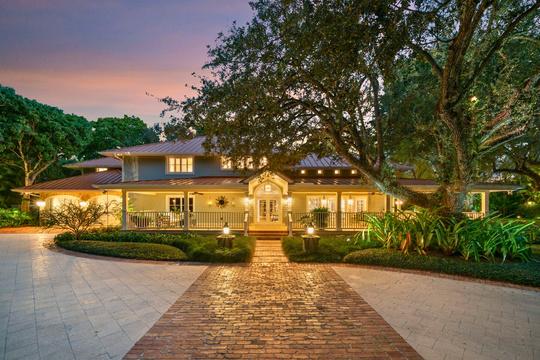

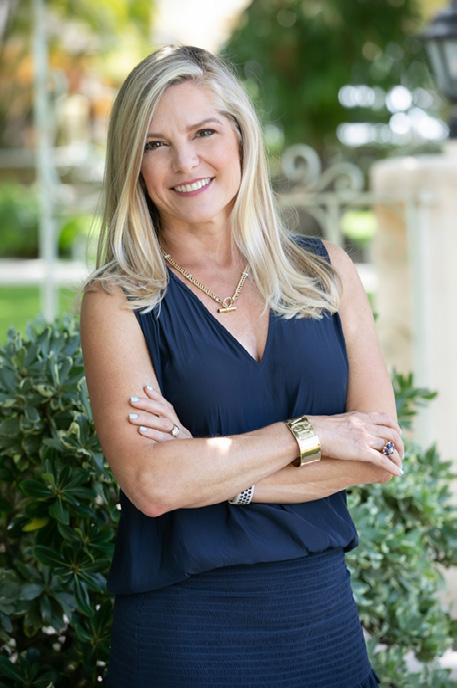

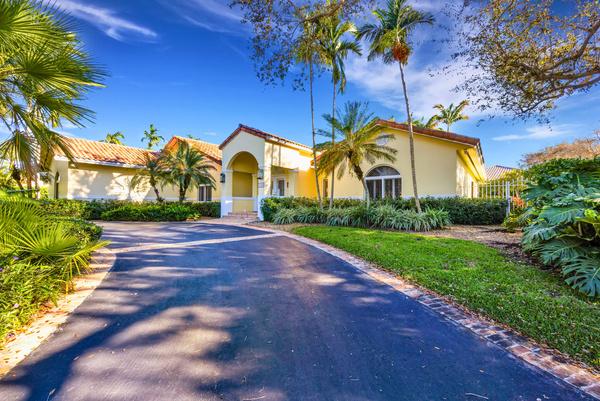
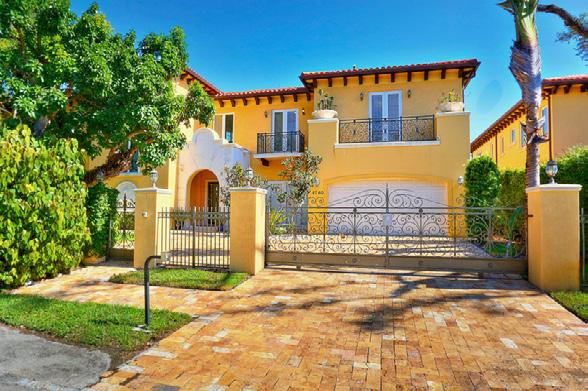






American Airlines has debuted the first nonstop flight from Miami to Ian Fleming International Airport in Jamaica’s tourism center Ocho Rios. The flight will begin operating every Wednesday and Saturday. Previously, visitors to Ocho Rios had to land in Montego Bay and drive an hour and a half. - Condor Airlines, a German lowcost carrier, launched direct flights between Miami and Frankfurt. Originally planned for May, the airline advanced its launch date to April, betting on a vibrant summer season and a surge in travelers from Miami to Europe. - Spanish low-cost airline Level has launched flights to Barcelona from MIA, operating three times a week
EQI Investimentos, a Brazilian advisory firm, has announced the launch of an RIA (Registered Investment Advisor) in Miami, marking a strategic move in its global expansion efforts. With over $5.6 billion in assets, the group aims to attract new clients and broaden its product portfolio through the new U.S.-based operation. In related news, Spanish multinational BBVA is awaiting approval from the SEC to begin operating an RIA in Miami to provide wealth management services to ultra-high-net worth clients.
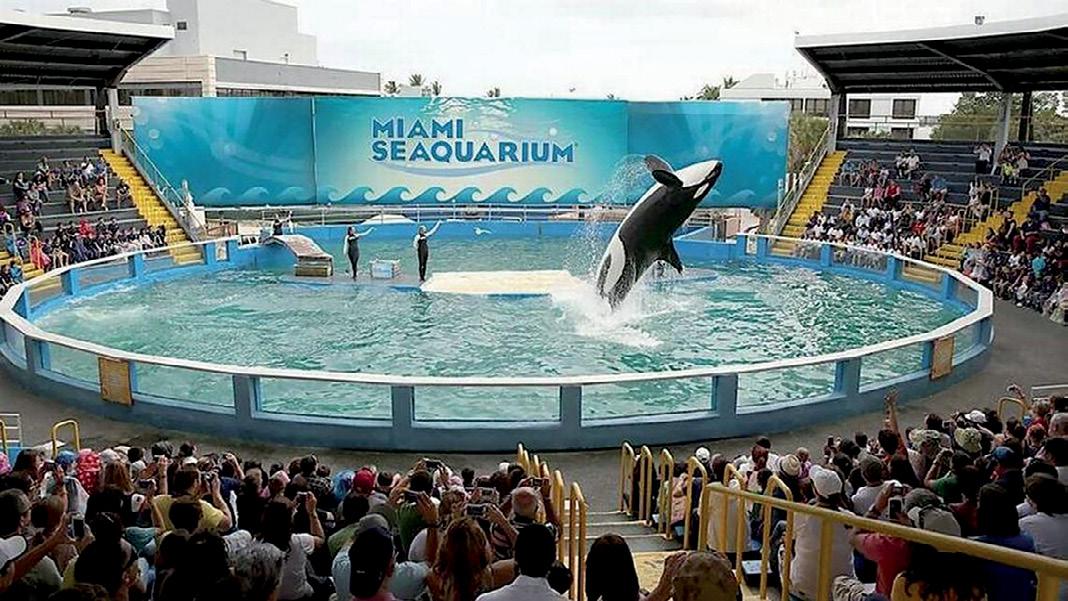
Miami-Dade County has ended Miami Seaquarium’s lease due to recurring animal welfare violations found in USDA inspections. The Seaquarium, owned by Mexican-based The Dolphin Company and leased from the county, is required to vacate its waterfront property this month. The Dolphin Company purchased the park in 2022.
CONDO BY CHINESE DEVELOPER
JDL Development obtained a $160 million construction loan for
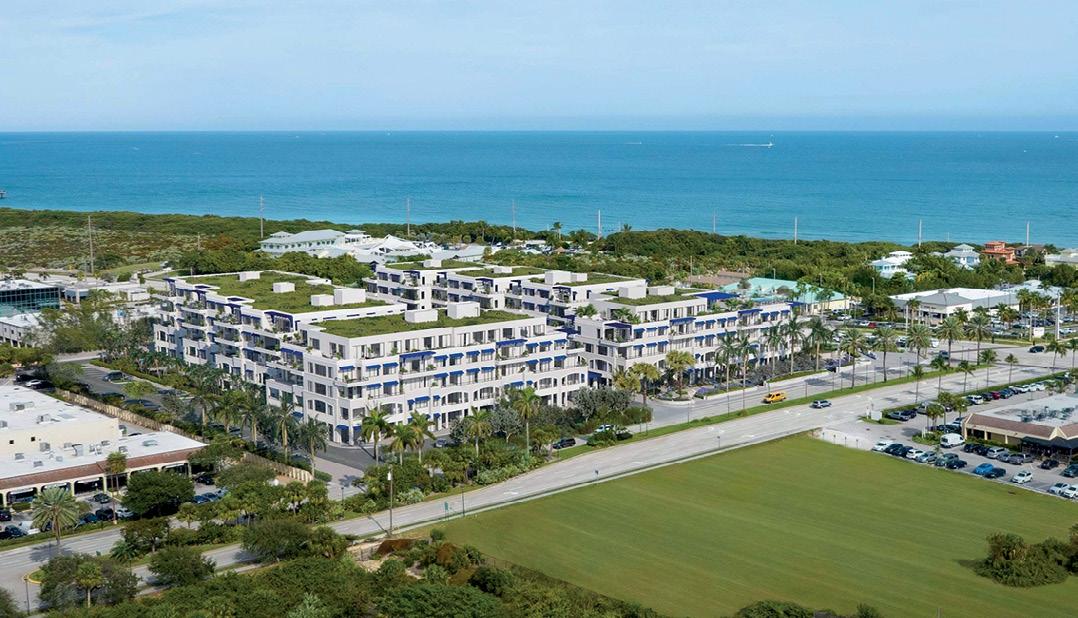
its Caretta condo project after partnering with Chinese developer Wanxiang. Investment in Florida real estate by Chinese companies has seen a decline following Gov. Ron DeSantis’ signing of a law in 2023 that restricts companies with over 5% ownership by the government of China, a Chinese company, or a Chinese national without U.S. citizenship or permanent residency from purchasing real estate in Florida.
Brazilian digital bank Inter&Co and Miami-based real estate developer Resia have launched a private equity fund aimed at investing in affordable housing projects. The Inter Resia Opportunity Fund I has successfully secured $30 million in capital for the development of Resia Golden Glades, an affordable housing initiative in Northern Miami.

GSO Aviation, a company specializing in aircraft maintenance, repair, and overhaul (MRO), has signed a lease agreement for a 15,090 sq ft. industrial warehouse adjacent to Miami International Airport. The company provides MRO services for commercial aircrafts manufactured by France’s Airbus, U.S.’ Boeing, Canada’s Bombardier, and Brazil’s Embraer.
Dubai’s DP World has inaugurated its Miami freight forwarding office, part of a series of over 100 global expansions aimed at aiding customers in navigating international trade. The newly opened office, now employing 1,000 staff, complements DP World’s existing workforce of 108,000 and is expected to expand further in the next year.
Guyana’s World Trade Center has signed a Memorandum of Understanding (MoU) with the World Trade Center Miami. This agreement sets the stage for networking, market access, and support

for trade missions between the two regions. The MoU was signed by Executive Director of World Trade Center Guyana, Wesley Kirton (center), and Chief Executive Officer of World Trade Center Miami, Ivan Barrios (right), during a virtual meeting held in Miami.
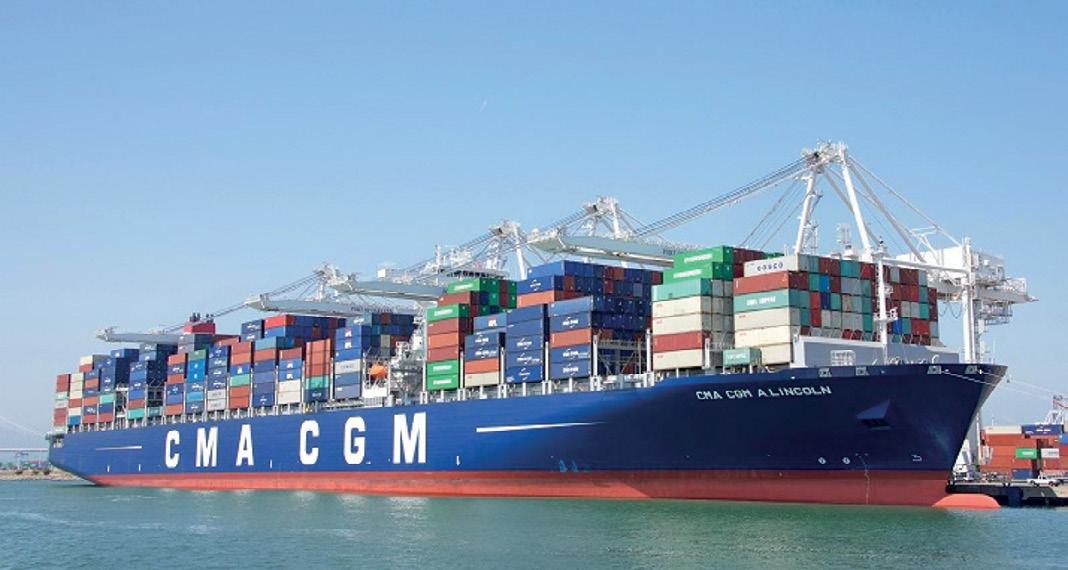
PortMiami welcomed the CMA CGM Bali, a large container ship boasting a capacity of 15,000 TEUs. Its arrival signifies the enduring strength of maritime trade in the area, operating on the vital Manhattan Bridge route, which serves as a pivotal connection between China and U.S. East Coast ports.

IAG Cargo, the cargo division of International Airlines Group (IAG), has announced a new service between Barcelona and Miami. The route is running three times a week to Miami International Airport, increasing to four from June to September.
Enfinity Global Inc., a Miami-based leader in renewable energy, has confirmed the completion of a minority sale within its 400 MW U.S. portfolio to Kyushu Electric Power Co. Inc., a major Japanese firm. Kyushu now holds a 40% equity stake in the portfolio, while Enfinity Global will maintain 60% ownership and management.
The innovation lab of the Inter-American Development Bank (IDB) Group, IDB Lab, and TechnoArt, a global platform for technology startups, has launched Miami LAC Gateway. The program is designed for Latin American and Caribbean companies that want to venture into the U.S. market.
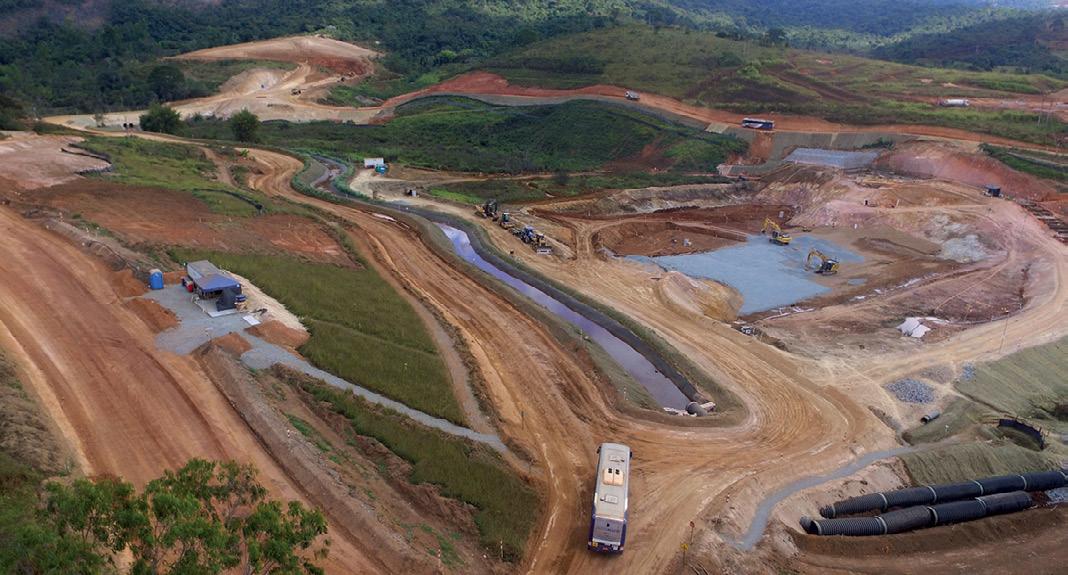
Miami’s Flacks Group, led by Michael Flacks, has completed the acquisition of Paris-based Imerys’ Brazilian mining operations, with the transaction amount undisclosed. The mining operations generate about $400 million in revenue and employ over 1,000 people. The Flacks Group assets exceed $4 billion with revenue of $1 billion. Michael Flacks, originally from the UK, has an office in Brickell with 20 employees.
JetBlue is discontinuing several routes as part of cost-cutting measures following its blocked $3.8 billion acquisition bid for Spirit Airlines earlier this year. The airline will cease flights between Fort Lauderdale-Hollywood International Airport and Bogotá, Colombia; Quito, Ecuador; and Lima, Peru.

The NFL has announced that the Miami Dolphins have secured marketing rights in three additional countries – Argentina, Colombia, and Mexico – through the Global Markets Program. With this expansion, the Dolphins are one of two teams holding agreements in six global markets, which already included Brazil, Spain, and the United Kingdom. The Dolphins now dominate in Spanish-speaking regions, surpassing any other NFL team.
UK-based services specialist AerFin has opened a new facility for airframe and engine parts in Miami. The new facility, located close to Miami International Airport, will house inventory for Boeing, Airbus, and Embraer airframe products. l
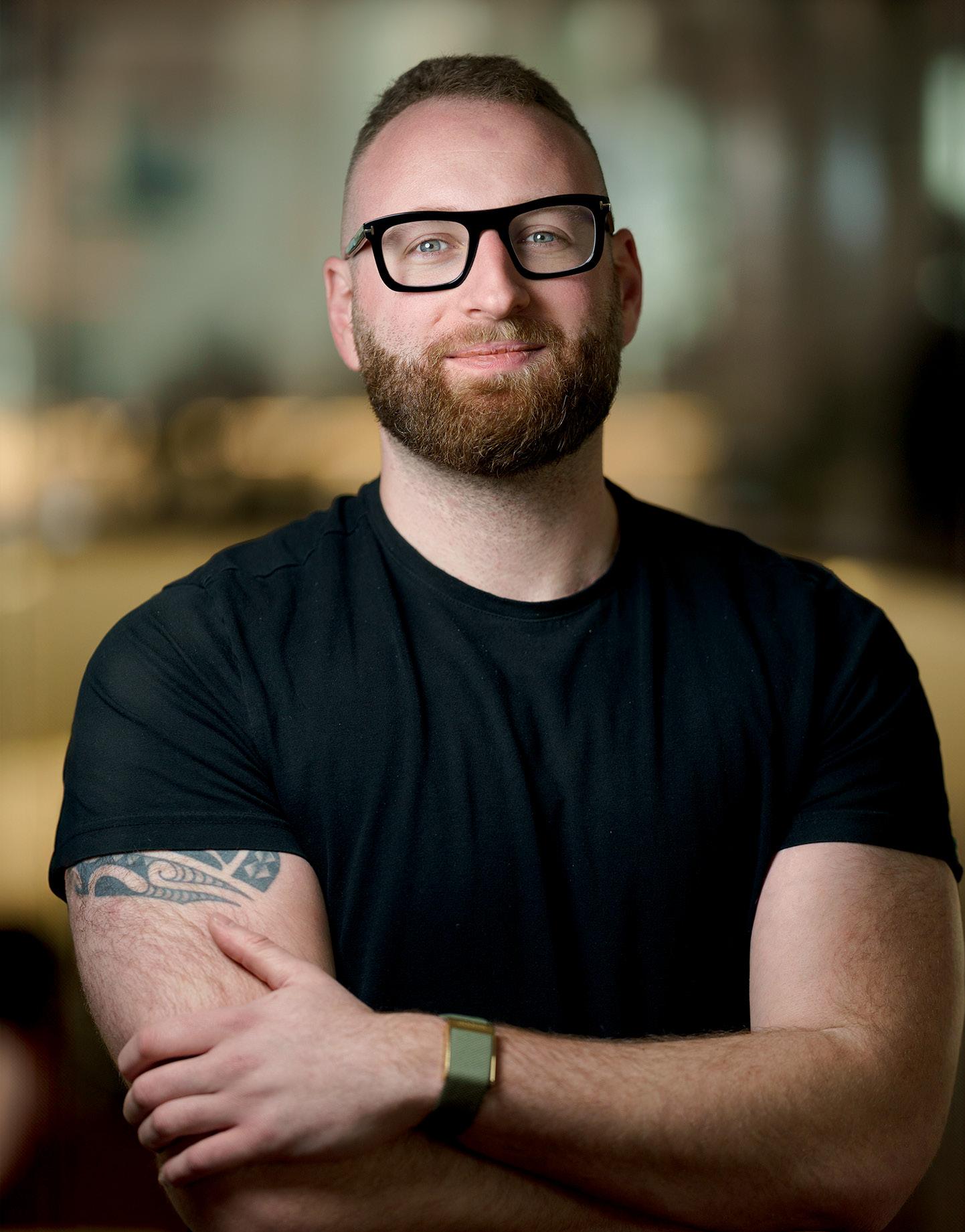
When Roei Samuel was looking to expand his UK-based start-up platform Connectd to the United States, Miami seemed like the obvious place to begin. Outside of direct flights to London, nice weather, and a favorable tax climate, the city’s status as a burgeoning tech hub made it a perfect launching pad.
Samuel founded Connectd in 2020 after previously investing in several startups. That experience convinced him there was a correlation between startups that performed well and two key ingredients: Frequent interactions with investors and access to a network of experts. So, he founded Con-
nectd to “connect” the triad of players in the start-up ecosystem: founders, investors, and experts. The platform was designed with that simple mission in mind – to help founders streamline their financial reporting, meet new investors, and gain access to experts who could help jumpstart their company. Investors were also given the chance to back start-ups that regularly report.
After initial success in London’s bustling start-up community, Samuel had considered expanding into the U.S. via Silicon Valley. But that start-up community seemed too entrenched compared with Miami. “In emerging tech ecosystems like Miami, there
In emerging tech ecosystems like Miami, there are so many new entrants. There are so many new players, so many new people coming to town and being able to discover people is key for us.
ROEI SAMUEL, LEFT, FOUNDER OF CONNECTD IN THE UKare so many new entrants. There are so many new players, so many new people coming to town,” says Samuel. “And being able to discover people is key for us.”
Connectd is one of a profusion of UKbased companies that are finding success in Miami. In recent years, particularly post-Brexit, there has been an uptick in UK companies expanding to South Florida, paralleling the larger trade relationship between the UK and Florida as a whole.
From the approximately one million British tourists that visit Florida every year to British companies that employ roughly 70,000 people in the state, it’s clear that economic ties between the UK and Florida run deep. In 2022, bilateral trade between the UK and Florida totaled $5.8B, growing 119% over the preceding five years and making the UK Florida’s 8th largest trading partner. The lion’s share of that trade roared through Miami that year – some $4.89B – and though it tapered off by some $640M last year (due largely to a 43.3% decrease in packaged medication exports to the UK) it was still significant enough to prompt Governor Ron DeSantis to sign a Memorandum of Understanding (MoU) with the UK last year to further facilitate trade.
Although not a legally binding contract, the MoU serves to bolster bilateral trade by reducing barriers to entry and streamlining the process for UK companies to do business in Florida and vice versa. Outside of trade, its goals are to grow academic partnerships between institutions in the UK and Florida and promote cooperation in high-priority sectors like aerospace technology, fintech, legal services, medtech, supply chain logistics, transport, infrastructure, and agricultural biotechnology.
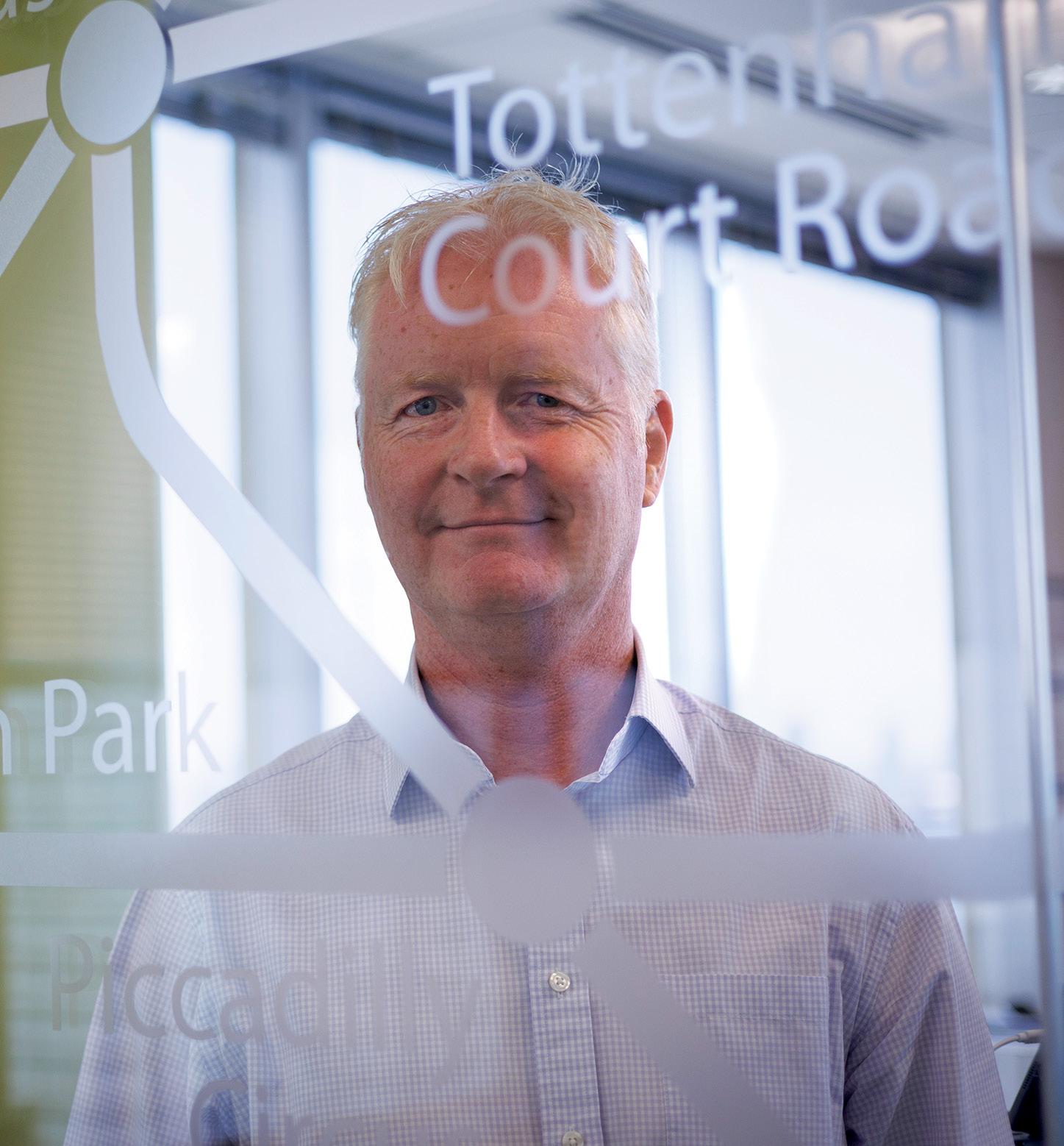
“The political outreach and engagement are really important,” says the UK’s Consul General in Miami, Rufus Drabble. “British FDI [Foreign Direct Investment] is still number one in Florida… and I’m delighted to say we’re [also] number two in terms of international tourists to Florida, including Miami. Sadly, the Canadiens consistently beat us, not that we have a competition. But the Brits bring a lot of money. We tend to spend more… In 2021, British tourists spent $323 million in Miami-Dade County.”
More to the point for Miami’s future as a tech hub are British companies investing in innovative niche areas. Like some of the priorities listed in the MoU, UK-Miami trade and investment mostly center around fintech, aviation and aerospace, as well as medtech. Last year, top exports to the UK through Miami included packaged medications ($1.28B) and aircraft parts ($237M), while top imports included gas turbines ($359M). That was followed by hard liquor ($238M), with growing imports of British-made alcoholic beverages (see story pg. 20).
“We’re not trying to do everything that we’re good at, but we’re trying to pick a few where we think, not only can we add value
British Foreign Direct Investment is still number one in Florida… and I’m delighted to say we’re [also] number two in terms of international tourists to Florida, including Miami.
RUFUS DRABBLE, ABOVE,CONSUL GENERAL IN MIAMI FOR THE UK
collaboratively for both UK and Florida companies, but we’re trying to get ahead of the curve – not just invest in what’s happening now but where we think things are going to go,” says Drabble.
Fintech company Floww is another example of a UK-based company that’s looking to capitalize on Miami’s emergence as a tech hub and the VC dollars it attracts. The company recently opened an office in Miami to expand its London operation. Floww’s goal is to make investing in
MIAMI CUSTOMS DISTRICT TRADE WITH UK
EXPORTS
2023: $2.09B (DOWN 30% FROM 2022)
2022 $2.99B (UP 270% FROM 2021)
2021: $808M (UP 64.9% FROM 2020)
2020: $490M
TOP EXPORTS 2023:
1. PACKAGED MEDICATIONS: 61.3% ($1.28B)
2. AIRCRAFT PARTS: 11.3% ($237M)
3. PAINTINGS: 4.2% ($88M)
4. GAS TURBINES: 2.15% ($45M)
5. OPTICAL FIBERS & BUNDLES: 1.68% ($35.3M)
Changes: Aircraft parts to the UK rose 17.2 from the previous year, medication down 43.3% IMPORTS
2023: $2.16B (UP 13.7%)
2022: $1.9B (UP 2.68%)
2021: $1.85B (UP 28.3%)
2020: $1.44B
TOP IMPORTS 2023:
1. COMMODITIES NOT SPECIFIED: 19.7% ($426M)
2. GAS TURBINES 16.6% ($359M)
3. HARD LIQUOR: 11% ($238M)
4. RECREATIONAL BOATS: 9% ($195M)
5. REFINED PETROLEUM: 7.22% ($156M)
Changes: Hard liquor grew 10.5% over the last year, boats up 27.2%, petroleum up 1.57k%, gas turbines down 31.3%
Source:
private companies as easy as publicly traded companies. By combining regulatory, legal, data, and workflow solutions, the company’s goals are to reduce the complexity of private markets and open new capitalization routes for private companies, assets, and funds. With Miami’s growing start-up ecosystem, shared language, daily direct flights, and business-friendly environment, it made sense for Floww to expand via Miami rather than New York or California.
The presences of companies like
As Miami has matured and developed more of an international business community, there’s just been an organic and natural growth of the British investment in South Florida.
DAVID ARCHER, PRESIDENT OF THE BRITISH AMERICAN BUSINESS COUNCIL, AND ATTORNEY FOR HINSHAW & CULBERTSON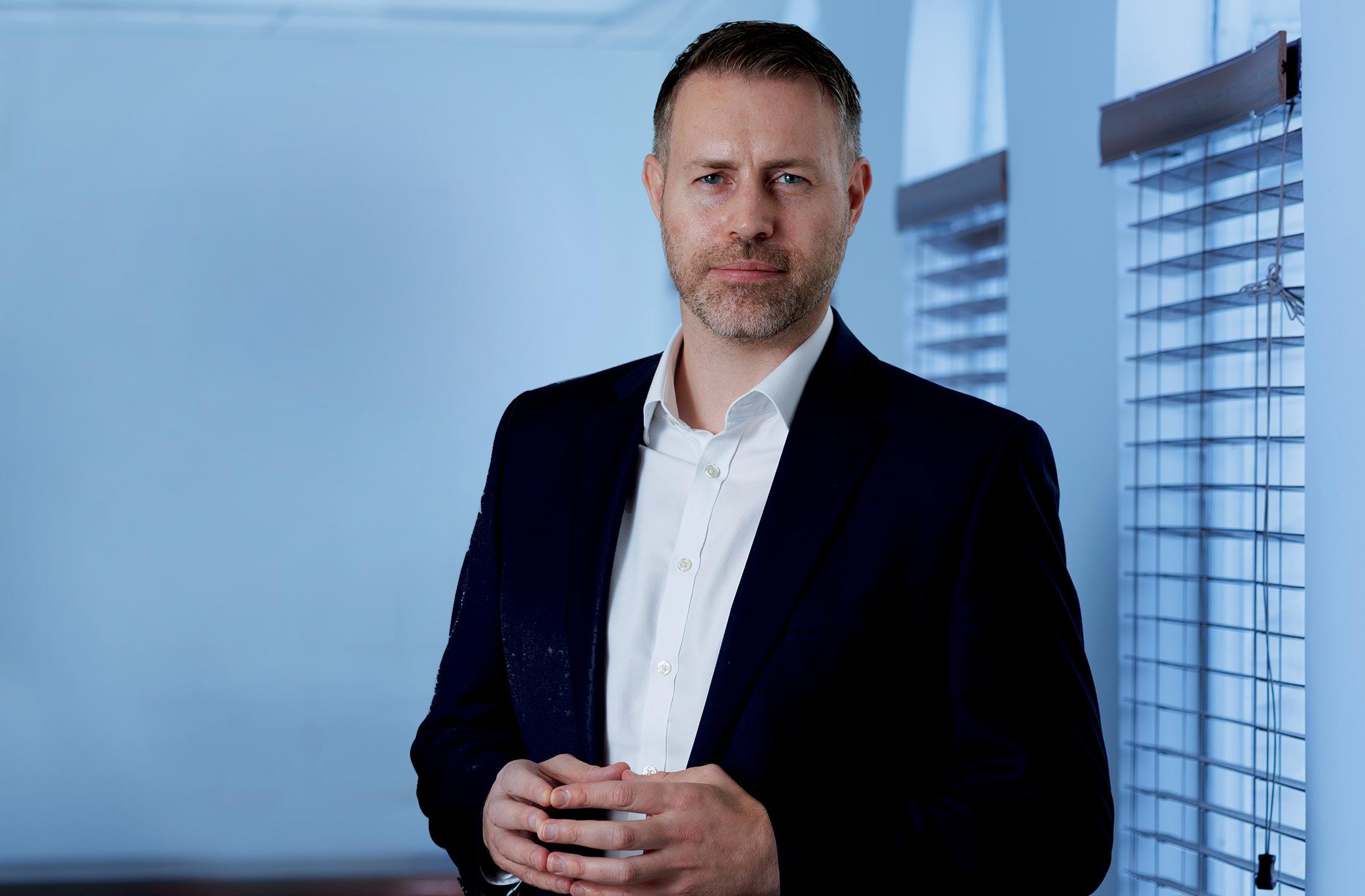
Connectd and Floww represents a growing exchange of ideas and collaboration between the UK’s own global tech hub, London, and Florida’s Miami. “As Miami has matured and developed more of an international business community, there’s just been an organic and natural growth of the British investment in South Florida,” says British- native David Archer, President of the British American Business Council, and attorney for Hinshaw & Culbertson. “I think part of it is that Florida is pretty open for business, whereas a lot of other places have more restrictive regulations. [Consequently] we’ve seen a lot of new businesses coming into South Florida from the UK.” Connectd and Floww exemplify the fintech firms coming out of the UK and how they can benefit Miami’s tech ecosystem in particular and Florida in general.
“The UK has a strong reputation in innovation and tech companies. And we’re seeing more of that cross-pollination between the UK and South Florida,” says Tansy Jefferies, tax advisor for RSM and treasurer of the British American Business Council. “The [British] government was recently here in Florida, and one of the areas of focus in that discussion was the fintech industry. It’s something that the
UK PARENT COMPANY
AON PLC (Professional Services)
BARCLAYS BANK (Financial Services)
SOUTH FLORIDA SUBSIDIARY
AON HEWITT
BARCLAYS BANK
DELOITTE TOUCHES TOHMATSU INTL. (Professional Services) DELOITTE
DIAGEO PLC (Beverages)
DIAGEO NORTH AMERICA
EY ERNST & YOUNG GLOBAL LIMITED (Professional Services) ERNST & YOUNG
HSBC HOLDINGS PLC (Financial Services)
HSBC BANK USA, N.A.
PRINCES YACHTS INTERNATIONAL PLC (Manufacturing) PRINCESS YACHTS
governments on both sides are recognizing and aiming to find ways to help businesses collaborate and do business more easily across jurisdictions.”
And while Miami is the spigot through which most the trade between UK and Florida passes, it is also the state as a whole that intrigues British investors.
“Florida has one of the largest economies of any U.S. state, with a recipe for success that includes a low-tax/low-regulation environment, a strategically important location, and a diverse set of industries with nationally important clusters spread across the state. This is an attractive prospect for UK companies looking to break into the
U.S. market. With over $30 billion in VC investment raised in Florida since 2018, the state is among the leading states in the U.S. for tech investment,” says Harrison Lance, senior trade & investment officer at the British Consulate in Atlanta.
UK Secretary of State Kemi Badenoch echoed Lance’s remarks at the MoU signing with DeSantis. “Florida is a major economy in its own right, with a bigger GDP than most European countries,” said Badenoch. “From launching satellites to developing the latest fintech software, Florida’s leading high-tech companies offer huge opportunities to the UK’s rapidly expanding tech sector.” l

At PNB, we envision a community where every individual, regardless of their circumstances, has both hope and opportunities. We are committed to being part of the nurturing ground where compassion meets action, fostering a Miami where everyone has the chance to thrive.
That dedication stems from a core belief that we are more than just an institution serving our community; we are a team that believes in building a brighter, more inclusive future. We proudly support charities dedicated to touching lives profoundly - be it providing a haven for the unhoused, offering a guiding hand to individuals with autism, or bringing a ray of light into the lives of Alzheimer’s patients and their families.
Together with organizations that share our vision, we strive to give back to the place that has given us so much, to be one link in a network of love that resonates with the vibrant spirit of Miami.



Last month Lucky Cat, Gordon Ramsay’s new restaurant in Miami Beach, received some special visitors. Amid the velvet booths, Art Deco light fixtures, and sultry atmosphere, the couple behind the world’s first commercially available sheep’s milk vodka introduced their spirit to the U.S. market.
In 2018, Tim Spittle and his wife Tanya Spittle faced the prospect of losing their second-generation sheep farm. Tim had grown up on the farm tending sheep with his father and grandfather and couldn’t imagine the loss. Then, when couple was sipping vodka tonics on vacation in Spain, they figured out how to save the farm. “We both had a light bulb moment where we wondered, ‘Can we make vodka from sheep’s milk?’” says Tim.
The Spittles had heard about cow’s milk vodkas before but knew there was no sheep’s milk vodka on the market. So, when they got home, they began working out the logistics. The Spittles were already partnered with a local cheese maker who milked their sheep in return for the curds. When cheese is made from milk, 20 percent is separated into the curd; the other 80 percent is whey, a sugar-rich liquid that remains after the milk is curdled and strained. The Spittles thought to ferment it into vodka.
Blacklion Vodka officially launched in the U.K. and Europe in 2021, and in 2022 won Best International Vodka at the ADI International Spirits Competition. Along the way it became a favorite of celebrity chef Gordon Ramsay. The Spittles say that’s because of its sweet, creamy taste, with notes of toffee and caramel – and because of its unique origin.
The Spittles have just over 2,000 sheep on their farm in England’s Cotswolds. Many are commercial British dairy sheep and Swiss Valais Blacknose sheep. A cross between the two produced Blacklion sheep, which Tim says produce a higher quality milk.
Blacklion Vodka came to Miami first as part its nationwide “Flockstars” tour to increase U.S. brand awareness. “For us, Miami is this wonderful machine of hospitality. You have the best restaurants, the world’s best hotels, the best bars, so it’s a big thing for us to be here,” says Tim. “It’s great visibility for the brand.”
The company kicked off its tour with the Black Cat cocktail, made in collaboration with Lucky Cat, followed by a party at the


You
have the best restaurants, the world’s best hotels, the best bars, so it’s a big thing for us to be here...
TIM SPITTLE, SHOWN TOP LEFT, AT THE U.S. LAUNCH OF BLACKLION VODKA AT THE LUCKY CAT RESTAURANT
ABOVE: TIM SPITTLE AND WIFE TANYA ON THEIR U.K FARM WHERE THEY BREED BLACKLION SHEEP
Miami Beach Botanical Gardens where it showcased its vodka –along with two of the sheep.
Blacklion Vodka is currently expanding operations to the U.S. to better tap into one of the largest vodka-drinking markets in the world. And they’re bringing the sheep with them…at least the embryos. Last year, the company bought a farm and distillery in Kentucky to produce their vodka, but due to livestock importation restrictions, the Spittles couldn’t ship their sheep. Instead, they imported Swiss Valais Blacknose embryos for implantation into 40 selected Dorset Sheep.
In March, the first batch of Blacklion Sheep was born in the Kentucky farm/distillery, and it should start producing vodka next year; until then, everything will be imported. With a combined twenty employees in the UK and the U.S., the company sold several thousand cases last year – a fraction of its potential in the U.S. “We’re currently in Florida,” says Tim. “But in the next three years, when we become fully operational, I imagine we’ll be much bigger.” l

Our personal injury law firm has obtained in excess of a billion dollars in verdicts and recoveries for clients and is recognized as a leader in plaintiffs’ personal injury and wrongful death, class actions, mass torts, and other areas of litigation
Colson Hicks Eidson, one of Miami’s oldest and most accomplished law firms, is considered among the top trial firms in the United States, having won hundreds of multi-million dollar verdicts and settlements for its clients.
–Chambers USA, 2022
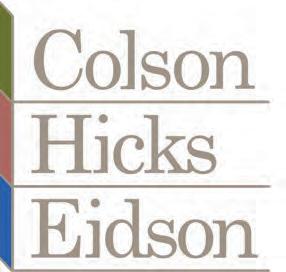
Our personal injury lawyers have a long history of serving individuals, groups of individuals and businesses in a wide range of lawsuits. Our trial attorneys are highly regarded for their depth of legal experience, responsiveness to client concerns and ethical tactics, both inside and outside of the courtroom. Our law firm receives respect throughout the legal community, which recognizes Colson Hicks Eidson for its various distinguished achievements.

We are or have been actively engaged in the following and many other cases:
• Takata Airbags MDL
• Champlain Plaza
• Allergan Biocell MDL
• Monat Marketing MDL
• Parkland Shootings
• Elmiron Eye Injury MDL
• 3M Combat Earplugs MDL
• BP Deepwater Horizon Oil Spill
• Ford Firestone MDL
• Toyota Sudden Acceleration MDL
• Zantac MDL
• Camp LeJeune Contamination Claims


Reggaeton blasts throughout the stadium. The smell of hotdogs and arepas followed by not-so-cheap stadium beer floats through the air as thousands of fans sit on the edge of their seats. All goes quiet when Ricardo Pinto, Venezuela’s starting pitcher, lines up at the mound to throw the first pitch of the game.
This past February, 36,677 fans crowded into the LoanDepot Park stadium to watch the Caribbean Series Championship game: Venezuela vs. the Dominican Republic. The championship game was a sellout, marking the highest turnout for a single Caribbean Series game ever recorded. The previous record occurred earlier that week when 35,972 fans attended the Dominican Republic vs. Puerto Rico game (stadium capacity: 37,000).
After nine days and 25 games featuring seven countries (the four full members of the Caribbean Professional Baseball Confederation: Dominican Republic, Mexico, Puerto Rico, and Venezuela, plus three guest countries: Curaçao, Nicaragua and Panama), the series drew just over 340,000 fans. About forty percent of them were visitors, according to Miami Marlins President of Business Operations Caroline O’Connor.
Aside from generating revenue for the stadium and greater Miami, hosting the Caribbean Series was more than just a promotional opportunity for the Miami Marlins at their home field; it was a strategic move. “It’s something we’ve had in the works for a while, but it’s part of the Marlins’ strategy really to be the home of international baseball. We want to invite people of all cultures and backgrounds in to enjoy baseball at LoanDepot park,” says O’Connor, who is one of only two women in Major League Baseball currently named as president of business operations.
The Caribbean Series is just one of the international baseball series the Marlins have hosted at LoanDepot park. Last year, they hosted the Baseball World Classic, which generated some $267 million in


It’s part of the Marlins’ strategy really to be the home of international baseball...
total economic impact, according to the Greater Miami Convention and Visitors Bureau. Final attendance for the classic was 1,306,414, also the highest in the history of the tournament.
But why should Miami best other cities to become the home of international baseball? According to O’Connor, it’s more than just the city’s baseball culture. Miami is a global destination with premium entertainment, hospitality, food, and sports, juxtaposed between some of the largest baseball leagues in the world: the MLB and various Latin American leagues.
Establishing Miami as the home of international baseball bodes well for the Marlins. Since last year’ World Classic, which preceded the Marlins MLB season,
the team saw an annual attendance growth of 28 percent to 1,162,729 fans at LoanDepot Park. While the World Classic was probably not the only reason attendance rose – the team saw a similar trend the year before – the press and coverage these international tournaments bring creates buzz before the MLB season starts, bolstering the Marlins’ visibility.
This year, the Marlins started their season on March 28, and even though O’Connor won’t put a number on how much attendance may increase, she believes the 2024 season will be promising. While the 2025 Caribbean Series will be hosted in Mexico City, she hopes to secure future Caribbean Series – while again hosting the World Baseball Classic in 2026. l

Nicklaus Children’s Hospital is the top-ranked children’s hospital in South Florida.
Hope and compassionate care fill every room and hallway at Nicklaus Children’s. Innovation and technology support our world-class medical professionals in advancing expert pediatric care to enhance clinical outcomes and the patient experience. It’s no wonder that we maintain our position as the top-ranked children’s hospital in South Florida according to U.S.News & World Report’s 2023-24 Pediatric Rankings. Leading with compassion and extraordinary care, we demonstrate every day why this is where your child matters most.
One of the biggest challenges start-ups face in their early stages is finding the right talent. Not every candidate is cut out for the fast-paced, ever-changing start-up environment, and most start-ups don’t have the budget to hire an eligible candidate with years of experience. That’s where Venture for America (VFA) comes in. The national nonprofit aims to bridge the talent gap in Miami’s start-up community by connecting entrepreneurial-minded college graduates to start-ups seeking affordable and skilled talent.
Paul Griebel, regional account director for VFA in Miami, says that VFA operates with three goals in mind: providing opportunities for college graduates, offering affordable talent for growing companies, and fostering growth in the Miami start-up ecosystem. “We view ourselves as an on-ramp to entrepreneurship for our fellows, and on the other side of that, we offer a talent pipeline solution to grow companies,” says Griebel.
Founded in 2011, the national nonprofit currently has programs in 13 cities across the United States. In 2015, Venture for America expanded to Miami with the support of the Knight Foundation, and since then has had 94 “fellows” complete their fellowships with organizations in Florida.
VFA finds its fellows through an intensive screening and application process. Approximately 140 candidates become fellows each year out of a pool of more than 1,000 applicants. The organization then partners with local and multinational corporations like Las Olas VC, ThriveDX, GoTu, and MyBundle.TV to place its fellows in a range of entry and junior-level jobs.
During their two-year fellowship, fellows gain valuable job experience in a start-up environment while attending workshops, trainings, and networking events with their cohort. The companies that hire them enjoy vetted personnel at below-market salaries (it is an internship, after all). Griebel says that cultivating a talented, highly screened pool of potential employees is tantamount to growing Miami’s start-up community.
After finishing the fellowship, fellows’ profiles are listed on VFA’s site (think of this as a very exclusive LinkedIn). Fellows may choose to continue with the corporation they worked for during their fellowship or embark on their own start-up journey.
Because VFA’s fellowship program provides its corporate partners with capable, motivated employees ready for a realistic start-up environment, VFA fellows are in high demand. Ayal Stern, CEO of ThriveDX US, says that when the Israeli-based company first began moving to Miami in 2018 it was looking for affordable staff that could handle the start-up environment.
“VFA does an amazing job of curating and filtering. We get great people that are willing to work hard, that are super smart, and it’s cost-effective. Check, check, check,” he says. Stern mentions that a former 2019 VFA fellow that ThriveDX hired is now the compa-

We view ourselves as an on-ramp to entrepreneurship for our fellows, and on the other side of that, we offer a talent pipeline solution to grow companies.
ny’s current vice president of operations. Griebel says VFA’s ideal candidate is someone who has a “passion for entrepreneurship and innovation” and has earned a four-year degree within the last three years. However, candidates need not have a business background to apply. In fact, having a diverse group of candidates with different skill sets gives Miami’s start-up community access to creative talent that can solve some of the complex challenges that start-ups face.l
Hosted by 3 time All-Star NCAA/NBA Champion and NBA Legend Glen Rice
Friday, May 17th
Normandy Shores Golf Club 2401 Biarritz Drive, Miami Beach, FL 33141 and
The Spa at St. Regis 9703 Collins Avenue, Miami Beach, FL 33154
Registration, Range Practice & Box Lunch – 11:30 AM
Shotgun – 1:00 PM
Cocktail Reception and Putting Contest – 5:30 PM
Followed by Buffet Dinner and Awards
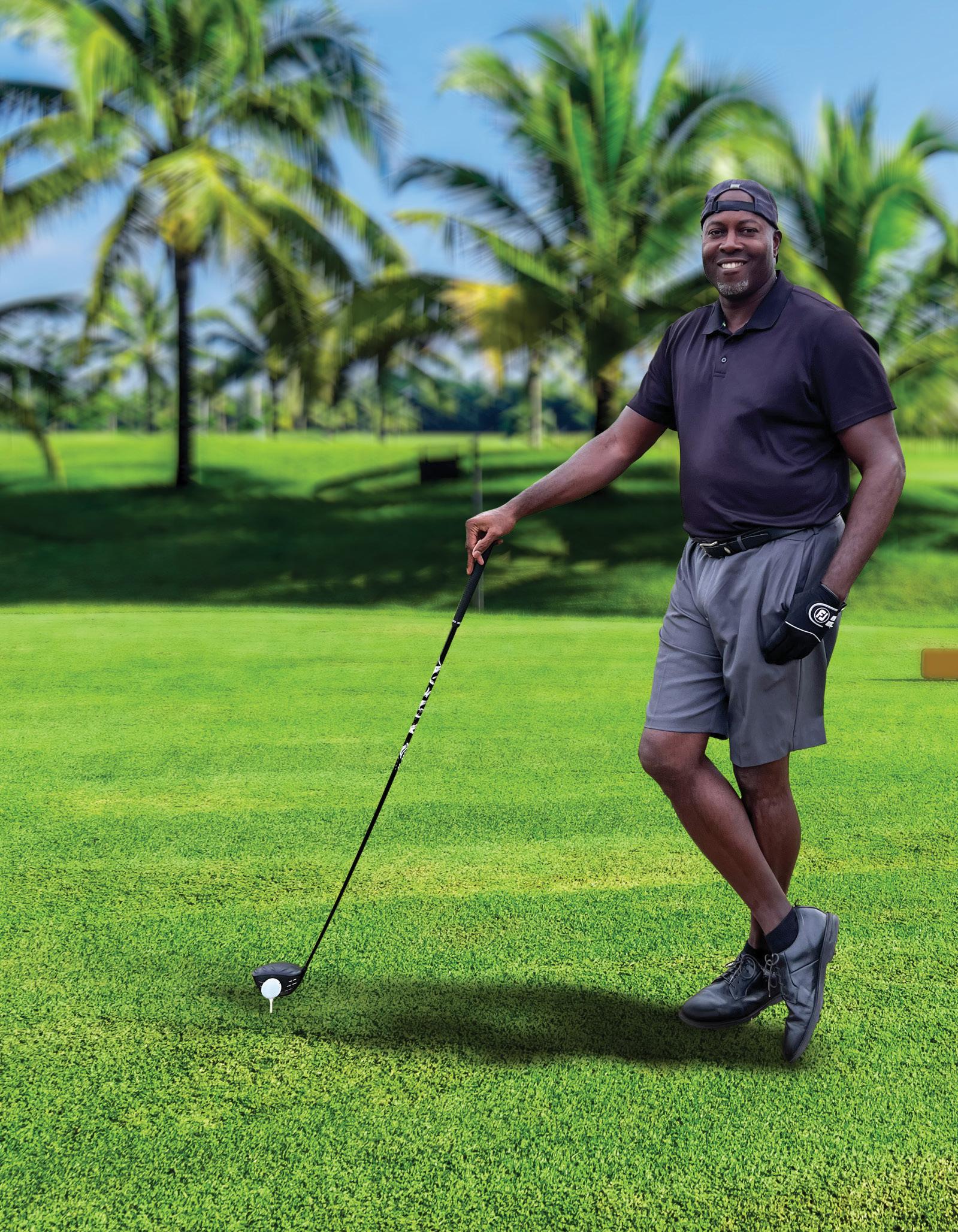
To attend, or to learn more about sponsorship opportunities, please contact Jenny A. Ray, Executive Director of Development, at 305.898.5602 or jray@miamijewishhealth.org


When it comes to international business, air links are vital, and no carrier has contributed more to Spain-Miami ties than Spain’s Iberia. The Madrid-based airline began Miami service in 1972, and today offers more seats to Miami than to any other U.S. destination it serves. Iberia flies twice a day between Madrid and Miami on Airbus A330-300 jets with 292 passenger seats per flight, offering 420,000plus seats roundtrip last year, says Maria Jesus Lopez Solas, Iberia’s chief officer for commercial, network, and alliance development.
“Miami is our most important destination in the United States,” a country key for Iberia’s growth, says Lopez Solas. The airline already serves New York, Boston, Washington D.C., and Dallas, among other cities. In all, Iberia plans to offer 1.7 million passenger seats roundtrip between Madrid and the U.S. this year. That’s up nearly 19 percent from 2022 levels and 7 percent more than pre-COVID numbers.
Spain’s flag carrier, Iberia has a long and storied history. Founded in 1927 in Madrid, it was nationalized for much of its existence, being finally privatized in 2001. In 2011, it merged into the International Airlines Group, joining British Airways, Aer Lingus, and other European carriers, which all operate independently. It also shares codes, loyalty points, and other services as a member of the One World Alliance, which includes American Airlines.
To grow business since COVID, Iberia has been getting cre-
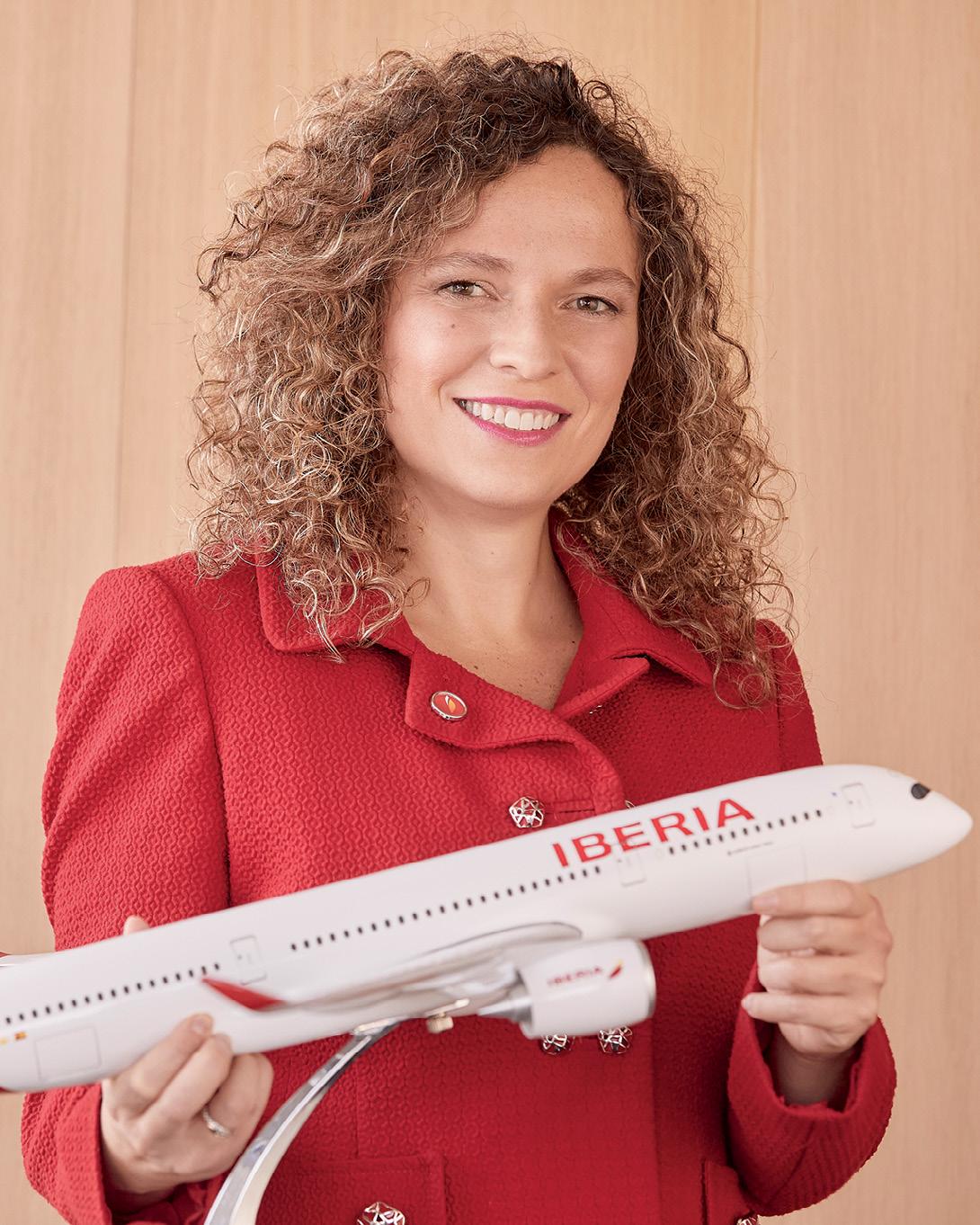
ative. Last summer, it opened a pop-up shop in Madrid, whose store windows looked like airplane windows with pull-down coverings. Visitors to the shop entered a space resembling a plane cabin, where they could try out seats for different classes of service. They could also order from the business class menu, which presents such treats as Galician octopus carpaccio, hake with potatoes in paprika oil and asparagus, and raspberry sorbet with fresh raspberries for dessert. The shop also offered a display of crew uniforms, plus simulators for want-to-be pilots.
Iberia now is looking to expand its portfolio by acquiring Air Europa, which also serves Miami. Air Europa started up in 1986 as Air España, with headquarters on the Spanish island of Mallorca, specializing in holiday charters. It now has some 40 Boeing jets and is Spain’s third largest carrier, after Iberia and Vueling, a low-cost carrier based in Barcelona.
“The purchase of Air Europa is still being evaluated by authorities in the European Union, and until there’s a decision [expected in June 2024], both companies will continue to compete strongly,” says Lopez Solas. The acquisition aims to “offer a better product to our clients, with more connectivity and more travel options, with a focus on the United States and Latin America.” Of its Miami routes, Iberia says about half the passengers come from the U.S. and half from Europe, a third of those from Spain. The jets also carry cargo to and from Miami.
Iberia aims to expand its Miami and U.S. service as needed. This winter it boosted its portfolio to 90 flights a week from Madrid to eight U.S. cities. That is up 24 percent from pre-COVID levels in 2019. “We’re making an important bet on the U.S market,” says Lopez Solas, “with Miami undoubtedly our main focus.” l

OVER 40 SHOPPING, DINING, AND ENTERTAINMENT DESTINATIONS
CMX CinéBistro • Kings Miami • Marina Kids • Miami Improv • Martini Bar
Chico Malo • Cooper’s Hawk Winery • Copper Blues Miami • Kuba Cabana
Novecento • Tap42 • Suviche
BurgerFi • Carrot Express • Juan Valdez Café • Sloan’s Ice Cream • The Fresh Market
Anatomy Fitness • BÜNDA • 4Ever Young • Mancave • Semper Laser
The Lash Lounge • Venetian Nail Spa
OPENING SOON: Escapalogy • Italianni’s

Jamaica’s largest fast-food chain is expanding into the United States, with plans for an initial 26 stores in Florida over the next five years, starting in Greater Miami.
Juici Patties, which already has 63 locations in its Caribbean homeland, is growing through franchises, which also account for most of its stores in Jamaica. Its first U.S. store opened last month in Hollywood, the touristy coastal enclave just south of Fort Lauderdale. The U.S. outlets will offer the chain’s flaky turnovers, which come stuffed with beef, chicken curry, vegetables and other fillings. They will focus on combo platters, with a patty, sliced avocado, fried plantains, and a drink, making it easy for customers to say, “Give me a No. 1, or give me a No. 2,” says Daniel Chin, CEO for the U.S. and COO worldwide. Combos likely will run about $10 and a single patty about $3.50 in Florida this year, says Chin.
The expansion caps six years of preparation, with Juici Patties working with U.S.-based consultants with executive experience at such fast-food chains as McDonald’s and Dunkin Donuts. Those consultants helped the Jamaican company develop an operations manual, streamline the process for opening stores, and adopt software for tracking franchisees, scheduling construction and expanding by U.S. zip-code, says Chin.
“Even before we started recruiting franchisees in the United States, we’ve been adopting these best practices and applying these procedures in Jamaica,” says Chin. The effort led to more stores on the island and a 2023 award for the best customer service at Jamaica’s fast-food chains.
Juici Patties chose Florida to begin its overseas expansion partly because of the large Jamaica community in the Sunshine State. Many non-Jamaicans in Florida are already familiar with Jamaican patties and cuisine, making the nearby state “a logical first step,” says Chin. Its U.S. stores will run about 1,400 square feet, with 15 to 20 seats each, he estimates. After Florida, Juice Patties aims to grow in New York, Texas, and Georgia, which also host large Jamaican and Caribbean communities.
U.S. expansion wasn’t top of mind when Chin’s dad Jukie started the business in 1978. Back then, at age 16, Jukie cooked up

Even before we started recruiting franchisees in the United States, we’ve been adopting these best practices and applying these procedures in Jamaica
batches of patties in his mom’s kitchen and sold them in a shop at the front of his Chinese-Jamaican family’s home. In 1980, Jukie opened his first store as Juici Beef Patties. Franchising came in the 1990s. Today, the renamed chain keeps a 20-acre headquarters with offices, a manufacturing plant, recreation area, restaurant, and other features. In all, it employs about 1,800 people in Jamaica, most fulltime, making 48 million patties a year, says Chin.
Of course, success at home doesn’t guarantee success overseas, especially in the competitive U.S. market. Entrants must contend with such issues as differences in the taste of ingredients, higher labor costs, and limited name recognition in a larger market. Social media often plays a greater role in U.S. marketing too, says Peter Ricci, director of the hospitality and tourism program at Florida Atlantic University in Boca Raton. What’s more, Ricci says, South Florida has “a multitude of Caribbean and Jamaican food offerings already.”
Chin embraces the US challenge, bolstered by Juici Patties’ success in selling to supermarkets in 11 Caribbean nations and the United Kingdom. He’s already excited to offer a new combo: curry-chicken patty with sliced avocado, thanks to year-round availability of avocados in the U.S. l
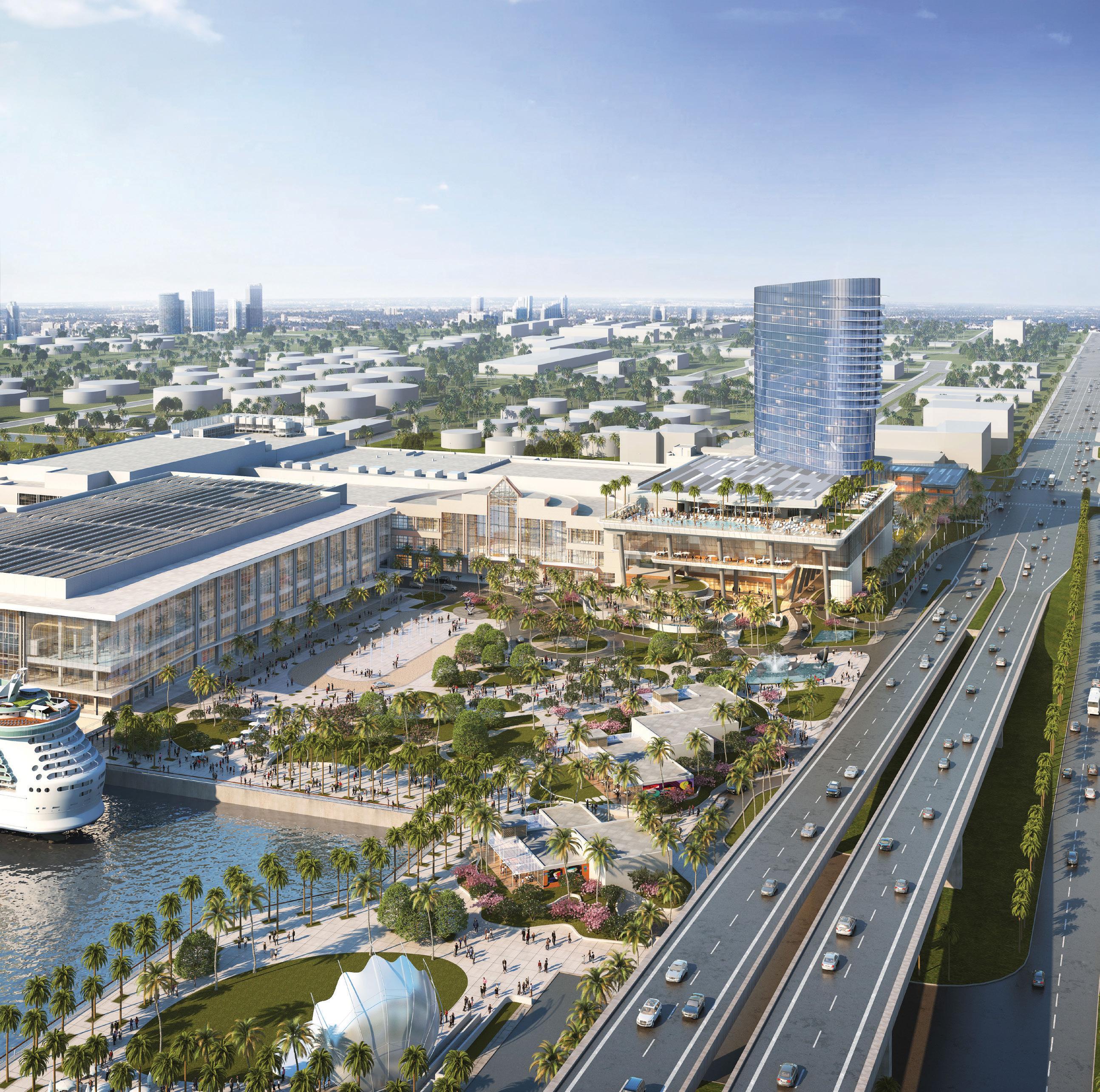












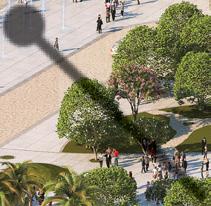



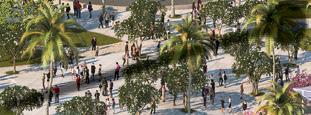










Earlier this year, more than 200 local officials and foreign delegates converged at one of the busiest cruise terminals in PortMiami for the 26th annual Inter-American Conference of Mayors and Local Authorities. Organized by the Miami-Dade Board of County Commissioners, the twoday February conference brought together policymakers and officials from 27 cities and 16 countries across Latin America and the Caribbean to discuss topics ranging from eco-tourism and disaster planning. One panel was especially relevant to Miami’s recent growing pains: sustainable infrastructure.
In recent years, as Miami’s risk for climate-related challenges has increased, Miami-Dade County has focused on resiliency and sustainable infrastructure. In 2023, the county was designated as a hub for climate technology by the U.S. Economic Development Administration, making it eligible for federal grants to promote solution-oriented climate research like shoreline protection systems and hybridized coral reefs.
Moderated by Wendy Conforme, CEO of the PortMiami Tunnel, the panel featured some of Miami’s leading voices in infrastructure, including Ralph Cutie, director and CEO of the Miami-Dade Aviation Department, and Richard de Villiers, PortMiami’s chief of staff. As the panel made clear, sustainable infrastructure is an international problem rather than just a local one.
According to a recent study funded by the University of Miami Laboratory for Integrative Knowledge (U-LINK), the long-term strength of PortMiami is contingent on the resilience of its trade partners. This includes ports such as Puerto Cortés (Honduras), Veracruz (Mexico), Puerto Plata (Dominican Republic), and St. Thomas, which, due to their low resilience levels could impact PortMiami’s performance. By improving their resiliency, these ports can help make PortMiami’s maritime supply chain less vulnerable to future climate-related disasters.
One organization that is strengthening the ports network is the Inter-American Development Bank (IDB). Tatiana Gallego-Lizon, the Chief of Housing and Urban Development for IDB, spoke on the importance of increasing sustainable infrastructure in Latin America and the Caribbean. “Climate is truly transforming the way in which we approach infrastructure. Latin America and the Caribbean have 81 percent of people living in cities, and cities in these regions are highly vulnerable,” said Gallego-Lizon. Because human resources are so concentrated, the effects of climate-related natural disasters
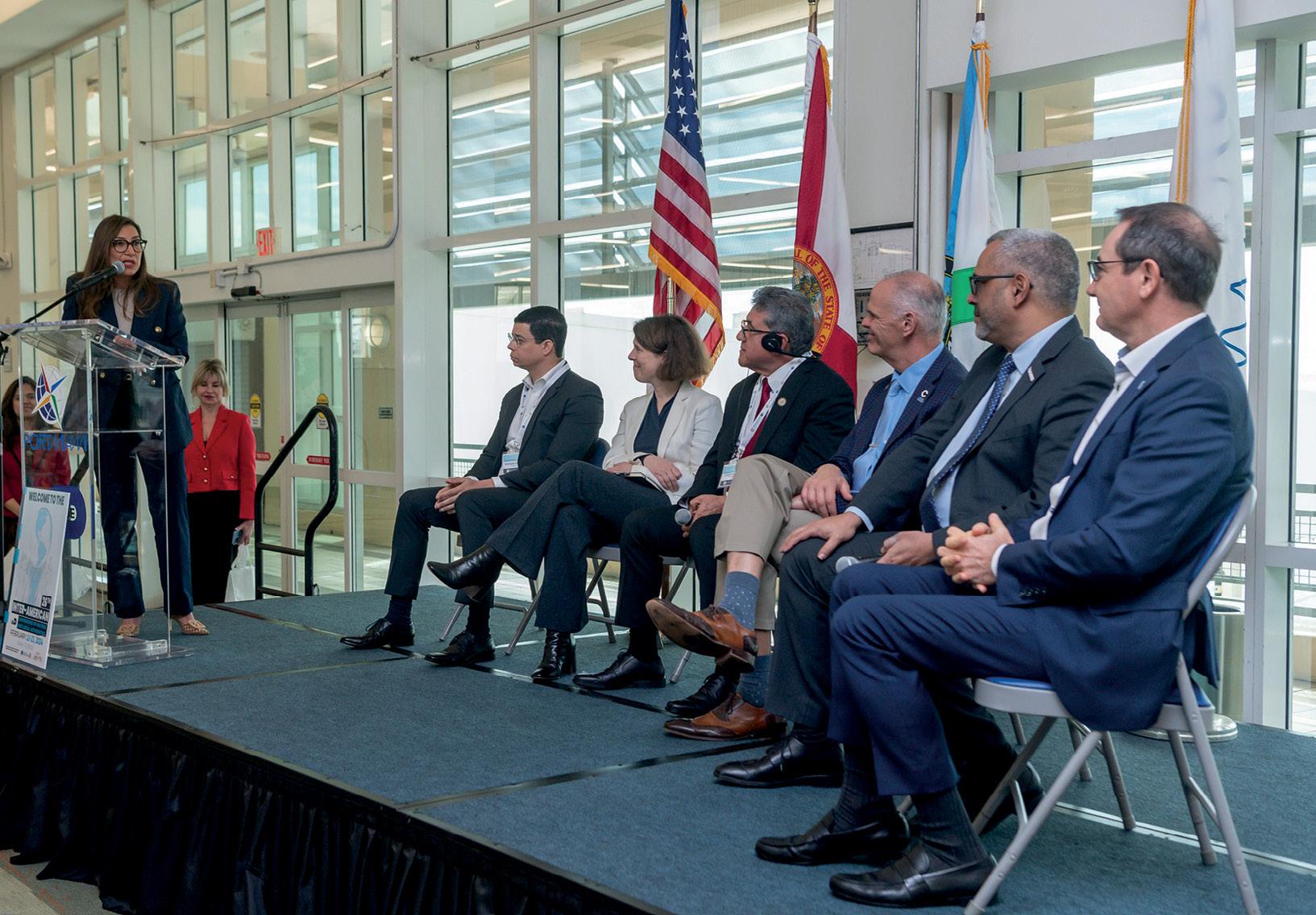
MIAMI’S COVETED POSITION AS A GLOBAL HUB MAY DEPEND ON SURVIVING CLIMATE CHANGE
BY KATELIN STECZwould be especially detrimental.
The IDB is currently the largest multilateral development bank working in the region, with 26 borrowing members in Latin America. According to Gallego-Lizon, sustainable infrastructure now represents more than 50 percent of the $15 billion annual lending that the bank does. Dr. Rafael Echevarne, director general of Airports Council International-Latin American and the Caribbean, said that sometimes investments in sustainable infrastructure are also the most cost-effective, especially when it comes to smaller scale airports. “I always say as a half-joke that, even if you don’t believe in climate change, it makes sense to use solar power, because it reduces tremendously the cost of powering these airports,” he said.
De Villers and Cutie described how PortMiami and the airport are investing in energy-efficient solutions that will have long-term compounding effects. De Villiers said PortMiami is reducing emissions with its shore power program for docked vessels and its utilization of new technology to process trucks faster and thereby reduce the time they sit idle. Cutie gave examples
Climate is truly transforming the way in which we approach infrastructure. Latin America and the Caribbean have 81 percent of people living in cities, and cities in these regions are highly vulnerable...
TATIANA GALLEGO-LIZON, THE CHIEF OF HOUSING AND URBAN DEVELOPMENT FOR INTER-AMERICAN DEVELOPMENT BANK (IDB)
ABOVE LEFT TO RIGHT: WENDY CONFORME, WELLINGTON ANDRADE, TATIANA GALLEGO-LIZON, DR. ARMANDO MARTÍNEZ MANRÍQUEZ, RALPH CUTIE, RICHARD DE VILLIERS, DR. RAFAEL ECHEVARNE
ALTAMIRA CONFERENCE, TOP LEFT TO RIGHT: WELLINGTON ANDRADE, WENDY CONFORME, TATIANA GALLEGO-LIZON, DR. ARMANDO MARTÍNEZ MANRÍQUEZ, RALPH CUTIE, RICHARD DE VILLIERS, DR. RAFAEL ECHEVARNE.
CENTER: HYBRID REEF STRUCTURES ON A BARGE, READY TO BE LOWERED INTO THE OCEAN OFF MIAMI BEACH TO ALLOW COASTAL RESILIENCE.
BOTTOM: PLACING THE CONCRETE HYBRID REEF STRUCTURES AGAINST THE SEAWALL.
of how the airport has cut down on energy consumption. In 2020, MIA completed a contract with Florida Power & Light Company (FPL) that installed $45 million worth of energy-efficient LED lighting, HVAC units, and water and heating systems that will yield more than $60 million in savings over 15 years.
Even though sustainable infrastructure seems like an obvious priority for governments across the region, many lack adequate funding resources. To fill the gap, some are turning to private investment and non-profit organizations for long term investments. Dr. Armando Martínez Manríquez, mayor of Altamira, Mexico, offered his city as a case study for encourage private companies to complete sustainable infrastructure projects. Altamira is working on a wastewater treatment plant that Mexico’s National Water Commission was unable to fund. Local business leaders invested in the project in exchange for private ownership and longterm returns.
On the non-profit side, Wellington Andrade, CEO of the Mato Grosso Soybean & Corn Growers Association, Brazil (Aprosoja-MT), spoke about how his association influences farmers to grow more sustainably, thus reducing deforestation. Because the state of Mato Grosso grows 10 percent of the world’s soybeans and 3.5 percent of the world’s corn, Aprosoja-MT can make a significant impact by by educating its 8,000 members.
For Miami, investment in sustainable infrastructure has huge economic impact. By ensuring its adaptability to the worsening climate crisis, and to potential climate-induced catastrophes, the city becomes a safer bet for foreign companies.
“[Sustainable infrastructure] can drive foreign investment,” says Galen Treuer, climate tech and economic innovation manager for Miami-Dade County. “This makes our region more competitive with China because we’re enhancing the trade in our region – and maintaining it – the same technologies we’re developing here are going to be relevant throughout the Gulf and Latin America.” l

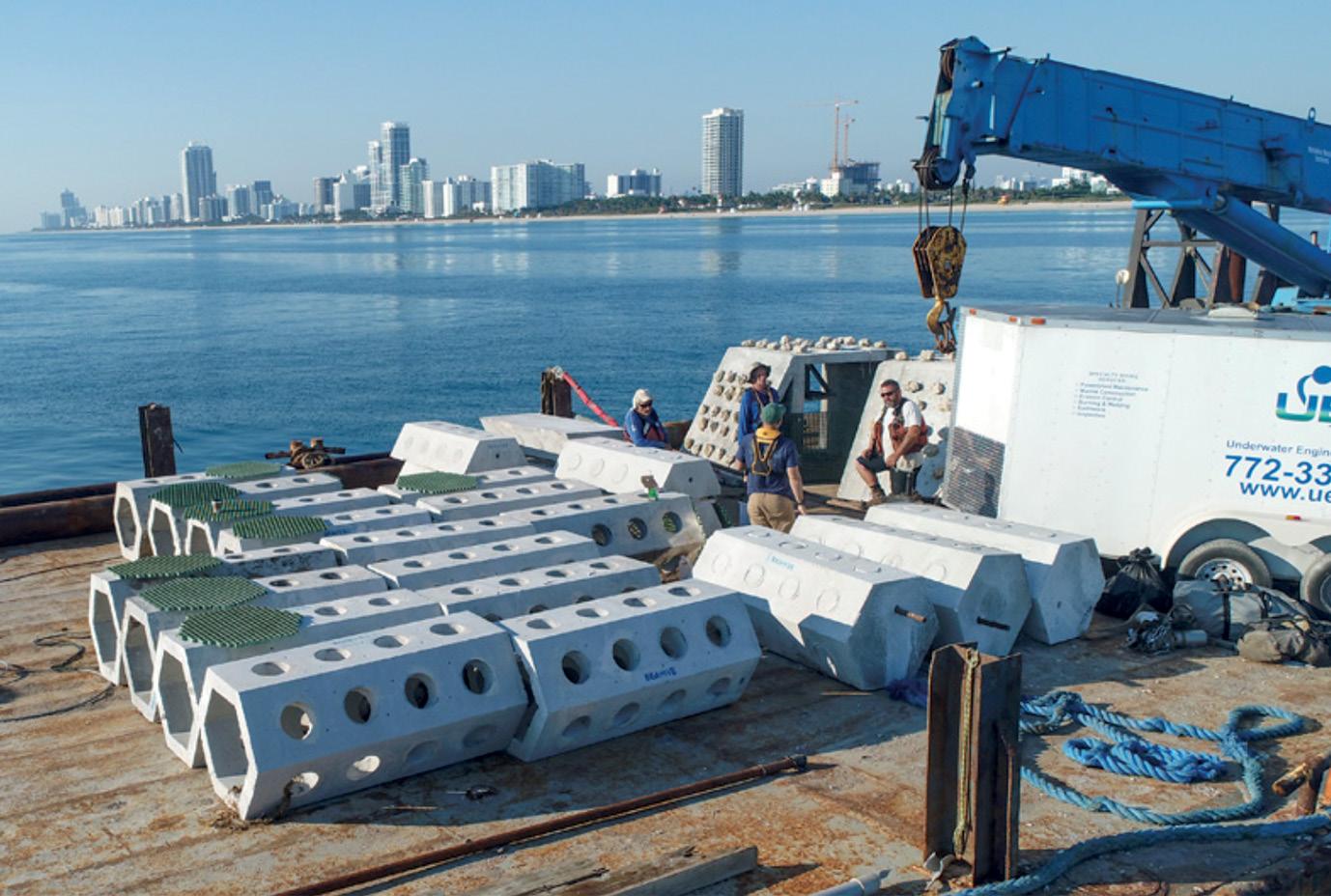
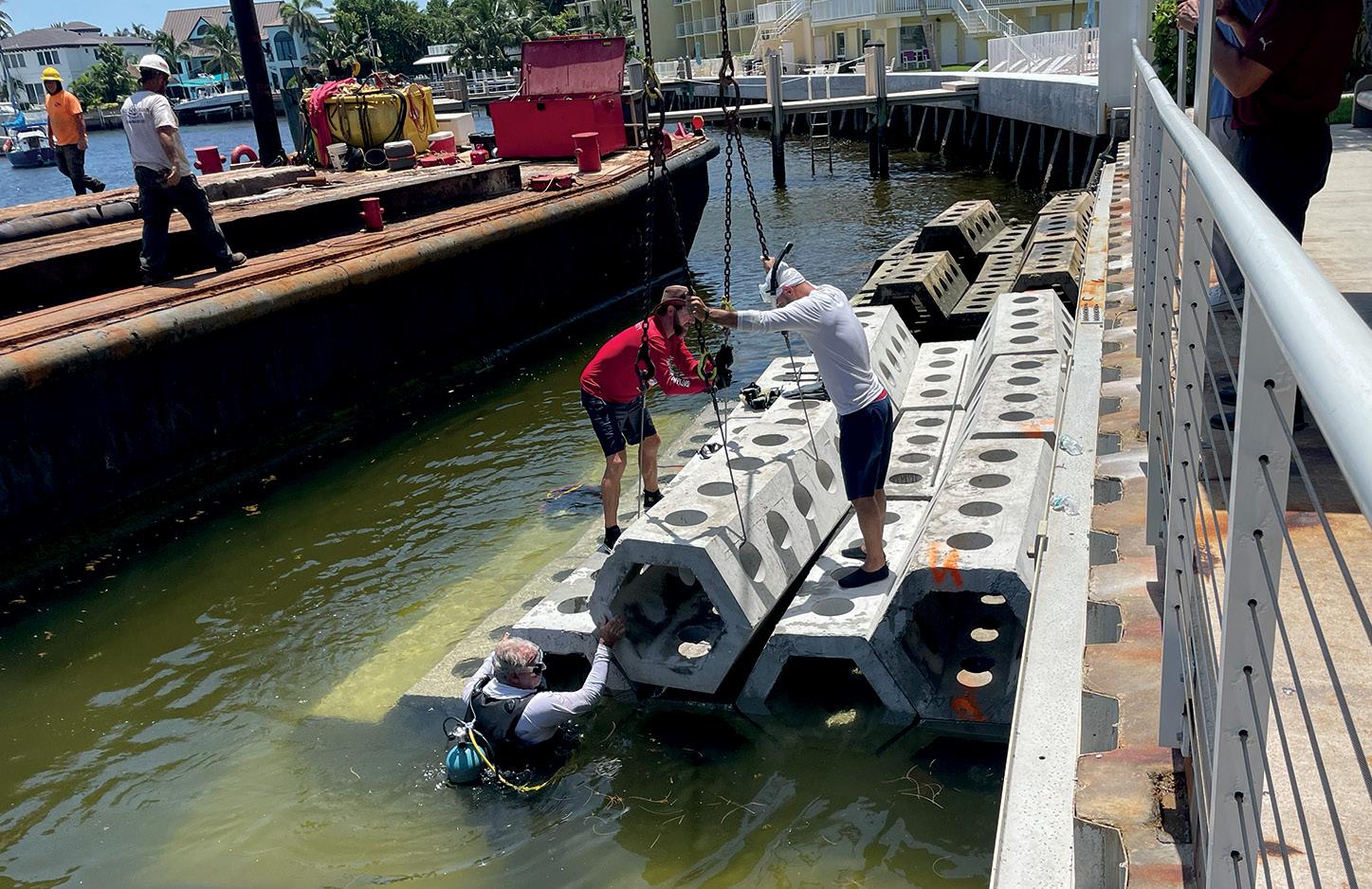
I
t might be safe to say that the gap between popular past images of Miami and the political and economic realities of the city today is closing. “We’re more than our [traditional] image in the media. Miami now, being the amazing global city that it is, has transformed,” says Dr. Athena Passera, President and CEO of Global Ties Miami.
Global Ties Miami, an affiliate of the Global Ties U.S. network, is a non-profit long dedicated to closing that gap by promoting citizen diplomacy and connecting international visitors with the people of Miami. The organization implements the U.S. Department of State’s International Visitor Leadership Program (IVLP), which brings delegations from around the world to engage on different topics the State Department is prioritizing. “The subject areas and the visitors that come through this program very much align with U.S. foreign policy objectives. It’s very specific and deliberate,” says Dr. Passera, who was born in Florida but spent most of her life in Trinidad, Barbados, and Canada as the daughter of a Trinidadian Ambassador.
For some visitors, the State Department wants introductions to federal entities like SouthCom or the Coast Guard, which Global Ties arranges. If the topic is combatting climate change, Global Ties will set up meetings with entrepreneurs or university professors who have created innovative solutions for visitors seeking impactful takeaways. “A lot of Miami’s transformation has to do with subject areas [of current interest], and whether Miami has the right resources for it,” says Dr. Passera. “The difference from decades ago till now is that Miami can do anything now. There really aren’t many subject areas that Miami can’t set up quality experiences for.”
The IVLP has been around for 80 years, with over 100 organizations throughout the U.S. and 20 countries to help coordinate the programs. The Miami chapter, serving the entire Miami Customs District, was introduced to the city 64 years ago when a group of volunteers wanted a way of introducing international students studying in Miami to the local community, believing that faceto-face interactions would contribute to building a more interconnected world. Since then, Global Ties has hosted over 12,000 international visitors, with delegations coming two to three times a month – everything from African entrepreneurs to engineers and environmentalists from Latin America to bankers and financiers from Turkmenistan

and Guinea-Bissau. The State Department provides Global Ties with 50 percent of their operational funding; the rest comes from fundraising.
When a diplomat from Vanuatu participated, Dr. Passera says the diplomat was pleasantly surprised to learn that Americans cared about rising sea levels. “She had never been to the U.S. before and works specifically on sea levels rising and the fact that they [in the South Pacific] are on the verge of disappearing.” In previous meetings overseas, “she ended up having a very negative
view of Americans.” However, after visiting Miami through the IVLP, her perspective changed. “We had her meet with some local nonprofit organizations that were working on climate change and rising sea levels. She was shocked because she was convinced that Americans did not care about this issue,” says Dr. Passera. Since then, the diplomat –with her newfound knowledge and perspective – said negotiating with Americans has gone much smoother.
This is not a unique scenario. Nine out of ten IVLP alumni say they can understand

The difference from decades ago till now is that Miami can do anything now. There really aren’t many subject areas that Miami can’t set up quality experiences for.
DR. ATHENA PASSERA, OPPOSITE PRESIDENT AND CEO OF GLOBAL TIES MIAMI
ABOVE: THE GLOBAL TIES OFFICES AND MAP PINNED WITH VISITOR HOME COUNTRIES
and communicate more accurately about the U.S. after coming to Miami. The South Florida community also benefits from these global exchanges. For example, a group combating wildlife trafficking was touring the Everglades with a visitor from Namibia who explained how they monitor animals in the wild – by using AI and global tracking devices – thus inspiring the South Florida locals to implement similar systems.
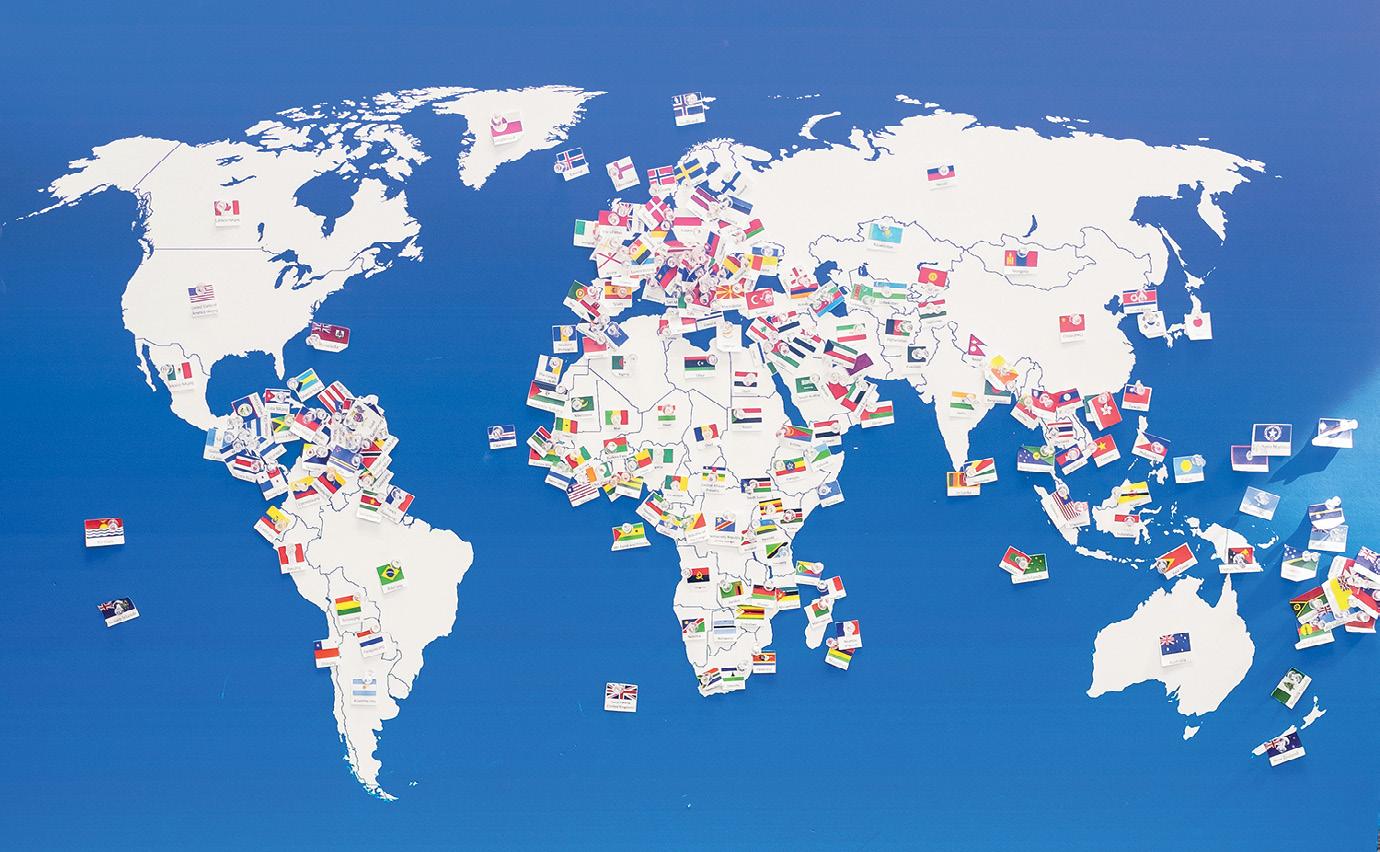
“That happens often, when we get that moment of realizing that this is not a one-way communication,” says Dr Passera. “We’re learning a lot from the problems of others and the innovative ways they’re figuring out how to handle similar challenges.”
Alex Moreno, Clinical Program Manager at the University of Miami’s Miller School of Medicine, agrees. “It’s always good to meet with professionals I’d probably never get to meet without this program,” he says. Depending on the topic, Global Ties will facilitate exchanges between interna-
tional visitors and city commissioners, local nonprofits, South Florida universities, and people in the private sector. “We want to make sure that the international visitors see how an issue is managed at all different levels,” explains Dr. Passera. “I’d like folks to see us as a way for them to turn their frustrations with what’s happening around the world into action. Every single person can come and meet with our visitors and tell their Miami story – and allow folks to know that you do have a place for building bridges in South Florida. “ l
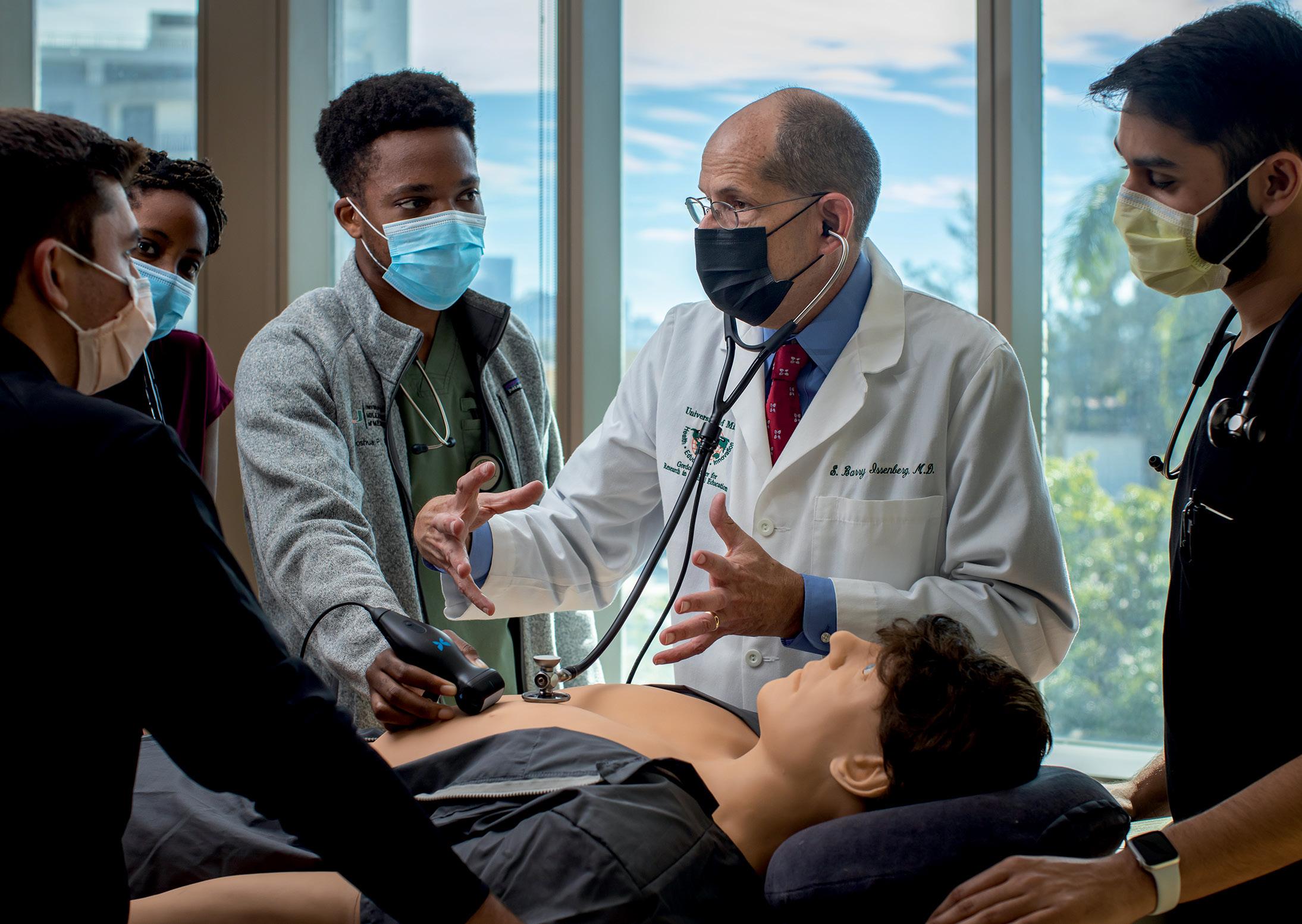
In 1968, Dr. Michael Gordon unveiled Harvey®, a 700-pound mannequin that would revolutionize medical education. For one of the first times in history, medical students could study the sounds associated with heart diseases in a reproducible classroom setting at the University of Miami’s “Simulation Center.” When a student listened to a certain part of Harvey’s chest, they would hear the sound associated with a particular heart disease.
By today’s standards, the first Harvey seems archaic. At the time, however, it was cutting-edge technology that would inspire one of Gordan’s interns to expand the field of medical simulation technology. Today, the modern models of Harvey can simulate 50 patient scenarios ranging from pulmonary stenosis to heart failure, and it’s just one of the simulators at what is now called the Gordon Center for Simulation and
Innovation in Medical Education. Among them are full-body simulators that can mimic childbirth and advanced trauma.
Much of the credit for the center goes – besides to Dr. Gordon – to Miami native Dr. Barry Issenberg. In 1982, when he was in just 8th grade, Issenberg began an internship under the direction of Gordon. He got to work firsthand with some of the latest medical simulation technology, and on weekends would go to the “Simulation Center” and record Harvey’s heartbeats on four-track cassette tapes for Gordan.
Fast forward 42 years. Gordon’s former high school intern, now a medical doctor, is the Gordon Center’s director. Each year, the center, and the simulators it exports to more than 60 countries, trains more than 20,000 first responders and front-line clinical providers. The mission is straightforward: to save more lives.
According to a study by Johns Hopkins, medical errors occurring in a healthcare setting are the third leading cause of death in the United States. That’s right. Just after heart disease and cancer, medical mistakes are a leading cause of death. Issenberg says the medical simulation community can reduce those errors by better preparing future healthcare providers with more comprehensive training.
The Gordon Center uses two strategies. It develops, promotes, and exports advanced simulation technology like Harvey, and it creates a curriculum to use in conjunction with that technology. Part research institution, part publishing house, the Gordon Center is responsible for some of the latest medical instruction on emerging technologies. Issenberg says it’s not enough to just pioneer new teaching technologies like Harvey; there must also be a guide on how

There’s no substitute for working with a real patient and learning about illness and how to manage that illness. However, it was recognized that there were certain things that we do to patients – procedures, interventions – where you would not want to be that patient if the learner is doing that procedure for the first time.
DR. BARRY ISSENBERG, DIRECTOR OF THE GORDON CENTER FOR SIMULATION AND INNOVATION IN MEDICAL EDUCATION, AT THE UNIVERSITY OF MIAMI
ABOVE: DR. ISSENBERG TRAINING MEDICAL STUDENTS WITH SIMULATION TECHNOLOGY COMBINED WITH A CURRICULUM.
to use that technology.
“Without a curriculum, a piece of equipment will just be there installed in a room and won’t be used,” says Issenberg. “I mean, the curriculum is the common language for educators, both in medicine and in nursing, and it’s through that curriculum that we disseminate the technology.”
Issenberg says the traditional model of medical education follows students from the classroom to the observation of experienced practitioners, and finally to caring for patients. Simulation, he says, adds more low stakes learning opportunities where medical students are allowed to make mistakes; future providers can experience more repetitions of a replicable situation before being thrown into patient care.
By combining its curriculum with simulation technology, the Gordon Center is impacting healthcare on a global scale. Harvey is now used in 56 countries, from Peru to the Philippines, and the Gordon Center’s partnership with multiple international universities has cemented its presence around the world. For example, through its Advanced Stroke Life Support® (ASLS)
program and partnership with the American Heart Association (AHA), the Gordon Center has been able to use the AHA’s existing infrastructure to disseminate its stroke care curriculum. The international launch of its ASLS program recently took place in Dubai, and according to Dr. Ivette Motola, assistant director of the Gordon Center, representatives from more than 20 countries have since expressed interest in the center’s ASLS program.
Issenberg also hopes that his upcoming role as the president of the Society for Simulation in Healthcare will magnify the center’s global influence. According to Issenberg, it’s the largest international organization devoted to healthcare simulation, with members in approximately 80 countries.
“There’s no substitute for working with a real patient and learning about illness and how to manage that illness,” says Issenberg. “However, it was recognized that there were certain things that we do to patients – procedures, interventions – where you would not want to be that patient if the learner is doing that procedure for the first time.” l

The medtech/healthtech sector is experiencing unprecedented growth and innovation, fueled by technological advancements and rising demand for healthcare solutions. By highlighting the sector at our conference, we can show how technology can continue to improve patient care and healthcare delivery.
MELISSA MEDINA, CEO EMERGE AMERICAS
BY DOREEN HEMLOCKRobotic surgery. New medicines for rare diseases. Predictive diagnostics. The world of healthcare is brimming with new technologies, and this year’s eMerge Americas tech conference raised the profile of medical innovation to encourage business in the fast-growing sector.
South Florida’s premier tech event, which drew 24,000 people from 50-plus countries in April, made healthcare a priority, building on partnerships with the Jackson Health System and the University of Miami Health System (called UHealth); Baptist Health and Florida International University (FIU); and Nicklaus Children’s Health System, among others. The cooperation featured large pavilions for each on the exhibit floor, plus panel discussions on such topics as high-tech trauma centers and organ transplants.
The focus comes amid strong investment in ventures that produce hardware, software, and tech services for healthcare. Last year, the medtech/healthtech sector ranked second for venture capital funding in South Florida, trailing only after financial tech. The sector received $362 million, or 16 percent of the $2.4 billion invested in South Florida ventures in 2023, says eMerge Americas CEO Melissa Medina.
“The medtech/healthtech sector is experiencing unprecedented growth and innovation, fueled by technological advancements and rising demand for healthcare solutions,” Medina told Global Miami Magazine. “By highlighting the sector at our conference, we can show how technology can continue to improve patient care and healthcare delivery.”
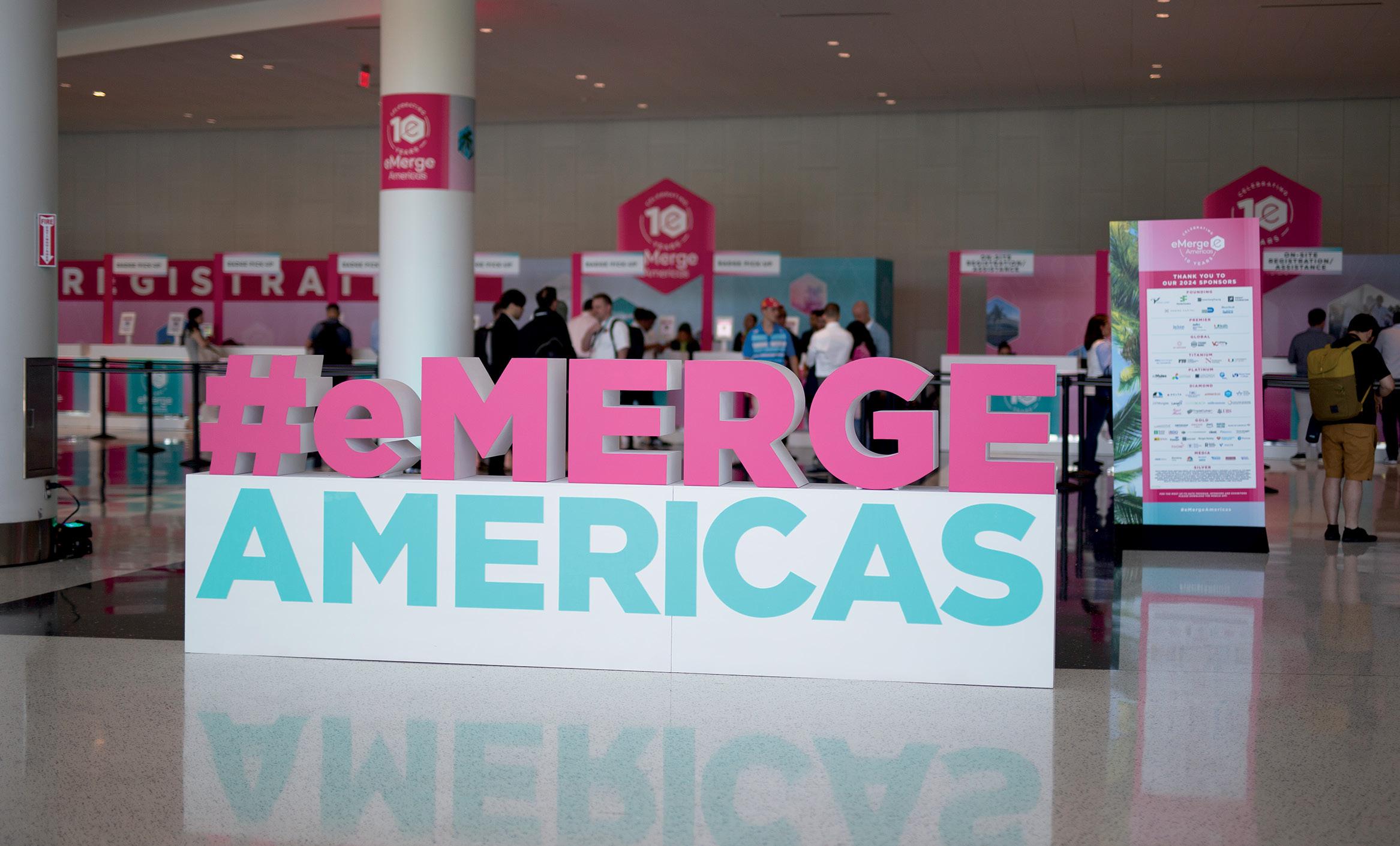
To be sure, health is not a new focus for eMerge, which launched its conference a decade ago to help make South Florida a tech hub. The first company to win the eMerge conference’s Startup Competition was Modernizing Medicine, which makes cloud-based software to run medical practices. That Boca Raton venture, now called ModMed, today employs more than 1,000 people and has raised at least $380 million to finance growth, reports show.
Last year’s eMerge conference also hosted a bustling University of Miami booth showcasing innovations by students, faculty, and researchers. Attendees gawked at the latest iteration of Harvey, a patient-mannequin that simulates some 50 heart and lung conditions. (see story pg. 34). This year’s eMerge hosted additional pavilions, including a return by UM in partnership with Formula 1 race cars, with an emphasis on advanced sports medicine. “The technology used in Formula 1 eventually comes out to the public. For instance, they have gloves the drivers use that measure their vital signs,” says Carlos Migoya, President and CEO for Jackson, which spans hospitals, urgent care, long-term care, and graduate medical education in its network.
The pavilion by FIU and Baptist Health featured interactive displays that allowed users to experience the handicaps of people with different neurologic disorders. On one display, participants first drew spirals on a touch screen under “normal” circumstances. Then a vibrating plate underneath gave them the experience of Parkinson’s with their next attempted spiral. Another memory kiosk simulated the confusion experienced by patients with Alzheimer’s.
One new pavilion was that of Nicklaus Children’s Health Systems, which offers world-class pediatric care at Nicklaus Children’s Hospital. Their pavilion allowed participants to experience the latest in Virtual Reality headsets, which the hospital uses to calm and relax children undergoing procedures.
“We have been leveraging VR as it pertains to the patient
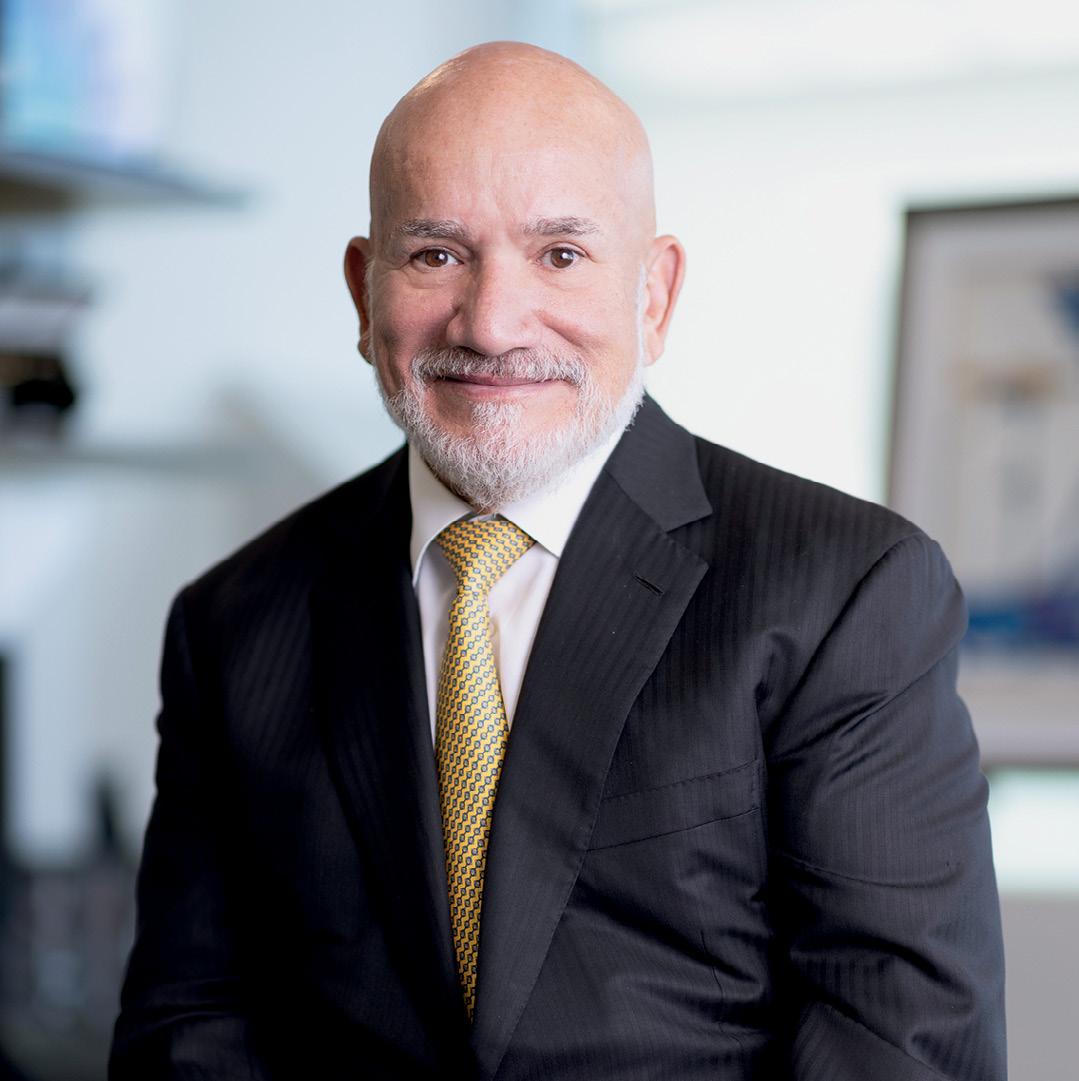
experience, using it as a distraction for pre-surgery, to reduce anxiety and perceived pain,” says Dr. Christina Potter, a psychologist and behavioral researcher who leads their VR program. “We have seen amazing results… [the children] wear it until they put on the [anesthesia] mask and go to sleep.” Nicklaus is also a leader in the use of digital innovation and Ai to process and analyze health data.
“Overall, Miami is increasingly a health tech hub.”
In addition to the technology itself, what was different at this year’s eMerge was the attention to bringing together diverse players in health – entrepreneurs, investors, tech users, and others – to spur business in the sector. The push extended even into sports, with

the Jackson/UHealth pavilion display of its Formula 1 race car; Jackson’s Ryder Trauma Center acts the medical team for Formula 1 racing at Hard Rock Stadium, deploying such innovations as a telemedicine robot that can work with drivers or others in case of medical emergencies.
South Florida has a strong base to develop technologies for health. The area offers ample medical services and hospitals because of its rising population, including retirees. Baptist Health and other systems market services to patients in Latin America and the Caribbean, deploying new tech that may not be available in their homelands. Some universities – notably UMiami and FIU– have medical schools with active research arms. More generally, The Beacon Council, Miami Dade’s development group, targets the life-science and health sector for growth, recognizing the many jobs it creates, from technicians and doctors to administrators and cleaners, says Greg Horowitz, who leads the Council’s life-sciences push.
One weakness for health tech has been local funding, but an influx of finance and tech companies since COVID hit in 2020 has closed part of that gap. New entrants are keen on health and investing, especially in such digital health solutions as remote monitoring of patients, Horowitz says. Indeed, there’s so much buzz around South Florida health now that overseas groups are visiting more frequently to explore opportunities, some recently arrived from Spain and the United Kingdom, he says.
“In February, we had an Austrian delegation from senior-care companies and technologies,” says Horowitz, a Beacon Council vice president. “We see health tech as a definite growth area.”
Israel, dubbed “Startup Nation” for its innovative companies,
Total invested in South Florida ventures: $2.41 billion in 393 deals. That ranked the Miami-Fort Lauderdale metro area seventh nationwide by number of deals and 11th for deal value.
VC investment by sector in South Florida: Fintech: $577 million. Healthtech/medtech: $362 million. Climatetech/cleantech: $263 million.
Source: eMerge Americas 2023 Annual Insights Report.
stands out among early players in South Florida med tech. Perhaps the best known of its Miami ventures is Insightec, led by Dr. Maurice R. Ferre, son of Miami’s former mayor. The venture treats essential tremors and Parkinson’s disease without surgery, using focused ultrasound. In 2023, Insightec was recognized by BioFlorida, the state’s largest life-sciences network, as the BioFlorida company of the year. Based in Israel’s Haifa and in Miami, it has offices in Dallas, Shanghai and Tokyo and just received $200 million in new credit to expand.
Ferre also chairs Israeli med tech Momentis Surgical, formerly Memic Innovative Surgery, a robotic surgery company based in Tel Aviv, with a unit in Fort Lauderdale. Momentis has raised more than $100 million since its founding a decade ago to finance growth, according to news reports.
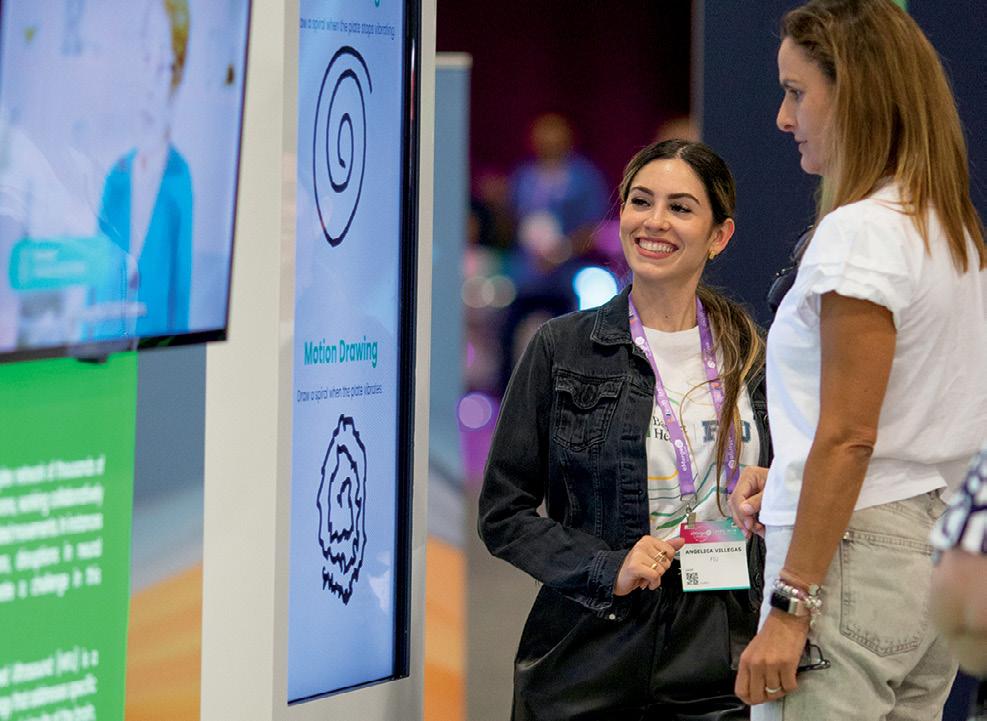
HEALTHSNAP: Founded in 2015 as an outgrowth of University of Miami, Miami-based Healthsnap specializes in monitoring patients with chronic diseases, working with 150-plus medical groups and healthcare systems. It announced a $25 million funding round in February led by Sands Capital and including Comcast Ventures and Florida Opportunity Fund, among others. It has raised more than $48 million.
CYRANO THERAPEUTICS: Founded in 2014, the Delray Beachbased company is pioneering treatments for the loss of smell. In January, it raised $9 million led by Florida Opportunity Fund and including Deepwork Capital, among others. It has raised more than $21 million.
NEOCIS: The Miami company created and sells a system that uses robots to plan dental implant surgery, a system cleared by the U.S. Food and Drug Administration. So far, it’s been used for more than 40,000 surgeries. In January, it announced $20 million in funding from NVentures, Nvidias’s venture capital arm, as well as Mirae Asset Capital/Mirae Asset Venture Investment. It has raised about $180 million to date. The company employs more than 140 people, most based in Miami. It is led by a UM grad who formerly worked at Mako Surgical, together with another former colleague from Mako.
CLAYFUL: The Davie-based startup offers text-based coaching on-demand for students to support their mental wellness, partnering with K-12 schools and school districts. In November, it announced $7 million in funding led by Reach Capital. It employs more than 100 people nationwide, including vetted coaches.
FORWARD THERAPEUTICS: Founded in 2022, this Palm Beach Gardens-based startup is developing molecule therapies for chronic inflammation and immune system disorders. In November, it announced a $50 million funding round led by BVF Partners and including RA Capital Management, among others.
DELOREAN AI: Founded in 2019, this Palm Beach-based startup uses artificial intelligence in varied ways, including helping hospital systems apply algorithms to patients’ medical records to forecast the course of diseases and speed treatment. In September, it announced $7.5 million in funding led by Sopris Venture Capital and including Pinta Capital Partners, among others
Sources: Company announcements, tech website refreshmiami.com
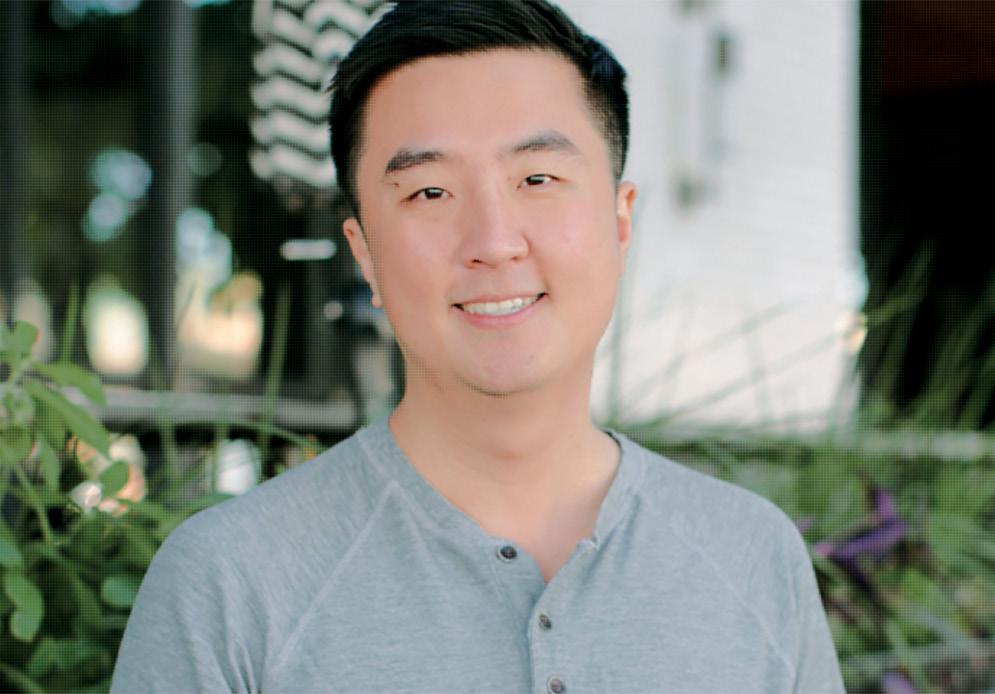
I’m very excited about what eMerge is doing in health. They’re bringing together people from different partnerships to think about ways to create medical innovation
DOCTOR PHILLIP LIU, ABOVE, VENTURE- STUDIO FIRM, ATOMIC
Venture capitalists divide opportunities in the sector into three areas based on their complexity and timeline for returns. Most complex is biotech, which includes drugs and other “small molecule” products regulated by the U.S. Food and Drug Administration. Biotech takes the longest to bring to market, regularly involving clinical trials. It includes such South Florida ventures as Coral Gables-based Catalyst Pharmaceuticals, which makes medicines for rare diseases and was BioFlorida’s 2022 winner.
Next comes medtech, which refers mainly to medical devices and hardware regulated by the FDA, such as surgical implants. Medtech also may refer to algorithms that offer predictive diagnostics to help doctors make medical decisions. Last and least complex comes healthtech, which is not FDA regulated, and encompasses such ventures as online platforms to hire health coaches.
Short-term, healthtech offers the greatest potential for growth in South Florida – but with a caveat, says Phillip Liu, a medical doctor who runs the healthcare practice for venture-studi firm Atomic and chairs the Beacon Council’s committee on healthcare and life sciences. New products and services need to be high-quality and able to scale, not just variations on existing wares or small-scale ventures, says Liu.
“Biotech can take decades to develop,” Liu says. “But when you think about the diversity of the Miami patient population, the size and connectivity of the South Florida market up to Orlando, the business friendliness of Florida’s public sector – all those are hidden gems that don’t exist everywhere. So, if you can prove high-quality healthtech works here, you show it can work in other places.”
Historically, South Florida has racked up few biotech or medtech successes on the scale of the almost $2 billion sale of Ferre-led Mako Surgical in 2013. Gains from that sale rippled into financing for Insightec, Momentis, and angel investments locally to spur the sector and jobs, says Liu.
“That’s why I’m very excited about what eMerge is doing in health,” says Liu. “They’re bringing together people from different partnerships to think about ways to create medical innovation.” l
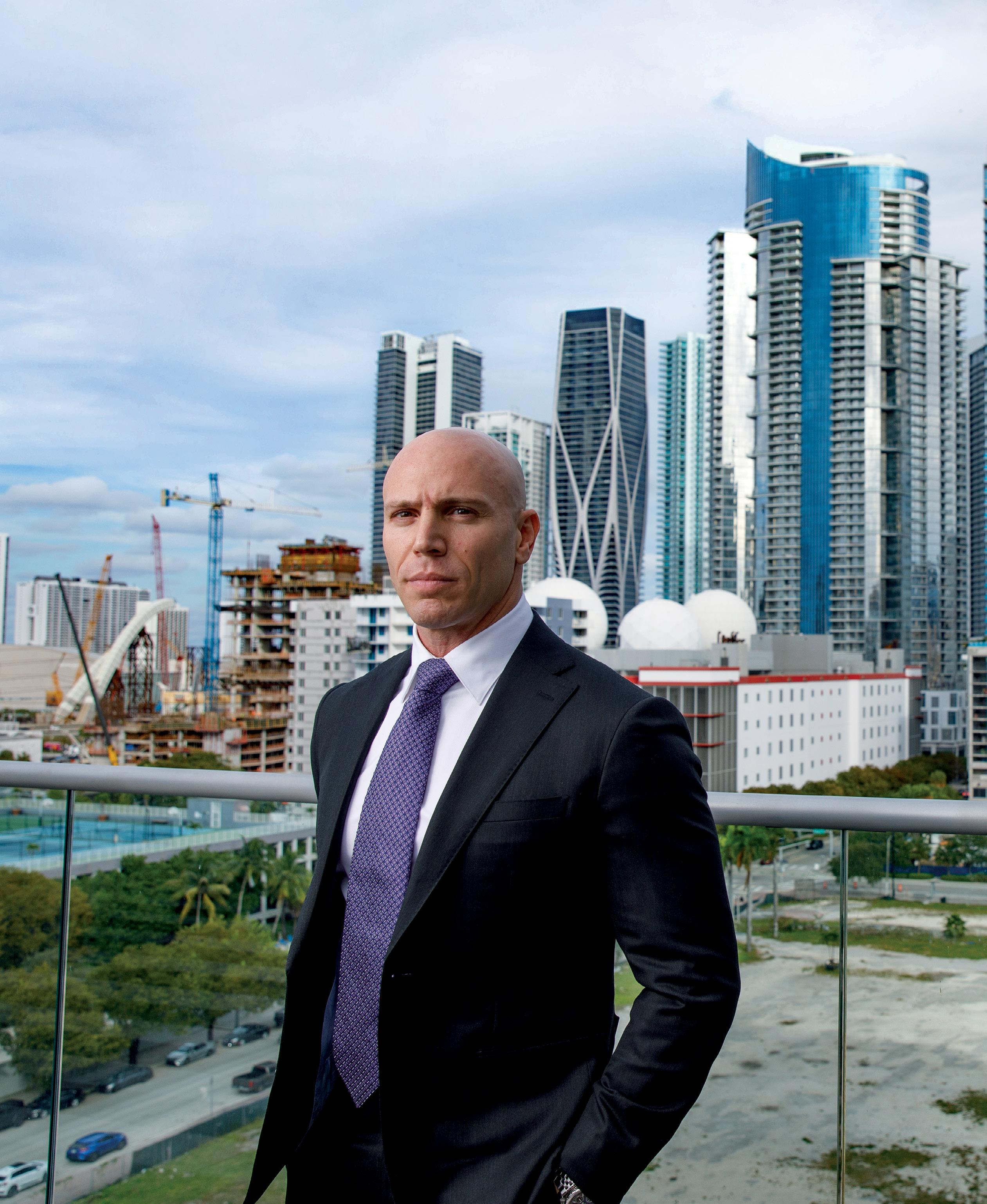
PART OF THE NEW MIAMI:
JOSH SCHERTZER, CHIEF TECHNOLOGY OFFICER FOR BLACKSTONE’S ENTERPRISE SYSTEMS AND CO-MANAGER OF ITS MIAMI OFFICE. IN THE BACKGROUND: MIAMI’S NETWORK ACCESS POINT (DOMES) AND ITS $6 BILLION WORLDCENTER, STILL UNDER CONSTRUCTION.

Just before the pandemic, alternative investment giant Blackstone concluded that Miami would be a great location to expand its global footprint. The move turned out to be prophetic.BY J.P. FABER
In retrospect, the decision by New York-based Blackstone to choose Miami as the location for its second largest office in the U.S. seemed perfectly in tune with the times. Over the last few years, Miami has become the new home for numerous corporations and corporate divisions relocating from New York, Chicago, and California. The reasons – diversified talent pipeline, a businessfriendly environment, safer city streets, an attractive climate – were all dramatically accelerated by the Pandemic.
But Blackstone, in a move overseen by the firm’s Chief Technology Officer (CTO) John Stecher, and Chief Operating Officer of Global Finance Chris Striano, had already decided that Miami was the right fit before the Covid virus triggered a stampede to the Magic City. “At the time, we believed were one of the first financial firms to really plant the flag. So, we had a bit of first mover’s advantage,” says Josh Schertzer, who oversees Enterprise Technology at Blackstone. He is now Co-Head of the Miami office alongside Adam Fletcher, Blackstone’s Chief Security Officer.
When Blackstone decided to expand to Miami in 2020, Schertzer had been working for the firm for twelve years. When he started it had a mere $94 billion in assets under management. Today it has more than $1 trillion assets under management, and Schertzer – who arrived with the slender pedigree of two years working the tech side of the New York Stock Exchange – has risen in tandem with the firm’s growing fortune. But it was the timing of Miami and Covid that catapulted his career at Blackstone.

“We had been looking for a place prior to the pandemic, exploring where we could open up a second headquarters or extension of New York,” says Schertzer. “We were exploring many different cities, the cities that you would expect us to look at. But after careful decision making, we landed in Miami.”
Some of the reasons were predictable, starting with “a location where people wanted to be,” says Schertzer, but it went deeper than that. The city had to be a vibrant market, one with a diverse talent pool that Blackstone could tap. This included proximity to good schools, a criterion where Miami scored well with Florida International University, the University of Miami, Miami-Dade College and nearby Nova Southeastern, not to mention the University of Florida and Florida State University further upstate. “We thought there was an opportunity for us here to recruit out of all these great schools,” says Schertzer.
In terms of potential employees, the fact that Miami was no Silicon Valley at the time was mitigated by the presence of huge tech firms in nearby Broward County, like software giant Citrix, with 4,600 employees in Fort Lauderdale, or KEMET, the electronic components corporation, with 3,700 employees in Fort Lauderdale as well.
Then there was the closeness to New York, being just a twoand-half hour flight away, and in the same time zone – avoiding difficulties inherent in operating a second HQ in some place like California. “People can make it in a day without being disruptive or having to worry about things like being on the West Coast where there is a time difference,” says Schertzer. “When you get into collaboration, it becomes difficult. And we wanted to have real fluidity between these two offices.”
We had been looking for a place prior to the pandemic, exploring where we could open up a second headquarters or extension of New York. We were exploring many different cities, the cities that you would expect us to look at. But after careful decision making, we landed in Miami.
Then the Pandemic struck.
“So now we’re looking for a new office and, if you remember, everybody in the entire world was going to go into quarantine for two weeks. And everybody was going to go remote,” Schertzer says. As CTO of Enterprise Technology at Blackstone, Schertzer had a lot of weight on his shoulders. Overnight, his team had to prepare the entire firm to go fully remote.
“If you think about what my team does, it’s all the stuff on the infrastructure side of the house, things that affect productivity and networking. So, how people will work remotely and how they will collaborate and how they’re going to work from home – that was on my team, working closely with Human Resources, and we had to really strategize in a short period of time to mobilize the firm.”

At the same time, Schertzer made the personal jump to Miami. He had purchased a condo in the Edgewater area of the city in 2014, a weekend getaway from New York for family and friends. “Two days before the world was going into quarantine, I said to my wife – we had just been married three months – I said that if we are going to get stuck inside our tiny little apartment in New York, let’s go down to Miami. If we’re gonna get stuck, let’s get stuck there.”
The quarantine was supposed to last for two weeks, but of course it went on much longer – “and that two-week roundtrip ticket turned into ‘I’m never going back,’ which was not the intention when I got on that plane,” says Schertzer. Working from Miami, Schertzer successfully completed the task of migrating Blackstone’s workforce to a remote configuration and was then tasked to lead the effort to establish the new office in Miami. By the fall, he and Fletcher had set up operations in a shared workspace. Today there are 250 employees working out of 2 MiamiCentral, primarily made up of Blackstone’s Technology and Innovations and Finance groups, with plans to continue hiring across both teams.
The move by Blackstone is a metaphor for the company’s overall trajectory – a calculated and prescient approach to moving into new, emerging markets. The firm was founded in 1985 by Steve Schwarzman and Pete Peterson, two alumni of now defunct Lehman Brothers who had worked together in mergers and acquisitions. With a $400,000 investment, over the next three decades, Blackstone grew into the largest alternative asset manager in the world. Deploying funds from large institutional investors and private money managers, they pride themselves on pinpointing “the trends shaping our global economy,” investing directly into
ASSETS UNDER MANAGEMENT
Real Estate: $339 Billion
Private Equity: $310 Billion
Credit & Insurance: $330 Billion
Blackstone Multi-Asset Investing: $82 Billion
12,500 real estate assets
230+ Portfolio Companies
DEPLOYMENT
27 offices globally
Employees worldwide: 4,700+
Employees in Miami: 250
everything from real estate to life sciences. With huge amounts of money at their disposal Blackstone also became the world’s largest alternative asset manager. Schwarzman, 77, remains a highly active CEO (with a personal wealth of $38 billion) who is now continuing to push Blackstone’s further expansion into Europe and Asia.
What makes Blackstone unique is the firm’s wide-net, multiprong approach to investing and its fervent use of high-tech; Through world-class enterprise software systems, its decision-making process is shared via linked experts in 27 offices globally. “Our investment committee processes are on a global level. I think it’s quite unique compared to other firms,” says Schertzer. “Our team in Asia, for example, has key people in the U.S. that advise on certain investment decisions. They collaborate to that extent.”
Key to these collaborations – between and among the firm’s 60+ “investment strategies” and their teams – is knowledge that is shared across virtual platforms. This is where Schertzer’s expertise comes in. As a Managing Director and CTO of Enterprise Technology, he is responsible for the firm’s technology infrastructure, enterprise workspace, networking, productivity, collaboration, marketing and private wealth technology and previously cloud computing. In another example of how Blackstone leverages its human resources, Schertzer is also on the Blackstone Innovations and Investments team, advising on investments in early-stage FinTech, PropTech, Cybersecurity, and Enterprise Tech companies. Taking that a step farther, Schertzer advises several Blackstone portfolio tech companies and has sat on the boards of investments he has led.
As for the breadth of Blackstone’s investments, it’s mind boggling. The largest of their businesses – real estate – has $339 billion
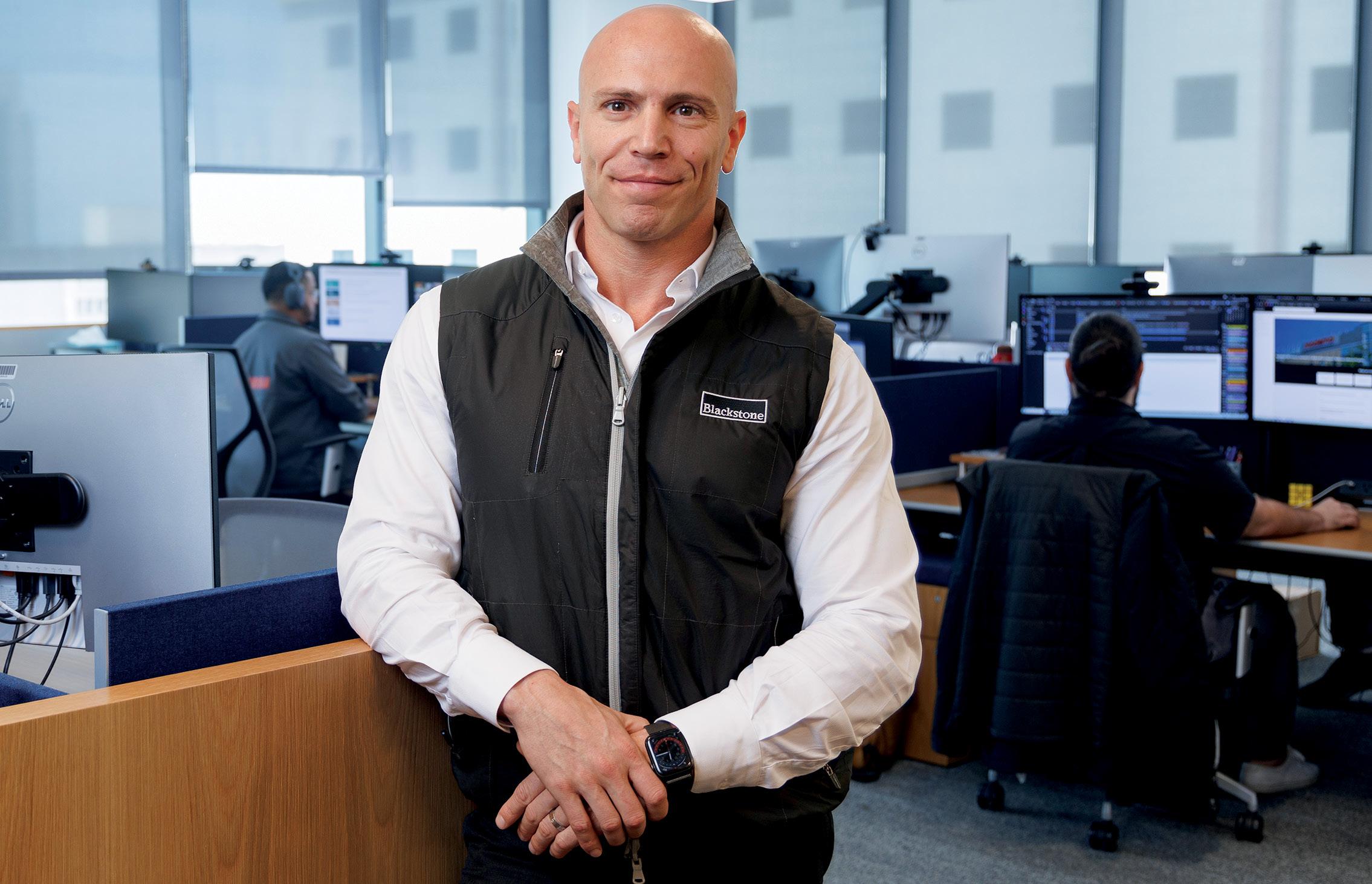
in assets under management and owns ~12,500 real estate assets with the market value of the properties estimated at $586 billion, including their own buildings, making them the world’s largest owner of commercial real estate.
Next down the list is the private equity segment, with $310 billion in assets under management and 126 portfolio companies in such categories as life sciences, infrastructure, and energy, companies like Ancestry, Phoenix Tower International, and Copeland (previously known as Emerson Climate Technologies). Another private equity category is “tactical opportunities,” the edgier investments in new technologies, companies like Cryoport (bio logistics), CoreWeave (cloud infrastructure powering AI) and ARKA (advanced military and space technologies).
It’s this high-tech edge to Blackstone that makes it such a darling in Miami’s tech ecosystem, with the city’s venture-capital mindset and cadre of cyber startups. Within Blackstone, technology is the backbone, with different verticals run by several CTOs. In addition to Schertzer’s Enterprise Technology vertical, there is one for Liquid Asset Management Technology, Real Estate and Private Equity Technology, Data, Cloud and Developer Experience, Corporate and Finance Platforms and Human Resources Technology.
The software that Blackstone employs is a mix of programs created in house and those imported from third parties. “We’re not going to build an email system when Microsoft Office 365 is available or build a video conference system when Zoom is available,” says Schertzer. “The things that are proprietary to Blackstone which require heavy customization to fit our business model, or just doesn’t exist, we build. So, it’s a combination of build versus buy, depending on the use case.”
It’s very important that any city in which we work is a city where we feel like we can engage with and contribute to, whether that would be volunteering or charitable work. And Miami checked that box as well...
JOSH SCHERTZER, ABOVE, IN THE MIAMI OFFICES OF BLACKSTONE
One area where Blackstone has made strides, says Schertzer, is in the use of cloud technology. “Under the leadership of John Stecher, who’s the CTO of our CTOs, we made a big push during the pandemic to modernize our infrastructure and migrate to AWS (mega-cloud provider Amazon Web Services), which is now where we are in our final state. And this has unlocked us significantly in terms of [being] more efficient and more productive, because we can build and deploy much faster.”
Other areas of tech focus for the firm, says Schertzer, are cybersecurity and automation. The firm’s cybersecurity program is run by Adam Fletcher, the other member of the original Blackstone Miami duo, whose job is to not only protect Blackstone’s intellectual property but to advise its portfolio companies on cybersecurity. As for automation, the goal is to run mundane tasks robotically, so that the firm can stay as lean as possible, and free up personnel for higher functions. Which is where Artificial Intelligence (AI) comes in.
“AI is a significant theme for us,” says Schertzer, "Blackstone











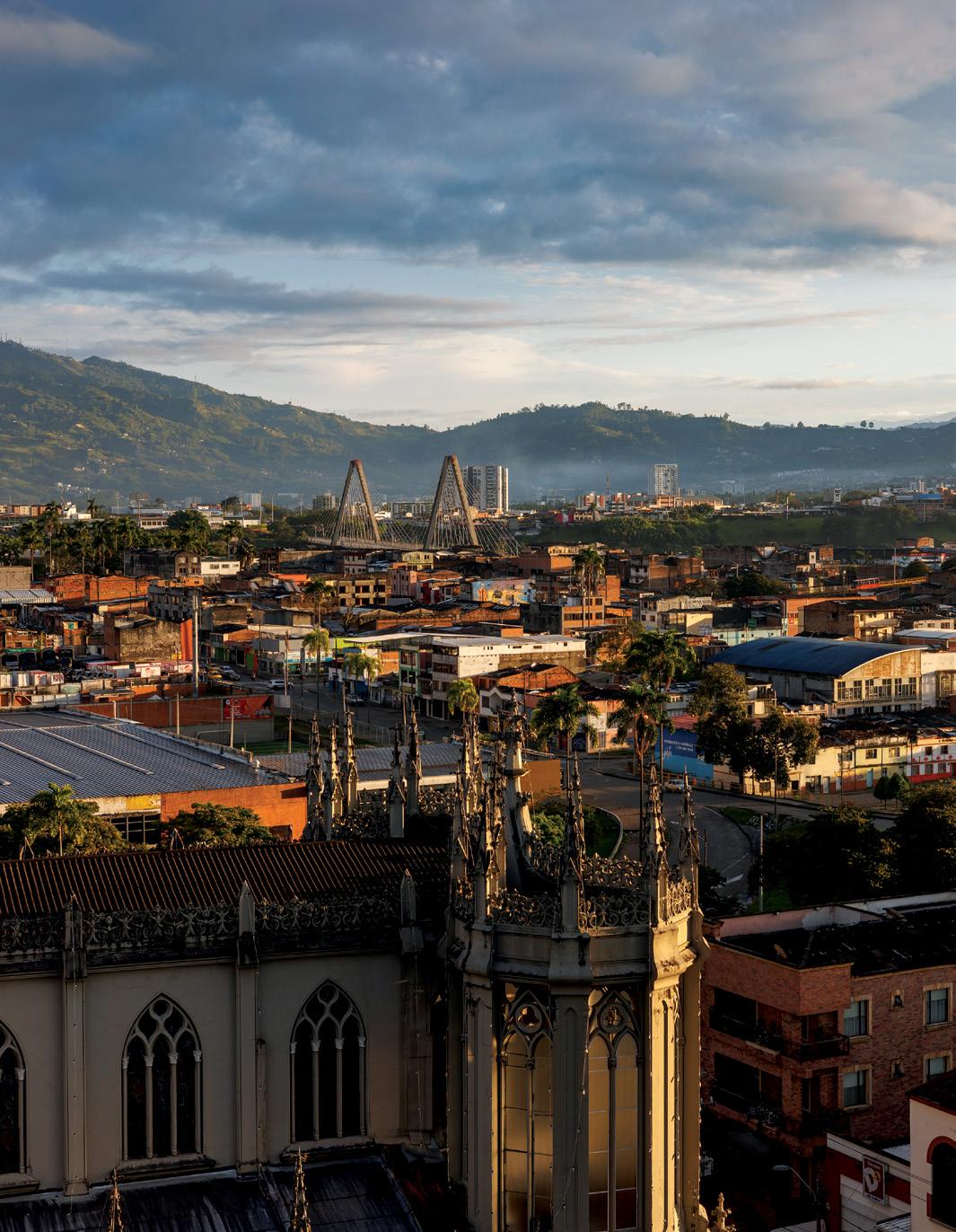

is exploring generative AI in several ways. On the engineering side, we are working with a generative AI product called Cody, from Sourcegraph, that has the potential to survey Blackstone’s abundant, fragmented codebases and then write codes and create new software to help cut the time needed to deal with those tasks." They are also exploring rolling out the various “Copilot” and assistant tools from Microsoft, Zoom and Salesforce to help employees be more produc-
tive. A third area is the deployment of self-service helpdesk chatbots that aim to provide employees with a more efficient, self-service option for support requests.
On the investment side, Blackstone is building a tool that has the potential to intelligently augment investment decisions by processing the firm’s abundant data across its portfolio. “Call it a deep company analysis or sector analysis using generative AI. That’s

a big area that we’re leaning into very early innings… we’ve got a lot of intellectual property around the data and layering a generative AI solution on top of that we think could really benefit the firm.” Allied to that would be AI programs that accelerate finance processes and legal compliance.
Even without such accelerators in place, the investment performances for various Blackstone funds are among the best out there, though not all are winners. Investments in private equity infrastructure rose 12.1% last year. Investments in private credit did even better, with a 16.4% return. Their opportunistic real estate fund slipped 6.3%, however. Although, slips like this, especially in real estate, do not worry the behemoth; Blackstone is in it for the long run. One legendary Blackstone company – a 71% write down of its 2007 $26 billion acquisition of Hilton Worldwide – was later turned around by Blackstone when President and COO Jonathan Gray was then Global Head of Real Estate. Blackstone bought back its debt, invested another $800 million, and took Hilton public in 2013 for a $14 billion profit.
With such huge profits, Blackstone remains conscious of the importance of giving back. Drilled into the corporate DNA is the philosophy that it should engage philanthropically where it operates. This was another reason to pick Miami – the idea that Miami was still a young city, a place where a major corporation could make a difference. “It’s very important that any city in which we work is a city where we feel like we can engage with and contribute to, whether that would be volunteering or charitable work. And Miami checked that box as well,” says Schertzer. Among their contributions, the Blackstone Charitable Foundation has committed $5.4 million to establish a LaunchPad program for entrepreneurial skills at seven colleges and universities across Florida (MDC, FIU, UF,
FSU, UCF, UNF, and Florida A&M). Since its inception in Miami, Blackstone employees have also contributed 700 hours of community service, supporting Miami-Dade Coastal Cleanup and Miami Waterkeeper, along with a half dozen other organizations.
Schertzer himself serves on various advisory boards across the technology sector and local Miami nonprofits, including the Dean’s Council for Florida International University’s Business School, the Board of Venture Miami STEM Scholarship Fund, and the Board of Directors for Friends of the Underline. “That one – the Underline – is one that I am extremely passionate about and a great way for our local community to transform our urban spaces,” he says. "Meg Daly and the Underline team have done a fantastic job driving this mission forward."
As for the great experiment of moving Blackstone to Miami, says Schertzer, “We have no regrets for this decision at all. Right now, it’s proving the thesis that we had it right, that we picked the right city…. We are still extremely bullish on Miami as a whole in terms of talent and in terms of growth, so for sure this office will continue to expand and we will continue to invest in hiring folks down here.”
And as for their impact on the city, that has been a win-win. “Blackstone’s arrival into the Miami environment was arguably one of the most powerful signals to the world that Miami has reached the next level hub for technology investment and financial firms,” says Saif Ishoof, founder of Lab22c, a leading Miami-based strategic advisory firm that tracks the region’s tech ecosystem. “It is undeniable when the world’s largest alternative asset manager establishes a strategic footprint in Miami and more importantly when local leaders like Josh and Adam get so actively engaged in our region. I am excited about what the multiplier effect of Blackstone’s presence will be for our innovation economy as well as for talent in the Miami market.” l

JOIN THE LEADING INTERNATIONAL TRADE ORGANIZATION DEDICATED TO FOSTERING BILATERAL TRADE.
BECOME A MEMBER TODAY! WHETHER YOU ARE NEW TO INTERNATIONAL TRADE OR LOOKING TO EXPAND YOUR GLOBAL CONNECTIONS, WTCM EVENTS, CONFERENCES AND TRADE SHOWS PROVIDE THE IDEAL PLATFORM TO ENHANCE YOUR BUSINESS AND GROWTH.

CONTACT US:






SOUTH FLORIDA’S TRADE WITH THE WORLD, COUNTRY BY COUNTRY
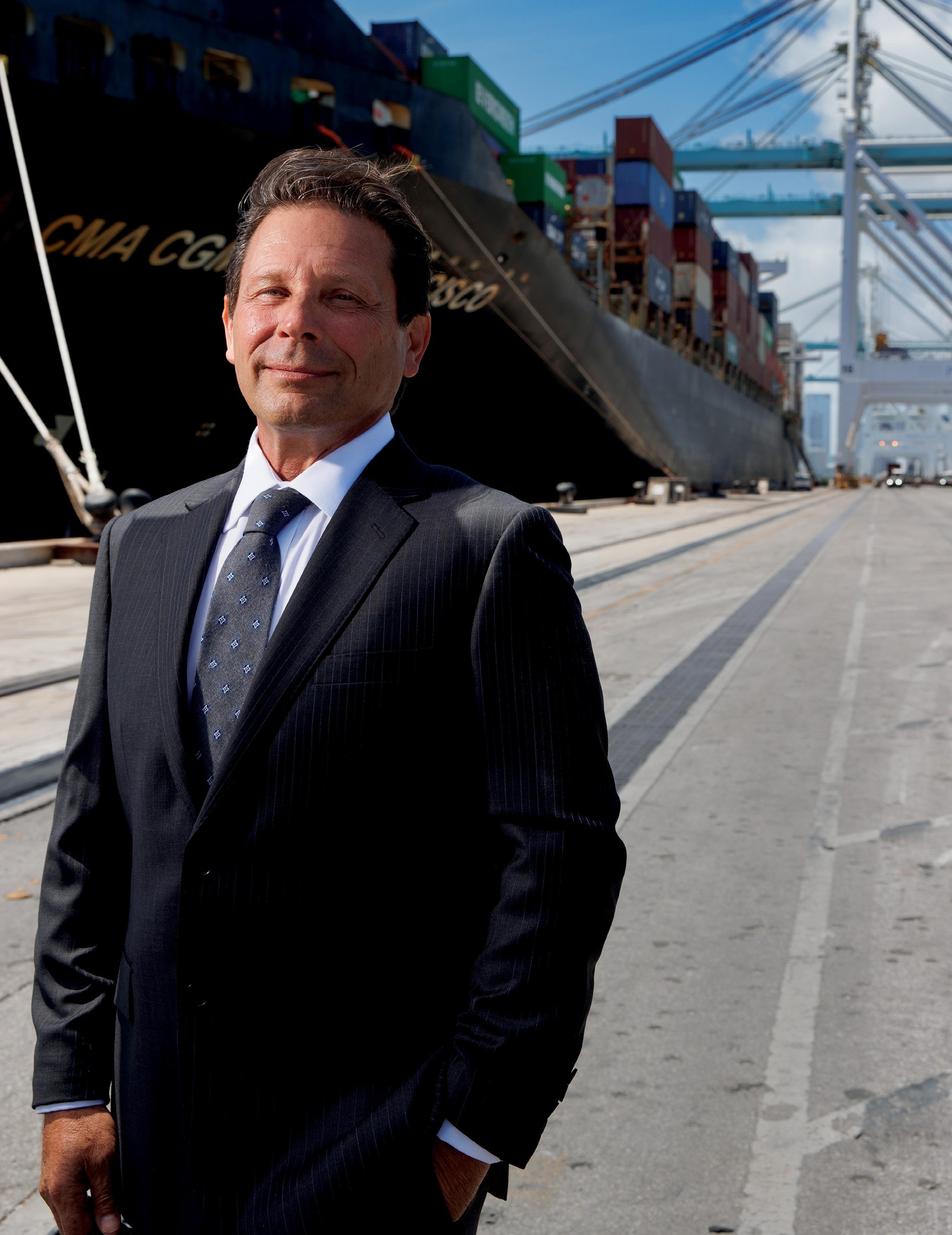
We’re fortunate in Miami that we have diverse trade between Asian cargo, European cargo, and the Western Hemisphere, where we are really strong, particularly with Latin America. Many [sea] ports were down double-digits in 2023. PortMiami didn’t experience that.…
ANDY HECKER, ASSISTANT PORT DIRECTOR AND CFO AT PORTMIAMI."Trade, like water, flows through the path of least resistance. 2023 marked a year of resistance, challenges, and transformations in global trade patterns,” says Alice Ancona, Vice President of the World Trade Center Miami. Indeed, worldwide trade saw a 5 percent decrease due to economic slowdowns, high-interest rates, geopolitical tensions, and supply chain disruptions.
The Miami Customs District, however, did not experience a similar downtrend. Instead, the combined air and seaports of South Florida exhibited resilience and sustained growth in 2023, albeit slender. Following the post-pandemic boom in trade that South Florida (and most of the world) experienced in 2022, the Miami District saw a modest uptick in overall trade for 2023, growing by 0.29%. World trade, meanwhile, shrank by about $1.5 trillion – close to 5% – according to UNCTAD’s latest Global Trade Update.
“Coming out of 2022, there were overbuilt inventories, geopolitical conflict, inflation, and higher interest rates. So, it’s probably no surprise that 2023 saw withdrawal across the globe,” says Andy Hecker, assistant port director and CFO at PortMiami. “We’re fortunate in

Miami that we have diverse trade between Asian cargo, European cargo, and the Western Hemisphere, where we are really strong, particularly with Latin America. Many [sea] ports were down double-digits in 2023. PortMiami didn’t experience that.” Overall trade by value for PortMiami did decrease by 3.47%, but that was offset by airborne trade.
In 2023, total trade for the Miami Customs District was valued at $137 billion, compared to $136.6 billion in 2022 and $120 billion in 2021. The total for the district – which includes Miami International Airport (MIA), PortMiami, Port Everglades, Port of Key West, Fort Lauderdale-Hollywood International Airport, West Palm Beach International Airport, and Port of Palm Beach – represented more than two-thirds of all 2023 two-way trade for Florida, valued at $181.8 billion. Within the District, most merchandise was handled by MIA ($74.5B) and PortMiami ($31.7B), together more than half the state’s total.
Though cargo demand peaked at an all-time high in 2021, as home-bound consumers ordered record levels of products, the dollar value of goods actually rose the following years, increasing the value of bilateral trade for the district. Coming out of the pandemic prices skyrocketed, so people started buying less for more. “Year over year, we’re just up slightly. We started to see that flatten, but now we’re going to see that curve go up,” says Hecker.
At Port Everglades, similar patterns are taking place. The South Florida seaport saw an 8.03% decrease in volume for 2023, having moved 1.006M TEUs in 2023 compared to 1.09 TEUs in 2022. But trade by value decreased by only 3.56%, with 2023 values recorded at $27.6B compared to $28.6B in 2022. Acting Port Director Glenn Wiltshire attributed the decline to the post-COVID
All ports had that COVID surge, where people were buying more stuff because they couldn’t go anywhere. Then that sort of leveled off. That sort of pinched us, because they weren’t there for an extended period, it is just a blip...
GLENN WILTSHIRE, ACTING PORT DIRECTOR OF PORT EVERGLADESsurge. “All ports had that COVID surge, where people were buying more stuff because they couldn’t go anywhere. Then that sort of leveled off,” he says. Wiltshire also notes the effect of cargo line MSC discontinuing its Santana Service in 2023, which connected Southeast Asia to Port Everglades as the first U.S. stop on their around-the-world route. “That sort of pinched us, but because they weren’t there for an extended period, it is just a blip,” says Wiltshire. Regardless, the port still celebrated handling over 1 million TEUs for the eighth consecutive year.
MIA is the exception to the trend, which is why South Florida has seen a slight growth in trade despite the global patterns. Cargo operations at the Miami airport reached new heights in 2023, registering a 1% growth to a record-breaking 2.78 million tons, driven by 2.2 million tons of international cargo and 548,976 tons of domestic shipments. In 2021, MIA reached 2.75 million U.S. tons, a volume that remained consistent in 2022 while the dollar
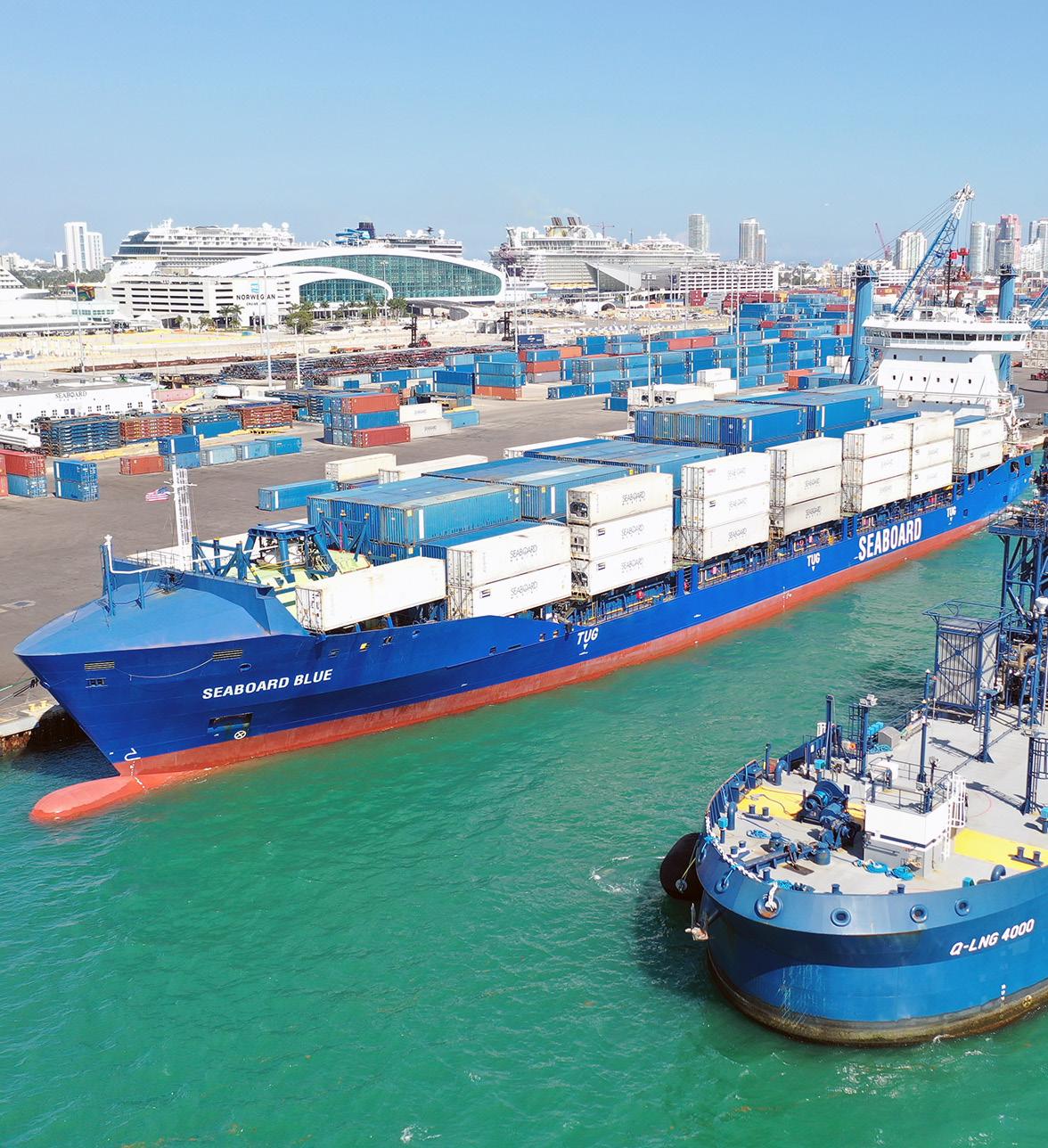
In 2023, total trade for the Miami Customs District was valued at $137 billion, compared to $136.6 billion in 2022 and $120 billion in 2021. Within the District, most merchandise was handled by MIA ($74.5B) and PortMiami ($31.7B), together more than half the state’s total. Shown is a cargo vessel in PortMiami ready to unload containers.

Cargo traffic is a huge, important part of what we do, and a huge part of the trade infrastructure of Miami-Dade. Without our cargo operations, MIA would not be the largest economic engine in our county and the state of Florida that it is today …

value rose. 2023 is the third consecutive year that MIA handled more than 2.7 million tons of cargo.
In fact, rankings released by Airports Council International show that MIA moved up from #7 to #6 in the world in 2023 for total cargo tonnage, and was the only U.S. airport in the top 10 with growth last year. “Cargo traffic is a huge, important part of what we do, and a huge part of the trade infrastructure of Miami-Dade,” says Ralph Cutié, Director and CEO of MIA. “Without our cargo operations, MIA would not be the largest economic engine in our county and the state of Florida that it is today.” MIA continues to be the busiest U.S. airport for international freight with its annual trade value of $74.5 billion amounting to 90% of Florida’s total air trade and 39% of the state’s combined air and sea trade.
One contribution to MIA’s continued growth last year was the explosion of “fast fashion.” American consumers began buying more from fashion companies that produce inexpensive clothing inspired by the latest trends, with quick production and distribution to keep up with changing styles, including Zara, H&M, and Shien. “American consumers with a strong U.S. dollar can buy a lot of this stuff in real-time, so it has offset the downturns a bit,” says Nemer Abohasen, VP and GM of the Southeast U.S. for DHL Express.
Although China is still the district’s top import origin, a push to diversify the supply chain had companies looking to the Philippines (district trade increased by 10.3%) and Vietnam (district trade increased 11.2%) to source some of that fashion. “These countries have been a China plus one, where we’ve seen a couple of other countries start to step up,” says Abohasen. India is also an emerging market for the district with an 11.6% increase in imports.
According to Gary Goldfarb, Chief Strategy Officer for Interport Logistics and Past Chair-Miami Dade Beacon Council, the pharmaceutical industry is also moving away from China and into countries like India or Brazil (the district’s top trading partner, valued at $17.34B in 2023). “India is getting very active in the Americas. Intelligently, they’re using Miami as a point of contact,” says Goldfarb.
Pharmaceutical products are meanwhile one of the Miami Custom District’s top exports (specifically into Latin America), due to MIA’s robust cold chain capabilities and CEIV Pharma certifi-

If you look at Miami as a trading hub, our competitors aren’t what they used to be. The only one truly having global capabilities is Miami.
GARY GOLDFARB, ABOVE, CHIEF STRATEGY OFFICER FOR INTERPORT LOGISTICScation, making it the first Designated Pharma Hub Airport in the U.S. and only second in the world after Brussels’ Airport. “If you look at Miami as a trading hub, our competitors aren’t what they used to be. The only one truly having global capabilities is Miami,” says Goldfarb. As a global gateway, companies usually manufacture products in Asia – like pharma in India – then redistribute into Latin America via Miami’s ports.
Another example is telephones, the district’s top import (up 31.6%) and second largest export (up 25.5%). Abohasen notes that in Latin America, many people opt for alternatives to iPhones or Samsung devices due to their high cost. Consequently, companies manufacture cheaper brands in countries like Vietnam (phone im-
ports up 49.5%) or India (phone imports up 93.8%) then redistribute into Latin America through Miami.
For imports as a whole, the Miami Customs District saw a slight growth of 2.2% (to $63.7B) in 2023, compared to overall U.S imports that were down by .2%. Notable changes in imports were Nicaragua (down by almost 20%), Mexico (down by 16%), and El Salvador (down by 13%). Those drops were balanced by what Ancona from the Miami World Trade Center notes – that the district’s import markets are more diversified than its export markets. Colombia was up by 10%, Brazil was up by 30%, UK was up by 14%, and India and Vietnam were up by 11%.
Overall connections to Latin America, Central America, and the Caribbean remain strong, with most of the district’s top trading partners being in that region. Even though imports from Mexico decreased last year, trade experts believe the country is on the rise, with more manufacturing capabilities than it had in the past decade. “Before China joined the WTO, Mexico was our manufacturing base. China’s sucked all of that away, but now it is coming back,” Goldfarb says. “Costa Rica is making chips again, Honduras and Guatemala are making garments again, El Salvador is making highend garments again, etc..”
For PortMiami, overall trade with Mexico went up (by 58%) along with several other Latin American countries — a favorable trend for South Florida. There are also tax advantages to moving cargo by water between Mexico and the United States, a recent development as land border issues are creating more congestion. “We have a much better relationship with Latin American countries than we do with China, though we’re still going to see products coming out of China,” says Hecker, “But I think on some of the higher-end products like technology and things that require chips and electronics, we’re going to see more of that come from Mexico by water.” PortMiami is now working on a direct service between Miami and Mexico.
While there are some security concerns, products like furniture and apparel coming from China are not among them. This year China Cargo Airlines will begin three weekly flights from MIA to Shanghai through Los Angeles, making it the first cargo route between MIA and mainland China served by a Chinese carrier.
On the export side, the Miami Customs District saw a decline of 1.2% ($895M) in 2023, half the drop experienced by the U.S. as a whole, where exports were down by 2.2%. For the District, Latin America and the Caribbean remain the primary destinations for exports, and their performance in 2023 was mixed. The most notable shifts were Honduras (down by 16%), Colombia (down by 8%), Paraguay (up by 35%), Mexico (up by 21%), and the Bahamas (up by 13%).
The rise of high-value exports is one of the notable trends over the past few years. “The products that lead Miami exports are things like aviation and technology, medical-related exports… These are all high-end, high-tech, high-value exports, and Miami is doing very well as an exporter of those products,” Manny Mencia, chairman of the board of the World Trade Center notes.
Whereas in the past Miami was known primarily for being an exporter of agricultural goods (think citrus) it has diversified into new industries (something the pandemic accelerated). Today, the top 10 commodities exported are all high-value, and the District has now become a leading distributor of high-value merchandise like telephones ($6.05B) and Integrated Circuits ($1.77B). “Sometimes we refer to ourselves as the grocery store for Latin America. But it’s not just groceries anymore – it’s medical equipment and nuclear components,” says Wiltshire.

The products that lead Miami exports are things like aviation and technology, medicalrelated exports… These are all high-end, hightech, high-value exports, and Miami is doing very well as an exporter of those products...
Export diversification remains a priority for Miami. The city’s trade leaders agree that it’s vital to expand its international relations worldwide instead of keeping all its eggs in the Latin basket. “There is still work to be done but we’re making great progress,” says Mencia. Historically, Miami trades with Latin America and receives investment from Europe and Asia. “But with the pandemic shining a light on the break in the supply chain, we’re seeing more diversification. Continuing that trend is very important so that we can achieve our destiny as one of the great global trading centers, not just of the Western Hemisphere, but of all the world,” says Mencia.



• Fast-Track Customs
• Flight Updates
• Shopping & Dining
• English / Spanish
• Free


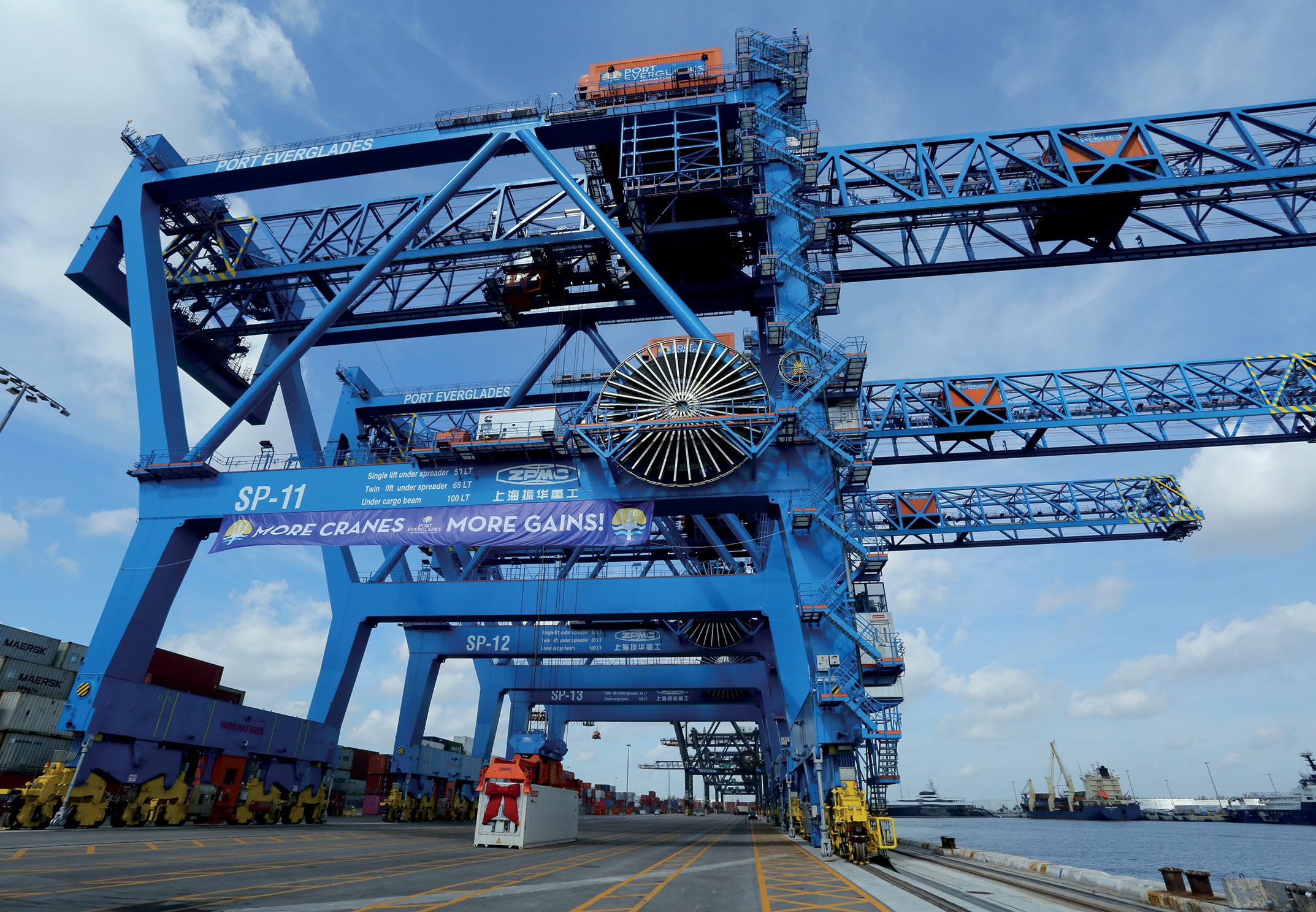
The Miami Customs District is also poised to become a manufacturing hub. Companies like Fokker Services Americas are beginning to manufacture in South Florida, in this case aviation parts, as are Princess Yachts International (UK), Thales Group (France), and Demetech (US), to name a few. Other companies are doing additive manufacturing, using 3D printing to create large parts and components. Recently introduced to South Florida and still in its early stages, Miami universities like FIU are working to further develop this technology for wide-scale use.
Looking ahead, the Miami Custom’s District anticipates growth from nearshoring in South America, as well as new routes between Miami, South America, and Asia, along with expanding trade with Europe and Africa. With these prospects in mind, experts highlight capacity as a crucial concern. In the Miami Customs District, preparations are underway to address the surge in demand.
Port Everglades is heavily investing in infrastructure projects to expand its cargo capabilities. The port recently revealed its three new Super Post-Panamax container gantry cranes going into service. The cranes, measuring 175-feet (53 meters) high can reach farther and handle a heavier load. Currently, the port ranks in the top 25% of ports worldwide for operational efficiency, according to the World Bank’s latest Container Port Performance Index. Port Everglades now has 13 container gantry cranes (six are the Super Post-Panamax and seven are Post Panamax) and one mobile harbor crane. Additionally, the port’s $437.5 million Southport turning notch extension project was completed this past fall. It expanded the previous deep-water turnaround radius from 900 ft. to 2,400 ft., allowing up to five new cargo berths.
PortMiami, landlocked on Dodge Island off downtown Miami,
has been developing technology to enhance its services and increase capacity without physical expansion. Its RFID (Radio Frequency Identification) tag program is dramatically reducing the wait time for trucks that load and unload containers at the port. As port director Hydi Webb notes, “the faster we can move product on and off the port, the more efficient we are.” Within the next two years PortMiami also intends to establish an inland facility in the Northwest corner of Miami-Dade County, connected by rail to the port, to accommodate TEUs and other cargo facilities.
MIA, also facing space constraints, is working on adding more cargo infrastructure by building up rather than out, with a planned multi-billion dollar Vertically Integrated Cargo Community. The project is expected to generate billions of dollars in private investment and thousands of jobs during and after construction.
In essence, despite global trade challenges, the Miami Customs District showcased resilience with modest growth in 2023. Its diverse trade portfolio and strategic location buoyed its performance, while investments in infrastructure and a focus on high-value exports position the district for continued success. Looking ahead, it remains poised to navigate evolving trade dynamics and emerge as a leading hub for international commerce.
“I think we’re uniquely positioned to keep emerging as the new New York of the 21st century. But we need to continue to invest in our infrastructure. As we keep doing that, I believe good things are going to be on the horizon. Ten years from now we will be in a place that we couldn’t have imagined 20 years ago,” reflects Mencia. l
With the largest multi-modal logistics network in the industry, PayCargo allows for faster release of cargo and improved daily cash flow for all types of freight payments and invoices.


YOU ARE WHAT YOU SHIP AND RECEIVE: A BREAKDOWN OF THE THREE KEY TRADE GATEWAYS FOR THE MIAMI CUSTOMS DISTRICT
Taking a closer look at trade through the Miami Customs District, it becomes clear that each primary port has its own niche. Most high-value products, such as gold, electronics, and live animals, come through Miami International Airport. Most bulk products like fuel, agricultural products, heavy machinery, and automobiles come through Port Everglades and PortMiami.
PortMiami is known for handling containerized cargo carrying a diverse range of goods such as electronics, furniture, apparel, machinery, chemicals, and consumer goods – hence the nickname “Cargo Gateway of the Americas.” It serves as a major hub for international trade with the Caribbean, Latin America, and the Asia-Pacific region. PortMiami is Miami-Dade County’s second most important economic engine, contributing $43 billion annually to the local economy and supporting more than 334,500 jobs in South Florida. It is also recognized as the Cruise Capital of the World. In 2023, PortMiami recorded $31.7B in total trade.
Port Everglades, located in Fort Lauderdale, has historically handled bulk products such as coal, minerals, grains, and other raw
materials. It is a major entry point for petroleum products, including gasoline, diesel fuel, jet fuel, and other refined petroleum products for both the local market and regional distribution. These commodities are typically transported in bulk carriers and serve different industries such as power generation, construction, and agriculture. The port has also grown its capacity to handle perishables and containers. In 2023, Port Everglades recorded $28.62B in total trade.
Miami International Airport is a major hub for perishable goods, particularly fruits, vegetables, flowers, and seafood, due to its capacity for temperature-controlled facilities and specialized handling to maintain freshness during transit. The airport plays a vital role in transporting pharmaceutical products and medical supplies, such as temperature-sensitive drugs and vaccines. The airport also handles cargo related to the aerospace industry, including aircraft parts, engines, and other aviation equipment, as well as high-tech and electronic components (mostly from China) to be redistributed to Latin America and the Caribbean. MIA is the district’s largest economic engine. In 2023, the airport recorded $74.5B in total trade.
Here is a closer look at South Florida’s top imported and exported products from 2023:
Cruise Capital of the World Global Gateway of the Americas








15. HONDURAS
16. COSTA RICA TOTAL TRADE: $4.13B EXPORT VALUE: $2.96B IMPORT VALUE: $1.17B
17. GUATEMALA TOTAL TRADE: $3.38B EXPORT VALUE: $1.8B IMPORT
18.
19. NICARAGUA TOTAL TRADE: $2.56B EXPORT VALUE: $658M IMPORT
20. MEXICO TOTAL TRADE: $2.54B
$1.1B
21. EL SALVADOR TOTAL TRADE: $2.34B EXPORT VALUE: $1.23B IMPORT VALUE: $1.11B
22. PANAMA TOTAL TRADE: $2.25B EXPORT VALUE: $2B IMPORT VALUE: $254M
23. JAMAICA TOTAL TRADE: $1.03B EXPORT VALUE: $905M IMPORT VALUE: $129M
24. TRINIDAD & TOBAGO TOTAL TRADE: $1B EXPORT VALUE: $942M IMPORT VALUE: $66.7M
25. HAITI TOTAL TRADE: $901M EXPORT VALUE: $279M IMPORT VALUE: $622M
26. CANADA TOTAL TRADE: $828M EXPORT VALUE: $153M IMPORT VALUE: $675M
27. CAYMAN ISLANDS TOTAL TRADE:

Three Facilities in 300,000 Sq Ft Over Miami, Totaling
62.
63.
$109.2M
64. FINLAND TOTAL TRADE: $102.8M EXPORT VALUE: $52.79M IMPORT
65.
$102.6M
$33.7M
66. ROMANIA TOTAL TRADE: $95.7M EXPORT VALUE: $26.2M IMPORT VALUE: $69.5M
67. LUXEMBOURG TOTAL TRADE: $80M EXPORT VALUE: $71.9M IMPORT VALUE: $8.03M
68. BULGARIA TOTAL TRADE: $69M EXPORT VALUE: $111M IMPORT VALUE: $58M
69. UKRAINE TOTAL TRADE: $44.8M EXPORT VALUE: $21M IMPORT VALUE: $23.8M
70. SERBIA TOTAL TRADE: $30.5M EXPORT VALUE: $10.2M IMPORT VALUE: $20.3M
71. LATVIA TOTAL TRADE: $25.29M EXPORT VALUE: 8.29M IMPORT VALUE: $17M
72. ESTONIA TOTAL TRADE: $24.52M EXPORT VALUE: $14.7M IMPORT VALUE: $9.82M
73. SLOVAKIA TOTAL TRADE: $17.27M EXPORT VALUE: $4.27M IMPORT VALUE:
KEEPING YOU ABOVE THE COMPETITION

VIRTUALLY ZERO SHIP WAIT TIME
INDUSTRY-LEADING CRANE RELIABILITY
QUICK TRUCK PROCESSING CHOICE OF TERMINALS
SHORT SHIPPING CHANNEL
PROXIMITY TO CARIBBEAN/ SOUTH AMERICA

SUPERB INTERMODAL CONNECTIONS
As one of the top ports in the world and located at the confluence of South Florida’s Atlantic shipping lanes, airways, railways and highways, we are your unrivaled connection to global markets.
Ranked in the top 25% of ports worldwide for operational efficiency, according to World Bank’s latest Container Port Performance Index, Port Everglades offers you unrivaled access to your markets through direct highways, rail and a short entrance channel. Here, you’ll enjoy complete multi-modal connections, fast and efficient operations, quick truck turnarounds and superior crane uptime. Port Everglades puts you on the path to profits. We’ll take it from here. PortEverglades.net
95. TAIWAN TOTAL TRADE: $899M EXPORT VALUE: $186M IMPORT VALUE: $713M
96. HONG KONG TOTAL TRADE: $662M EXPORT VALUE: $411M IMPORT VALUE: $251M
98.
113.
125.
$1.97
126. LAOS TOTAL TRADE: $1.39K EXPORT VALUE: $892K IMPORT VALUE: $504K
127. TAJIKISTAN TOTAL TRADE: $1.19M EXPORT VALUE: $1.19M IMPORT VALUE: $4K
128. YEMEN TOTAL TRADE: $457K EXPORT VALUE: $296K IMPORT VALUE: $161K

162. ZIMBABWE
163.
$1.97M
164. CENTRAL AFRICAN REP. TOTAL TRADE: $1.64M EXPORT VALUE: $1.64M
165. BURKINA FASO TOTAL TRADE: $1.22M EXPORT VALUE: $1.23M IMPORT VALUE: $3K
166. CHAD TOTAL TRADE: $1.22K EXPORT VALUE: $1.17K IMPORT VALUE: $54.6K
167. RWANDA TOTAL TRADE: $1.12M EXPORT VALUE: $1.12M IMPORT
168. MAURITANIA TOTAL TRADE: $923K EXPORT VALUE: $939K IMPORT VALUE: $44K
169. GAMBIA TOTAL TRADE: $935.6K EXPORT VALUE: $926K IMPORT VALUE: $9.6K
170. ZAMBIA TOTAL TRADE: $879K EXPORT VALUE: $788K IMPORT VALUE: $91K
171. GUINEA TOTAL TRADE: $771.2K EXPORT VALUE: $673K IMPORT VALUE: $98.2K
172. MALAWI TOTAL TRADE: $761K EXPORT VALUE: $761K
173. ESWATINI TOTAL TRADE: $537K EXPORT VALUE: $478K IMPORT VALUE: $59K
174. SÃO TOMÉ & PRÍNCIPE TOTAL TRADE: $486K EXPORT VALUE: $233K IMPORT VALUE: $253K
175. BOTSWANA TOTAL TRADE: $466.8K EXPORT VALUE: $462K IMPORT VALUE: $4.8K
176. SUDAN TOTAL TRADE: $214K EXPORT VALUE: $214K
177. SOUTH SUDAN TOTAL TRADE: $258K EXPORT VALUE: $153K IMPORT VALUE: $51
178. ERITREA TOTAL TRADE: $181K EXPORT VALUE: $181K
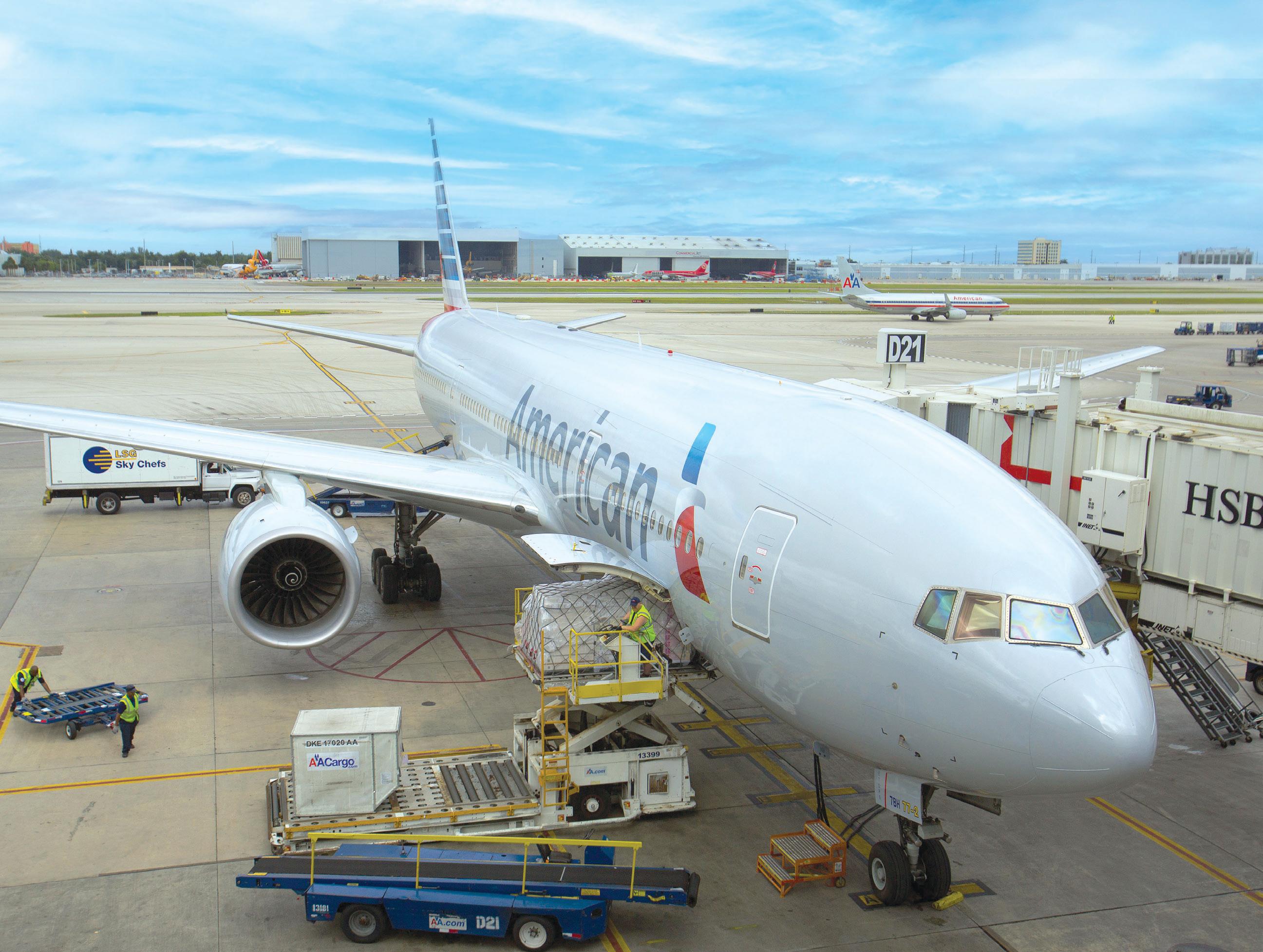



• Multi-Billion Dollar Hi-Tech Hub
• No Slots/Curfews/Delays
• Top Perishable Products Hub
• Top U.S. International Freight Hub
• Multi-Billion Dollar Pharma Hub
• Top Latin American/Caribbean Hub
• High Ranking Global Freight Hub
• Major North American e-Commerce Hub

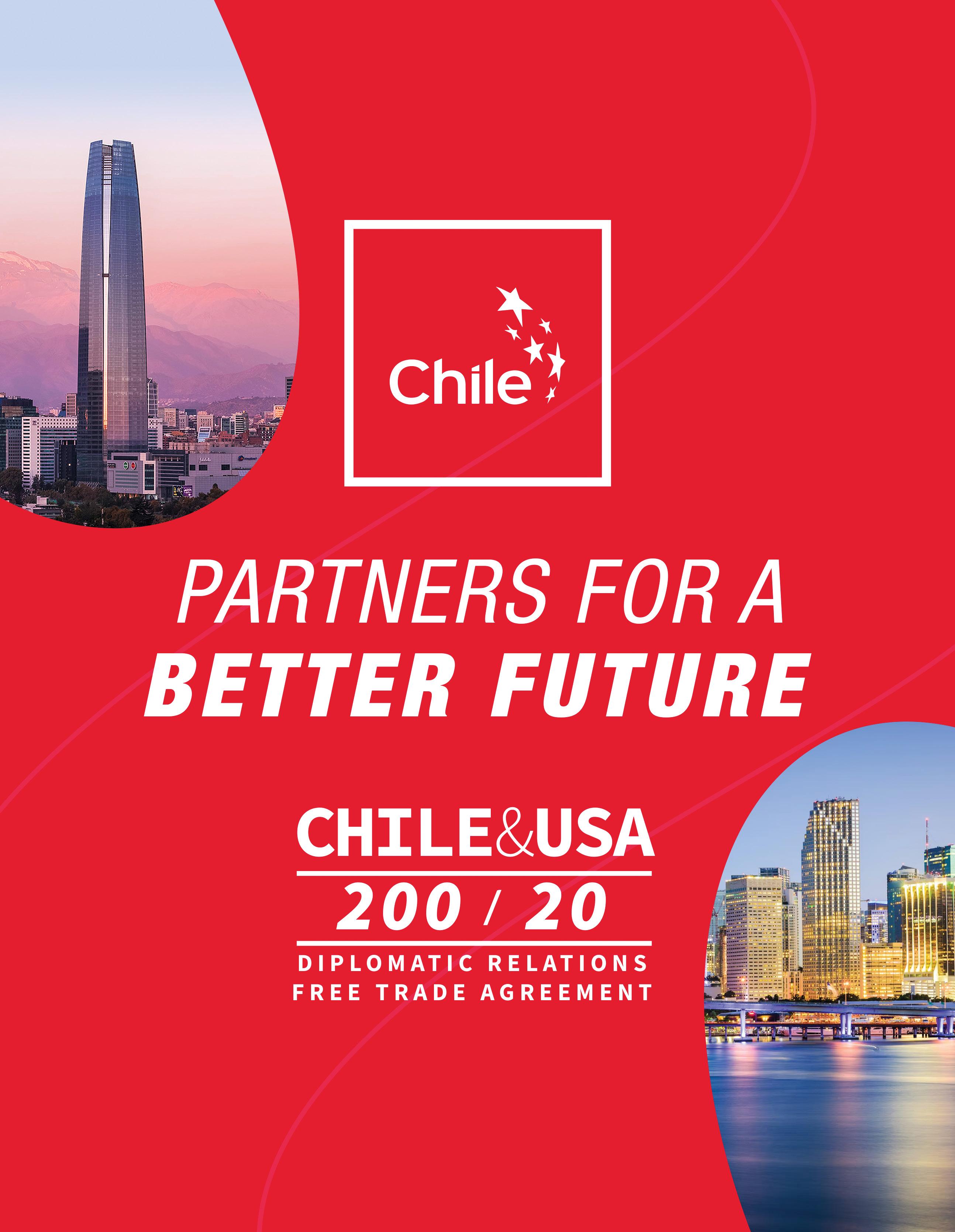


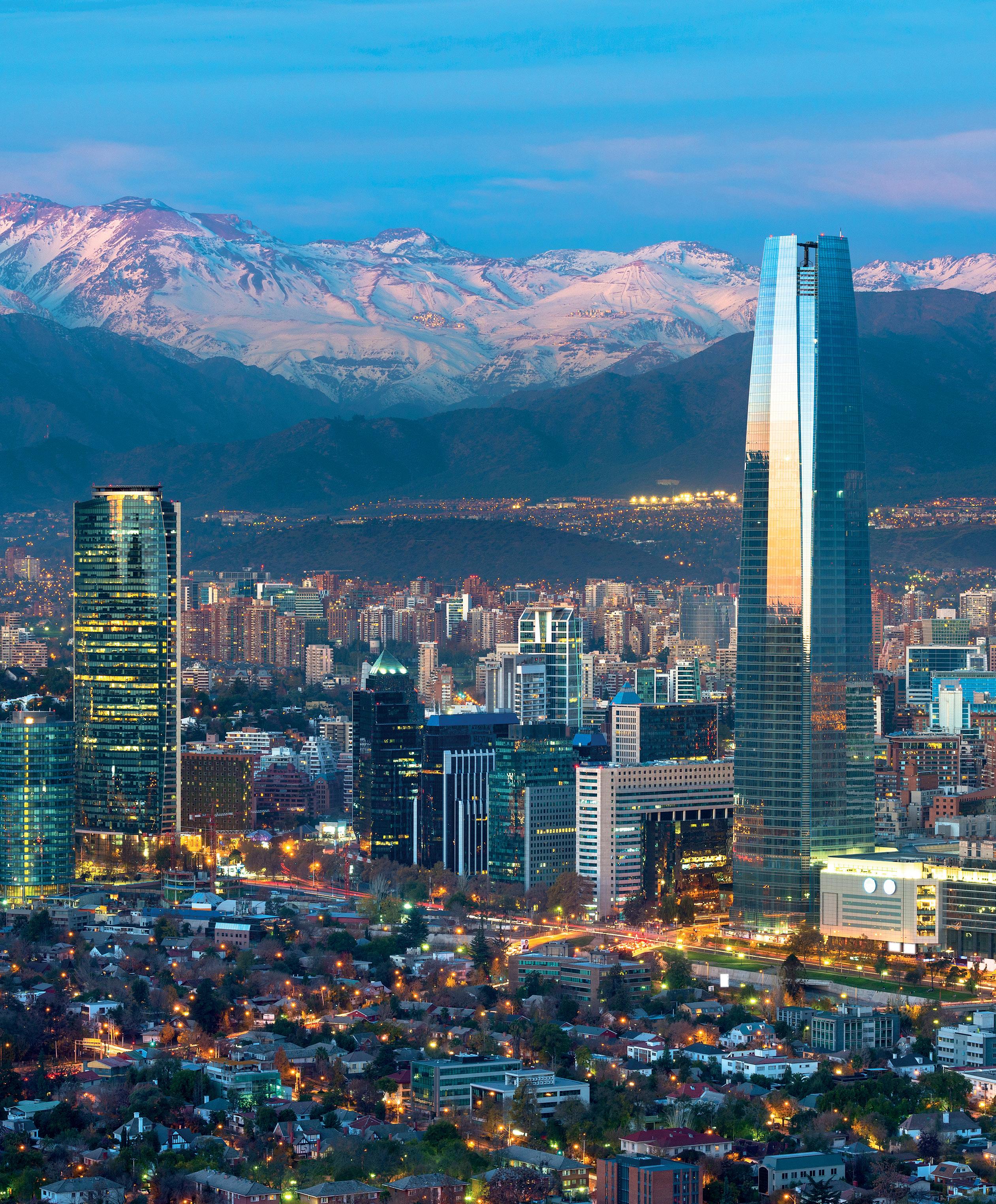
TWENTY YEARS AFTER SIGNING THE FREE TRADE AGREEMENT, COMMERCIAL TIES BETWEEN CHILE AND THE US ARE STRONGER THAN EVER – AND EVOLVING SANTIAGO, CHILE’S CAPITAL IS THE 7TH

IThe signing of the treaty 20 years ago was of extraordinary importance because it has favored and benefited both countries in trade, attracting investment and companies, as well as facilitating
BY YOUSRA BENKIRANEn December of last year, Chilean and American industry leaders, startup founders, and governmental officials met at the Hyatt Regency Hotel in Miami for “Partners for a Better Future.”
Organized by Chile’s Export Promotion agency ProChile, the event marked 200 years of diplomatic relations between Chile and the U.S., and two decades since the U.S./Chile Free Trade Agreement (FTA) was signed. It was a fitting location given Miami’s significance as the site of the FTA signing.
“The signing of the treaty 20 years ago was of extraordinary importance because it has favored and benefited both countries in trade, attracting investment and companies, as well as facilitating the strategic access of Chilean companies to the U.S. market,” the Honorable Juan Gabriel Valdés, Chilean Ambassador to the U.S., said at the event.
Since the signing of the FTA, bilateral trade in goods and services between the U.S. and Chile has increased by fivefold, reaching nearly $49 billion last year. According to the American Embassy in Chile, the U.S. is now the number one export destination for Chile’s small and medium-sized companies. Conversely, the U.S. is the second largest source of foreign direct investment into Chile with an aggregate value of $25B (about 8 percent of Chile’s $301 billion
GDP) according to the latest information published by Chile’s central bank (2022). Only Canada has a larger stake of FDI ($36B).
In the other direction, Chile is among the top 15 fastest-growing sources of FDI in the U.S. As of 2021, Chilean companies had invested more than $4 billion in the U.S. “But what is truly remarkable is that some Chilean firms investing in the United States are creating exports to other markets. This is a win-win for both of our economies,” says Bernadette M. Meehan, U.S. Ambassador to Chile. In 2020, Chilean firms established in the U.S. exported some $125 million in goods to other countries.
“The relationship between the two countries is great in terms of trade, investments, exchange, scholars, ideas, and culture. Chile is a country that has benefited greatly from the open borders of the United States, just as the US has benefited from access to the Chilean market,” says Carlos Singer, Chairman of the Board of Directors at International Finance Bank in Miami and the former CEO of the magazine America Economia. “Even though it’s a small market, it’s a significant country in terms of natural resources and is open to foreign investment. It’s open to the arrival of ideas and investment ideas from the United States – and the same in the United States.”
In a significant move to bolster bilateral business ventures,

and Chile. The treaty’s implications are particularly significant for industries key to Chile’s identity, such as wine, salmon, and fruit, commodities that flow from Chile to the U.S. largely through the Miami Customs District. “The free trade agreement between the U.S. and Chile opened up one of the biggest markets for Chilean exports and an increased flow of goods to South Florida ports,” says Andres Bianchi, CEO of LATAM Airlines Cargo, which the tax treaty will only enhance.
Founded in 1929, LATAM Airlines was originally Chile’s national carrier until it was privatized in the ’90s. Today, the airline group’s main cargo hub is in Miami. “When you look at what we carry, it is significant for the countries we operate in. On one side, when you look at the exports from South America, they are focused on very relevant sectors for the local economies. In Chile’s case, we provide most of the lift necessary to bring Salmon from Chile to the U.S. – specifically through Miami” says the CEO.
According to a report by the SeafoodWatch, nearly half of farmed salmon imported to the U.S. comes from Chile, the world’s second-largest producer and the largest single exporter to the U.S. In 2022, the value of Chilean salmon exported to the U.S. was $3 billion, with nearly two thirds coming through Miami’s ports ($1.82B).
Another major export for Chile is wine. With its favorable climate, diverse terrain, and innovative winemaking techniques, Chile is now the world’s fourth largest wine producer, following only Italy, France, and Spain. According to recent statistics from the Chilean Ministry of Agriculture, wine exports accounted for over $2 billion in revenue in the past fiscal year, making it one of Chile’s top export commodities.
The influx of vino creates companies like Grocers Gateway
Chile Trade Numbers with the Miami Customs District
from Chile:
Exports To Chile
Source: U.S. Census Bureau; Observatory of Economic Complexity
The free trade agreement between the U.S. and Chile opened up one of the biggest markets for Chilean exports and an increased flow of goods to South Florida ports...
Group, a South Florida firm launched by Chilean native Juan Nunez to help Chilean wine reach American supermarkets. Nunez and his two partners help wine distributors gain access to the U.S. market. “Wines from Chile are a huge part of our client base. They’re trying to get into the U.S. market but don’t know how,” says Nunez. “We’ll set them up with the right people, from FDA compliance to social media influencers,”
Another sector fueling the nation’s economic engine is mining. Renowned for its mineral-rich deposits and robust mining infrastructure, especially in the north of the country, Chile commands global attention as a leading producer of copper, lithium, and other essential metals. According to the Chilean Ministry of Mining, the country exported approximately $40 billion worth of minerals last fiscal year, a substantial portion of Chile’s total export revenue of $97.4 billion.
Bouyed by its store of lithium, Chile is rapidly emerging as a player in the global transition to renewable energy, with immense potential for the development of clean energies, green hydrogen, and energy storage. There has been a notable uptick in interest in energy investments, with 44 projects from the energy sector being added to InvestChile’s portfolio last year alone. (InvestChile is the

Right now, we have 16 [new] projects in advanced stages, which amount to $3.65 billion and almost 900 jobs.
government agency responsible for promoting Chile in the global market as a destination for foreign direct investment, acting under a Ministerial Committee presided over by the Minister of Economy.)
InvestChile concluded last year with a total of 50 American energy initiatives, with potential investments amounting to $6.4 billion. Beyond energy and the conventional sector of mining, where U.S. companies have established a strong foothold, American firms are driving innovation in sectors like telecommunications, technology, and logistics. “The value of U.S. investment is its diversity,” says the CEO of the Chilean American Chamber of Commerce, Paula Estévez.
InvestChile, which acts as a bridge between foreign investors and business opportunities incountry, has provided support to 450 projects initiated by foreign companies, with a cumulative investment value of over $33.5 billion in 2023. According to Beatriz Herrera, Investment Commissioner, North America InvestChile, companies from the U.S. accounted for the highest share of that foreign investment, totaling $9.9 billion – closely followed by Canadian firms with $5.3 billion. “Beyond the monetary aspect, what holds

Chile’s wine industry, dating back to Spanish colonization, is a key player in the country’s economy. “Chile has almost 500 years of history in winemaking that has evolved through time,” says Julio Alonso, Executive Director of Wines of Chile North America. According to Alonso, wine comprises 29 percent of the country’s agricultural exports. The country’s wine industry spans various regions, including Maipo Valley, Colchagua Valley, and Casablanca Valley, each renowned for producing distinct varietals.
All told, the wine industry employs approximately 100,000 people, of which 53,000 work in the vineyards, followed by 19,000 in logistics, transportation, and marketing, 17,000 in wineries, 9,000 in bottling, and 2,000 in production. Today in Chile there are 800 active wineries, 11,697 producers, and 394 export companies. It also contributes substantially to governmental revenues, yielding US$205 million in tax receipts from VAT and domestic alcohol taxes.
Although China is the largest market for Chilean wine, the U.S. comes close. In 2023, the Miami Customs District imported $22.2M worth of Chilean vintages. “Florida is the largest market for Chilean wine in the U.S., with Miami being very important,” says Alonso. “Chilean wine is known in Miami, as opposed to European wines, because of the deep Latin connections. Latinos know about Chile as a premium producer, so they value and choose Chilean wines.”
Top importers of Chilean wine include China ($206M), Brazil ($175M), the UK ($169M), and the U.S. ($153M). One distinguishing factor of Chile’s wines is that the nation is home to some of the world’s oldest vines. Due to its secluded location, phylloxera – the vineyard pest that decimated most of the world’s vineyards in the 1800s – never touched Chilean vines. This allowed the country to solidify its position as a major wine exporter.

Nestled within the rugged terrain of the Andes Mountains, Chile’s geologic bounty has made it the world’s top copper producer, with copper mining and refining dominating its economy. State-owned Codelco is the largest producer of copper in the world. Chile’s exports of copper were $19.72 Billion in 2023. The Atacama Desert, home to vast copper reserves, serves as the epicenter of Chile’s mining activities, drawing investment and expertise from around the globe.
Beyond copper, Chile boasts the world’s largest reserves of lithium, a critical component in the production of batteries for renewable energy technologies. Driven by growing demand, Lithium exports have experienced significant growth in recent years, contributing several billion dollars to Chile’s export earnings – and positioning the country as a key player in the global transition towards sustainable energy solutions.
“Mining is more than just an industry in Chile. It’s a lifeline for communities, providing opportunities for employment, education, and infrastructure development,” says Andres Bianchi, CEO of LATAM Airlines Cargo. “LATAM is a huge facilitator for that, we bring the parts necessary to keep the mining equipment going,”
While precise figures for U.S. investment in Chilean mining are not available, industry reports suggest that American mining companies have made substantial investments in both Chile’s copper and lithium sectors. Notable examples include the presence of major U.S.-based mining corporations such as Freeport-McMoRan and Albemarle Corporation. Freeport-McMoRan, a leading copper producer, operates the El Abra copper mine in northern Chile, while Albemarle Corporation, a global leader in lithium production, has significant lithium mining operations in the Atacama Desert.
significant importance is the active role of American companies within our business ecosystem,” says Herrera. “They contribute significantly due to the diversification of their operations across various sectors in our country, including banking, retail, energy, industry, transportation, and technology.”
Notably, both the United States and Canada witnessed significant increases in investments last year, with rises of 21 percent and 90 percent, respectively, compared to the previous year’s figures. “Right now, we have 16 [new] projects in advanced stages, which amount to $3.65 billion and almost 900 jobs,” stated Herrera.
Chile has historically been a favorable destination for foreign investment, thanks in part to its stable political institutions and rule of law. Despite its relatively small size it currently ranks third in the region for investment inflows globally, following Mexico and Brazil. Contributing to its lure for FDI is the establishment of FTAs with 33 countries, including major economies such as the United States, China, and the European Union, representing 88 percent of the world’s GDP. This not only enhanced Chile’s access to global markets but opened itself to other countries.
In addition to providing incentives like tax credits, Chile provides an abundance of support to foreign investors through its economic organizations. “Chile is one of the most advanced and transformational countries in Latin America. They really embrace innovation, transparency, and transformation while having this open economy,” says Lorena Zicker, Regional Manager of Amazon Web Services’ Southern Cone Worldwide.
Adding to its appeal as a destination for FDI, Chile has become a hub for the southern cone in digital infrastructure. Data centers and cloud service providers have extensive operations in Chile, like American tech giants Oracle, Amazon Web Services (AWS), Microsoft, Edgeconnex, and Google. Currently, Google is set to build a new subsea cable connecting Chile with Australia, the first such cable directly connecting South America with Asia-Pacific.
InvestChile has also supported the expansion of Equifax’s software development center, making Chile its largest center in the world after the U.S. and Ireland, with over 350 engineers. Another example is Citi Group, which has a software development center in Chile with over 500 employees providing IT support. “Our leadership in digital connectivity in Latin America, characterized by pioneering 5G implementation, early adoption of new technologies, and the world’s fastest fixed internet speed, positions us as a digital hub in the region,” says Herrera.
AWS has steadily expanded its presence in Chile since establishing offices in the country in 2017. In 2019, AWS opened a CloudFront edge location, enhancing the speed and reliability of content delivery for businesses and consumers across Chile. A year later, AWS was selected as a founding member of the Data Observatory Foundation, a public-private partnership with the Chilean government, which hosts a large-scale public dataset. A virtual library stored in the AWS cloud, the Data Observatory holds vast quantities of information that scientists, businesses, and the public can use for research, analysis, or decision making. AWS has provided technology and support worth around $12.59 million over the past five years to help create and run this virtual library. In 2021, AWS also launched a ground station antenna in Punta Arenas, improving satellite communication for industries like agriculture and telecommunications. In 2022, they opened their Chilean headquarters in the iconic Costanera Center building in Santiago. Helping to accelerate the adoption of digital solutions is the nation-
Population: 19,629,590 (2023)
GDP: $301B (5th largest in South America)
FDI: $33.5B in 2023, up 18.2% from 2022 Flight Connections: Two flights per day MIA to Santiago Water Connections: 70 deep seaports and harbors which handle 95% of Chile's foreign trade.
Major Exports: Copper and minerals, fruits, fish products and wine.
Economy: Chile’s GDP declined 0.5% in 2023, attributed to weakened domestic demand and constrained credit conditions. Chile’s economy is poised for a resurgence in 2024 and 2025, with growth rates projected at 1.6% and 2.3%, respectively.
Sources: IMF, InvestChile


Chile is one of the most advanced and transformational countries in Latin America. They really embrace innovation, transparency, and transformation... al government. “The government really transformed and realized that they didn’t have the infrastructure necessary to manage things like communication, so the government accelerated the adoption of cloud,” explained Zicker. Beginning in 2016, Chile’s Electoral Service (SERVEL) started updating its services, going digital with the help of AWS. During peak times, like the 2022 elections (when over 13 million people voted), the SERVEL website handled some 12 million queries for information. Thanks to cloud computing, SERVEL could quickly adjust resources as needed, saving time and money while boosting innovation. Today SERVEL is one of the most respected institutions in Chile.
Collaborating with local universities, Amazon is also actively contributing to talent development in Chile by integrating cloud skills training into its mission to train 29 million people globally by 2025. For its part of this initiative, Chile has embraced the agenda of upskilling its workforce, especially in light of the rapidly evolving pace of technology. “They have a startup ecosystem, and they are willing to work,” says Zicker.
On the flip side, Chilean companies are eyeing the U.S. market, particularly Miami, as a gateway for the export of technology. Some
notable industries actively setting up shop include Climatech and Fintech companies. With organizations like Climatech Chile, a trade association that helps climate change technology companies expand overseas, Chile has become a leader in sustainable solutions to combat climate change.
Entrepreneurs see great potential in offering solutions to the U.S. to combat climate change, leveraging Chile’s strengths in lithium, hydrogen, and ocean solutions. For instance, companies like Karen, wich specializes in nano bubble technology to conserve water, have successfully exported their innovations to the U.S. market. “Miami has a couple of important qualities that encourage climatech companies to expand, like a shared language,” says Florencia Mesa Fernández, Executive Director of Climatech Chile. “Chileans feel more comfortable in Miami.” (Some 60 percent of Miami residents are Hispanic.)
The fast-growing fintech sector in Chile is also eager to tap international markets through Miami. Fintech Chile, a facilitator of overseas expansion for Chilean companies, began with only ten firms. Now, they have more than 135 member companies, out of 378 in Chile overall. “Seventy percent of the fintech companies in Chile recognize that the government has made a really important contribution to open competition and to boost the industry,” says Ángel Sierra, Executive Director of Fintech Chile. “Of the fintech companies, eight out of ten of them are looking to expand their operations abroad. And Miami is the gateway.”
Assisting the entry to the U.S. market by Chilean startups and scale-ups, Endeavor Chile and AmCham Chile collaborated last November to launch “Hazte Local en Miami,” a trade mission for Chilean entrepreneurs and SMEs to gain valuable insights into the local business ecosystem and establish connections. The mission, attended by 21 delegates from 16 companies, introduced them to influential organizations such as the Greater Miami Chamber of Commerce, BCI Miami, and Microsoft. These meetings provid-
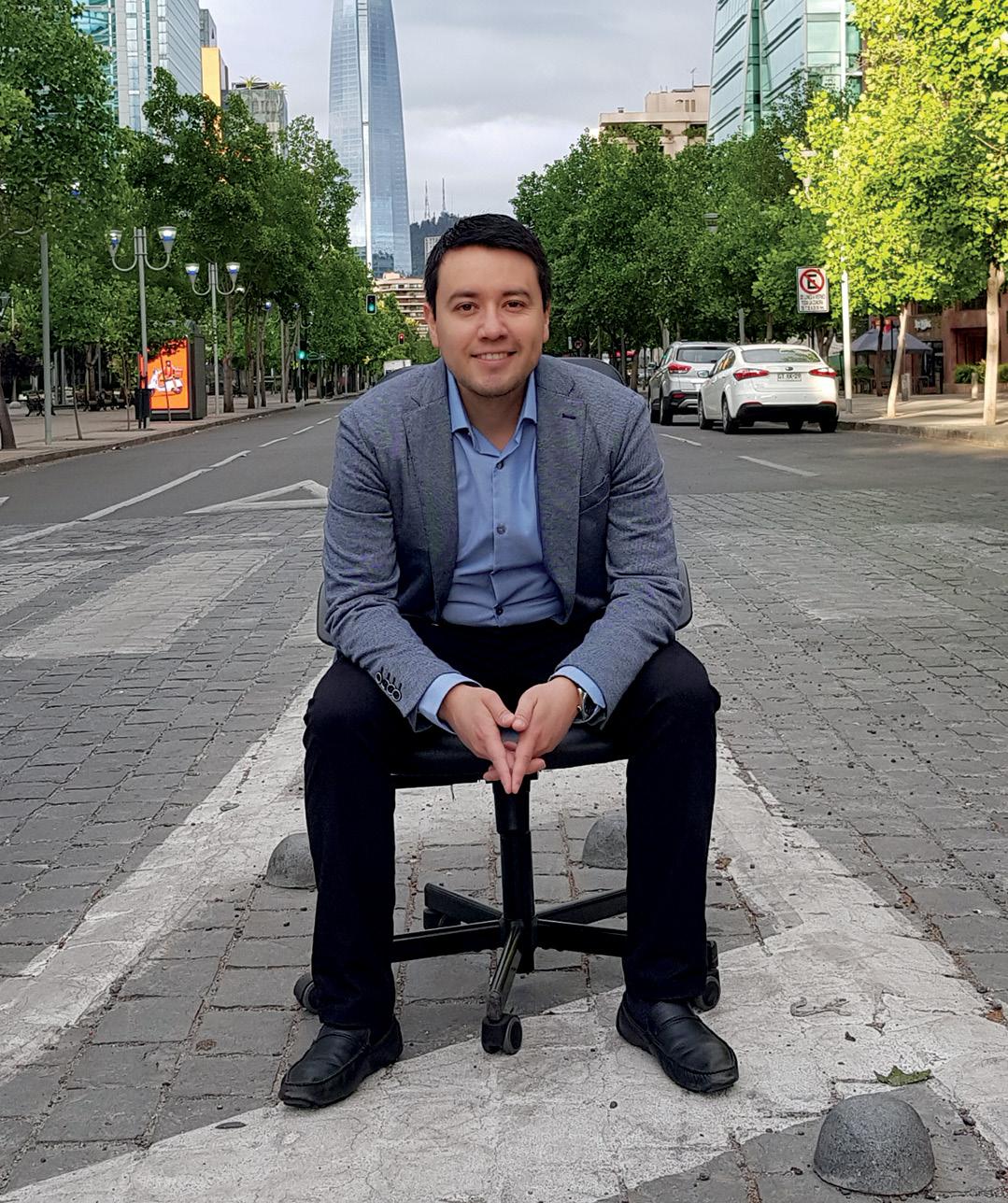
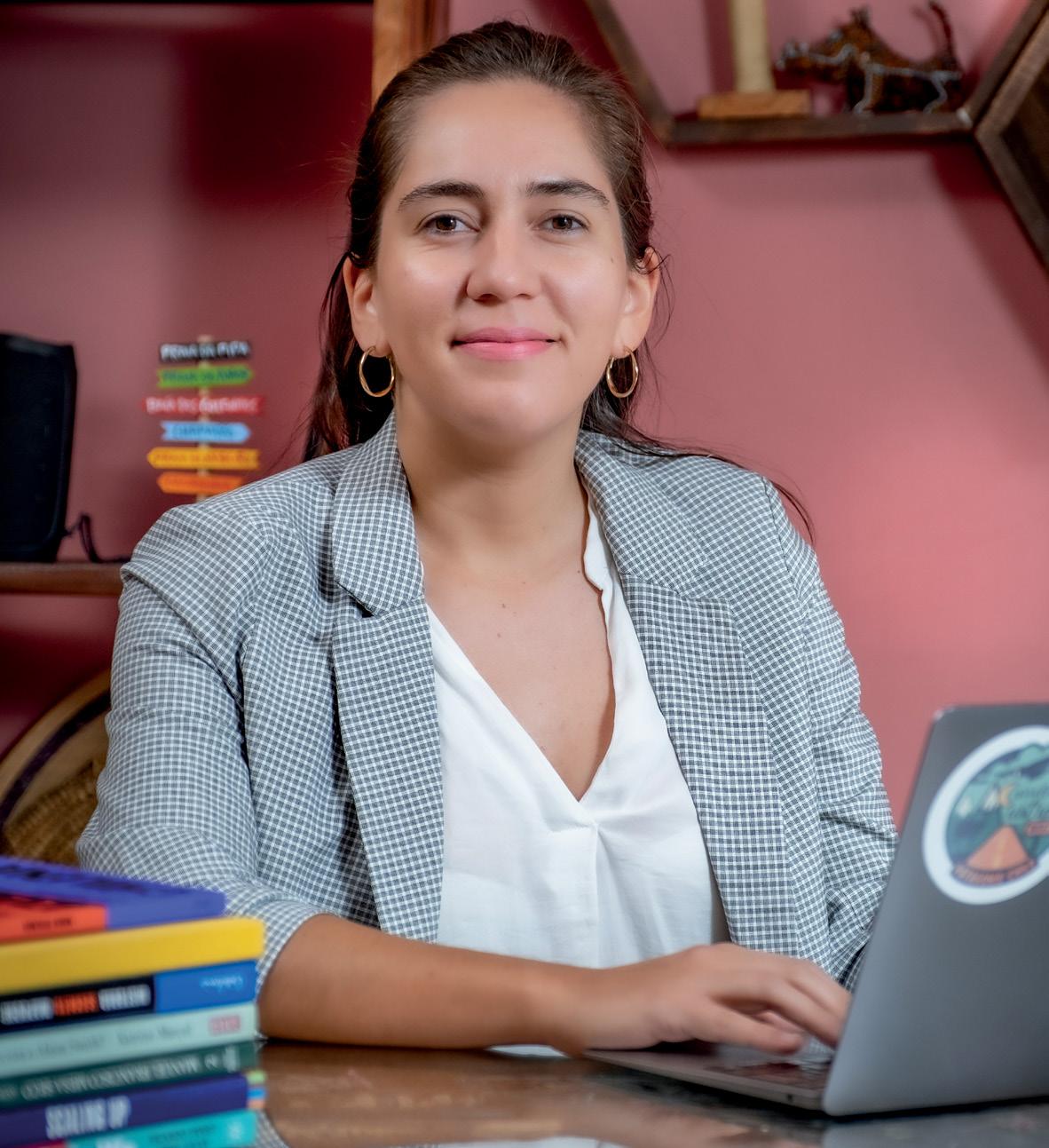
Miami has a couple of important qualities that encourage Climatech companies to expand, like a shared language. Chileans feel more comfortable in Miami.
LEFT: ÁNGEL SIERRA, EXECUTIVE DIRECTOR OF FINTECH CHILE.
ed valuable networking opportunities and insights into operating and expanding in the region. Immediate outcomes included the appointment of a country manager for OK to Shop, a Chilean ecommerce company, and the opening of an office by Ingesum, a manufacturer of solar panels and other industrial products.
The mission organized by AmCham Chile and Endeavor underscores the growing interest and opportunities for Chilean small businesses in Miami, reflecting a broader trend of cross-border collaboration for tech innovation. “Chile has been the birthplace of renowned unicorns and start-ups, and we will continue to see more innovative Chilean entrepreneurship in Miami,” says Paula Estévez.
The burgeoning Chilean start-up scene in Miami represents just the latest chapter in the evolving connections between Chile and the U.S., one of the most enduring trade and investment relationships in the Western Hemisphere. “Chileans are finding that investing in the US and obtaining an investment visa is relatively easy to do. Same thing for Americans opening a company in Chile,” says IFB’s Singer. ”So the relationship between the two countries is a highly successful one.” Says Claudia Serrer, ProChile’s Trade Commissioner in Miami: “I look forward to seeing what we are going to do in the next 20 years. We want Chile to remain a strategic partner for the U.S. and to keep being part of the changes that are taking place.” l

In 2015, a Chilean bank became the owner of the second largest bank in South Florida – City National Bank – further solidifying its presence in the Florida market. Banco de Crédito e Inversiones (BCI) invested close to $1 billion to acquire the domestic bank with the belief that the decision aligned with the bank’s long-term goals.
“Some of the investors questioned it, but we felt very comfortable to say, ‘We know we’re going to make it a success.’ We had the right people, it’s the right cultural organization, and it had the right framework for what we wanted as a community bank,” says Grisel Vega, General Manager of BCI Miami. “That was a big step in the internationalization process for BCI.”
BCI was founded in Chile in 1937 to help small business owners mostly in the textile and agricultural export industries receive loans to help expand their businesses. In 1998, when Chilean law began permitting financial institutions to expand abroad and create branches overseas, BCI followed its clients to the U.S., specifically Miami. “They always wanted to have a presence in the United States because the mission for the bank is to support its customers as they’re trying to grow their businesses. We follow our customers where they expand, so we looked at where the customers were going, and the decision was Miami,” says Vega.
Vega likes to compare Miami’s financial prowess to hubs like New York, in particular its Latin American advantages. “If you think of the larger global banks in New York, there are a lot of European and Asian [financial institutions]. Miami is an international location, but it was and continues to be the Latin American hub,” he says. Among the reasons are the city’s closeness to Latin America, both culturally and in terms of air transportation, with its abundance of direct flights to the region. “It is easy for our clients to come through Miami. It’s the first stopping point.”
The bank initially began with about $20 million in assets under management, but today has $90.4 billion in total assets, making it the 8th largest bank in Latin America. According to BCI’s financial reporting, since acquiring City National, the bank has doubled in assets, with 33 percent outside of Chile.
With 1,200 employees in the U.S., BCI provides its clients with a variety of financial services, ranging from trade finance to wealth management and corporate banking. “A lot of the companies in Chile that export things, like sushi grade salmon to Japan, will come to us for help in those finances. We facilitate the cash management for these companies, providing a line of credit,” says Vega.
By integrating CNB into its portfolio, BCI Chile created a seamless experience for its clients, providing them with access to a diverse range of products and solutions under one roof. CNB also allows BCI to transfer their clients to the domestic bank once they have established a strong foothold in the U.S. market, further cementing them as a U.S. corporation. “We can process payrolls, Ach wires, etc., but we’re one branch in Brickell Avenue. If you want to get cash and make deposits, there’s branches of City National, they have ATMs in every Publix. We [BCI] don’t have that structure. We don’t care where our client is, as long as we’re servicing them within our family,” says Vega. Last year, CNB closed with $26 billion in assets, 30 percent of BCI’s total, growing six fold since BCI became the owner. l


We follow our customers where they expand, so we looked at where the customers were going, and the decision was Miami.

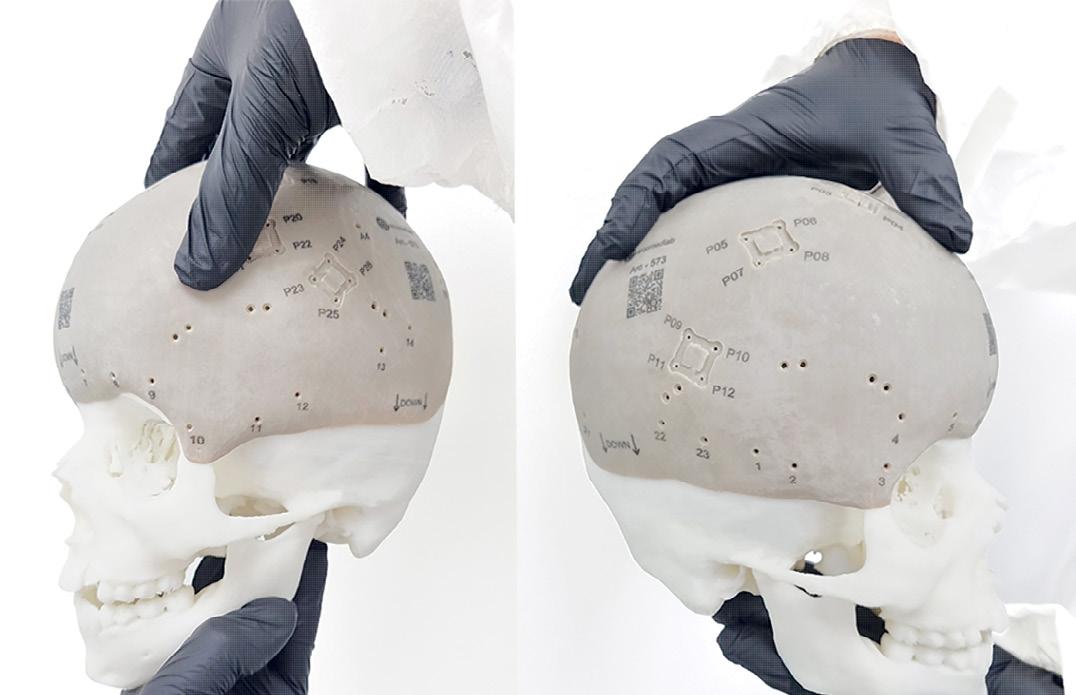
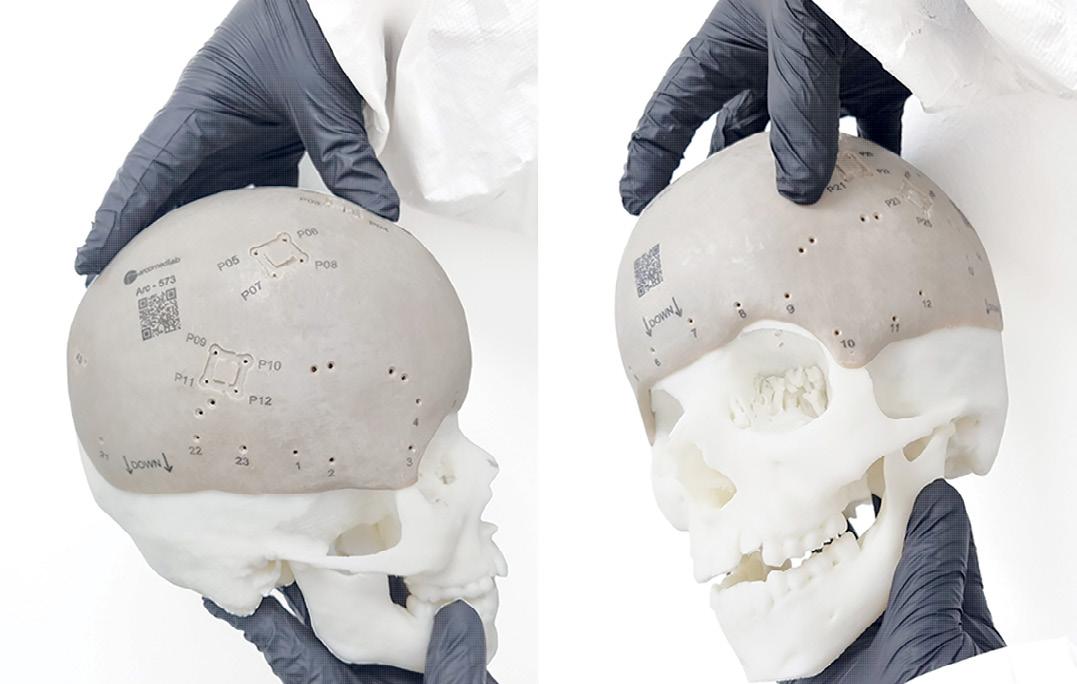
The case in question was that of a 12-year-old boy who had gone his whole life suffering from severe craniosynostosis, a birth defect where the skull does not form correctly. In this case, nearly half of his cranial structure remained undeveloped. Until last year, that is, when Arcomedlab manufactured the world’s largest cranial implant, which it used to cover almost the entirety of the skull of the young patient. Today, the boy thrives happily at school, enjoying the ordinary joys of childhood with newfound confidence. “Seeing the patients smiling again is the best pay,” says Ilan Rosenberg, CEO and Founder of Arcomedlab.
Originally founded in Chile in 2018, Arcomedlab specializes in printing 3D custom-made synthetic bone implants for patients, using a high-performance polymer called PEEK. The implants are either sold to hospitals, private doctors, or to the patients directly. To date, the biotech company has successfully crafted more than 600 implants for patients in Mexico, Peru, Colombia, Costa Rica, Panama, and Chile. After being awarded “Best Chilean Startup” and “Best Biotech Latin American Company” by Ganesha Lab, a Chilean accelerator program for startups, Arcomedlab raised $1 million for their entry into the U.S. market through Miami. The start-up has raised over $2.5 million to date.
Arcomedlab originally considered following the big tech companies to conventional medical hubs like Boston or New York, but felt Miami was a better launching pad for Latin American companies. “A lot of patients suffer every day from different cranial [and]

facial defects. And big pharma monopolizes the whole market. So, startups like Arcomedmalb are game changers because we are offering better, faster, and cheaper solutions. This is the new era regarding medical devices,” says Rosenberg. Expanding into the U.S. market was not without its challenges, says the CEO. Navigating regulatory hurdles, establishing a foothold in a competitive landscape, and building trust among American consumers required determination and support from local investors and programs like Chile’s GoGlobal, which supports the internationalization of Chilean startups.
The implants are currently manufactured in Chile, where Rosenberg spends half the year. Now, with U.S. operations in place, the company is looking to manufacture implants in Miami for their North American clients. Until then, they are in the final stages of FDA approval to begin selling their cranial implants in the U.S., a process expected to finalize by next year.
Miami’s allure for medical device manufacturers had been steadily growing, reflected in the Miami Customs District’s robust exports valued at $1.7 billion in 2023. Arcomedlab intends to ride the wave of this trend, making its latest devices here. Their most recent breakthrough? A patent for a custom-made cranial implant capable of storing and releasing different drugs, such as antibiotics, through a drip mechanism activated by gravity.
With a team of 12 full-time employees between Santiago and Miami, and a network of over 1,200 advisors worldwide, including surgeons and even NASA affiliates, Arcomedlab stands at the forefront of medical innovation. While current profitability was not disclosed, Rosenberg hinted at a promising year, edging closer to the million-dollar mark. Reflecting on their journey, Rosenberg says, “Before Arcomedlab was born, a lot of people in Latin America did not have any kind of fair access to these types of solutions. We changed that.” l

HOW

Sonda was among the first Chilean companies to provide IT services across Latin America, where today it has a presence in 10 countries. With more than 23,000 employees, including 14,000 engineers and tech professionals, it provides consulting for corporate IT infrastructure, applications to support clients with its own or third-party software, and platforms through a network of regional alliances with firms like Cisco, IBM, Microsoft, and Oracle. Until recently, however, it shied away from the U.S. market.
Now celebrating its 50th anniversary since starting in 1974 – when it launched to provide IT services to Chilean energy and forestry company Copec – Sonda expanded into the U.S. market in 2022. It was, in many ways, the final chapter of a remarkable growth curve that last year saw revenues reach nearly $1.5 billion.
“Expanding into the U.S. market was a natural progression for us. While the competition is fierce, our solid value proposition and focus on hiring local talent has been instrumental in our growth,” says CEO of Sonda USA Maurizio Rinaldi. “When we started the operation in Chile, the founder understood very quickly that it was important to have to compete on size and geography. So, we quickly opened operations in other countries.”
Sonda’s clientele today spans North and South America, including customers in Argentina, Brazil, Chile, Colombia, Costa Rica, Ecuador, the U.S., Guatemala, Mexico, Panama, Peru, and Uruguay, catering primarily to major multinational corporations operating in diverse sectors. “We work with some of the largest clients in each market, often global companies with operations spanning multiple countries,” says Rinaldi.
With offices strategically located in several U.S. cities, including Miami and Dallas, Sonda has set its sights on expanding that footprint, aiming for their U.S. operations to represent at least 15 percent of its global business. “Our U.S. operation, although relatively young, has been growing rapidly. We currently have over 200 dedicated employees serving clients across five states,” says Rinaldi. The IT provider says that revenue has grown more than 20 percent annually since expanding to the U.S.
The company followed the trend of many Chilean tech firms looking to scale up – by moving to Miami. “Miami offers a strategic location and a vibrant tech ecosystem,” explains Rinaldi. “And it’s a melting pot of industries, from finance to healthcare, making it an ideal hub for our operations.” While he remains tight-lipped about specific U.S. clients, Rinaldi hints at partnerships in the banking, healthcare, and government sectors.
Sonda competitive advantage is to offer a comprehensive approach to technology solutions for business processes. Rinaldi elaborates, “We provide a wide range of services, blending cutting-edge technology from our partners with our innovations. Whether it’s soft-


TOP: MAURIZIO RINALDI, CEO OF SONDA USA
ABOVE: SONDA EMPLOYS 14,000 ENGINEERS TO KEEP THEIR IT INFRASTRUCTURE AT PEAK PERFORMANCE
ware development for banking or smart city solutions, we cover it all.”
Now a publicly traded stock on the Santiago exchange, the tech firm reported revenues of $1.483 billion last year, with pre-tax earnings of $143 million, and more than 5,000 clients in 3,000 cities in the Western Hemisphere. Rinaldi said Sonda will likely pursue acquisitions of local service-provider companies in the U.S. market as part of its expansion. “The journey has just begun, and the best is yet to come,” he says. l

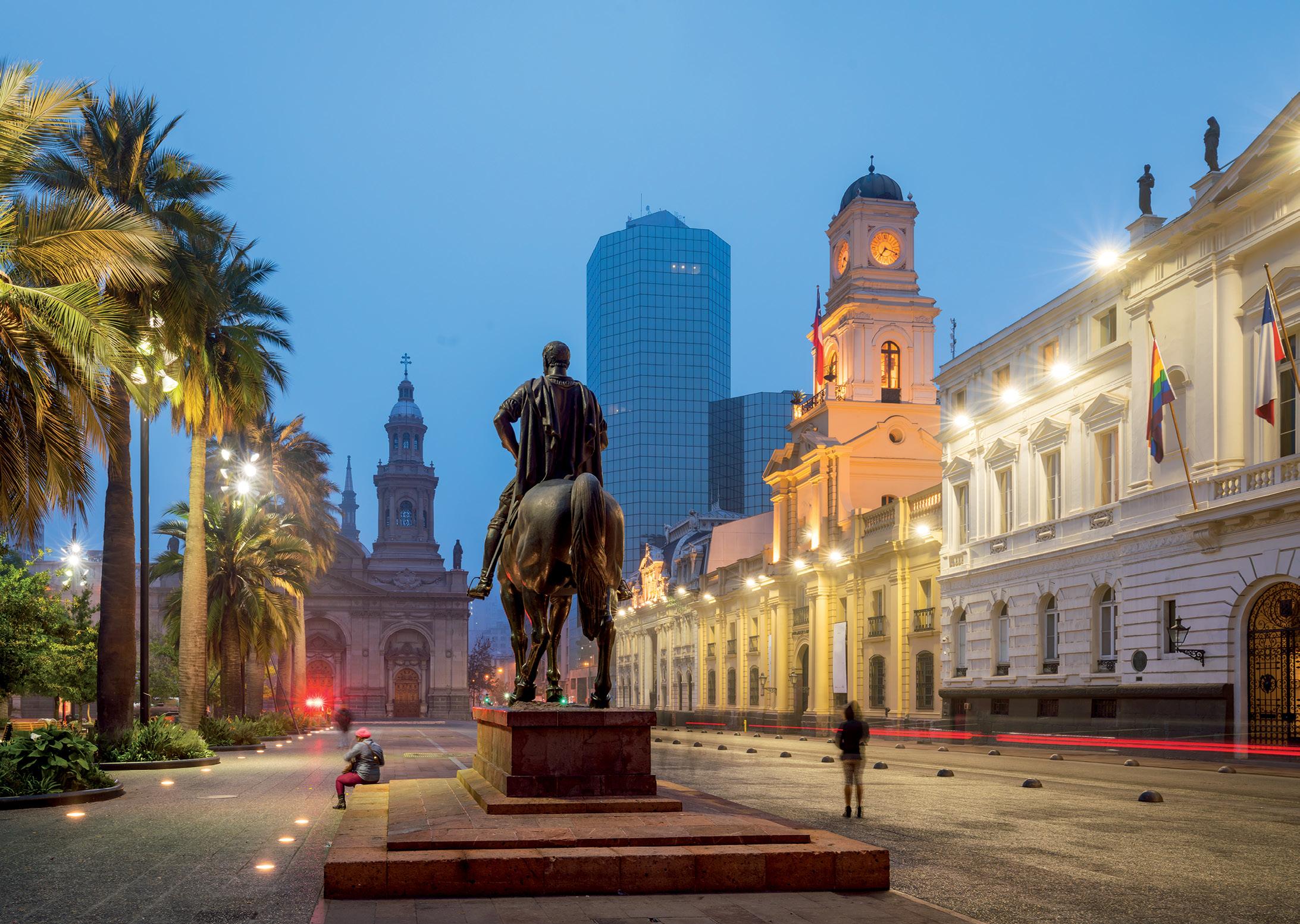
Nestled along the western seaboard of South America lies Chile, a country of remarkable contrasts and beauty. Stretching 2,700 miles from its northern boundary with Peru to the southern tip of South America, Chile has extraordinary geographical diversity – from arid deserts in the north with towering sand dunes and lunar-like valleys, to rugged fjords and icy glaciers in the south, where snow-capped peaks reflect in pristine lakes.
Despite its immense length, Chile’s width averages 110 miles, making it one of the world’s narrowest countries. Yet, within this slender frame, it harbors a wealth of natural wonders, from the Atacama Desert, the driest place on earth, to the lush forests and crystalline waters of the Lake District.
Traveling to Chile from Miami is simple. It is like going to London or Paris –an eight-hour flight – except you are in the
same time zone so there is no jet lag. There are numerous direct flights offered by several airlines. Most visitors first land in Santiago, the country’s capital, before heading off to the south or, in the case of this journey, to the Atacama Desert.
Before heading North, visitors should take a day to explore the capital. Stay in the Downtown area where most things are within walking distance, with easy access to public transportation. The Turistik bus, the city’s double-deckers, are a great way to sightsee the city’s best spots like Sanhattan, the popular name for the bustling financial district, and the Plaza de Las Armas, home to La Moneda, the presidential palace.
The bus can also take you to elevated Parque Metropolitano, better known as Cerro San Cristóbal. At 722 hectares, it is
Santiago’s largest green space, packed with bicyclists, families walking their dogs, and hikers. The park is massive, including a funicular that carries you up one side and a teleférico (cable car) that swoops you away on the other. Attractions there include the Zoológico Nacional, a botanical garden, and the Plaza de Juegos Infantiles Gabriela Mistral. Near the funicular’s top, Terraza Bellavista offers snacks and stunning city views.
For lunch, visitors can take a 40-minute drive outside of Santiago to Viña Santa Rita. Established in 1880 by Don Domingo Fernández, Santa Rita is one of Chile’s oldest wineries. From there it’s a short drive to the Andean Museum, with its glimpse into the rich cultural heritage of the Andean region, from ancient artifacts to traditional textiles.
The best place to catch the sunset is the Costanera Center, the second-tallest building in Latin America. Here, visitors are treated to breathtaking 360-degree views of Santiago at the Sky Costanera. The center also has a wide variety of restaurants.

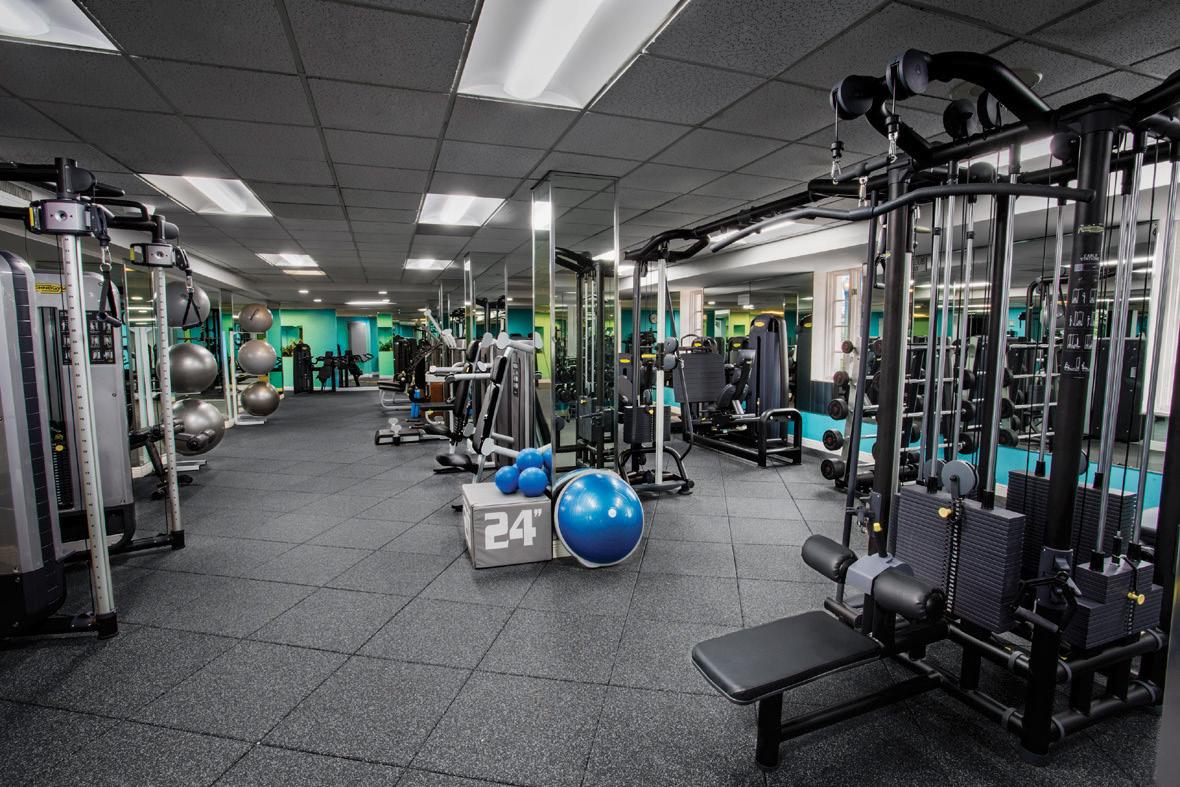
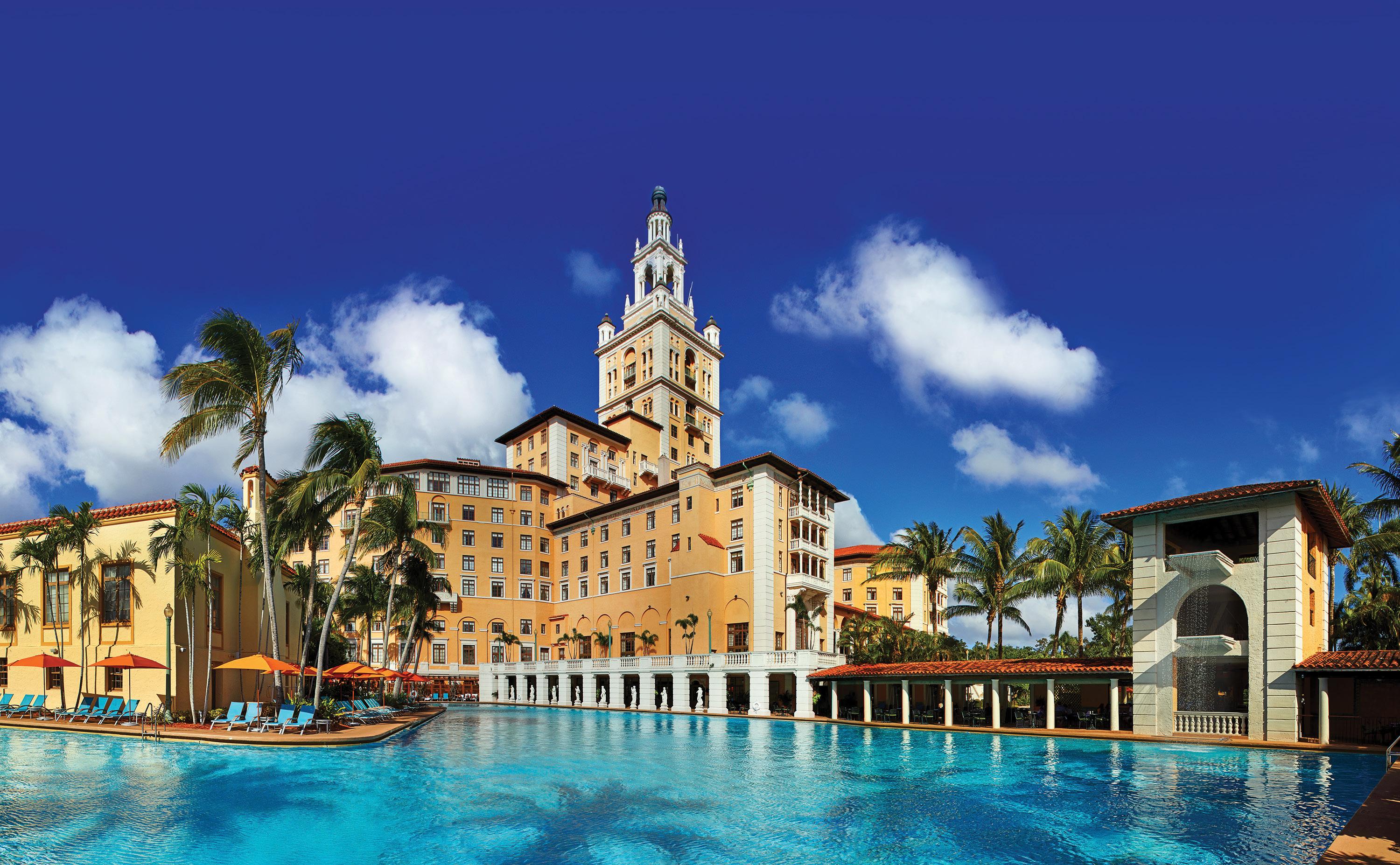

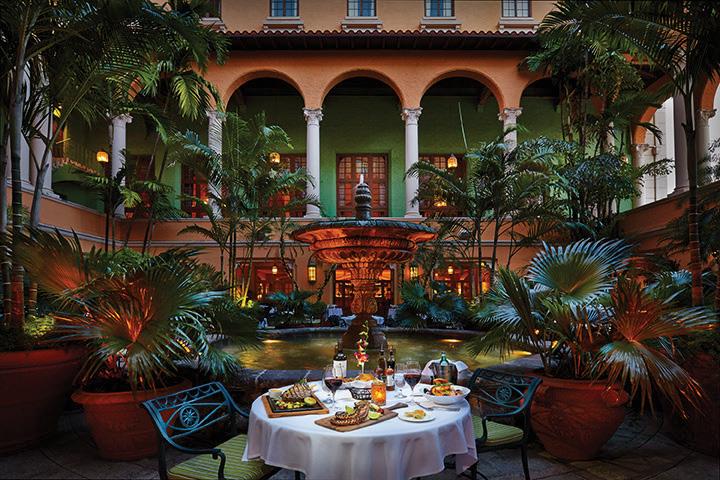
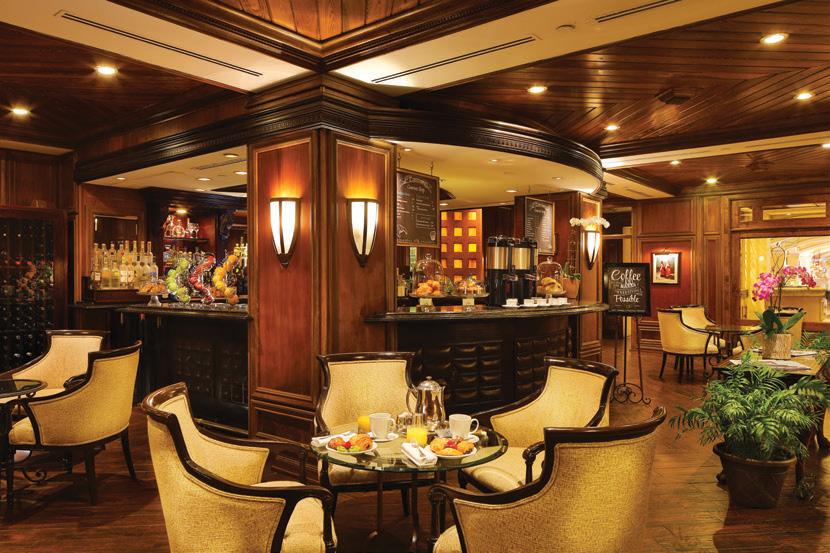


From Santiago, there are many ways to get to the Atacama Desert – either by car, plane, or train. A flight with the country’s national carriers to Copiapo, a city in the northern part of the desert, is around two hours. For accommodations, Atamcama Suites is in a charming rural setting with little shops and cafes within walking distance. The desert itself is one of the driest places on earth, a spectacular vista of sunbaked desolation. At night the stars are brilliant.
With the sun rising over Copiapó, travelers can uncover the hidden gems of the desert, including Viña Armidita in Alto del Carmen, where you will be greeted by the warm hospitality of sisters Cecilia and Sandra Ramírez. Their vineyard, a testament to centuries of tradition, offers a tasting experience that is educational and indulgent – including their renowned pisco, a type of grape brandy originating from the South American countries of Peru and Chile. The sisters explain that pisco dates back to the Spanish
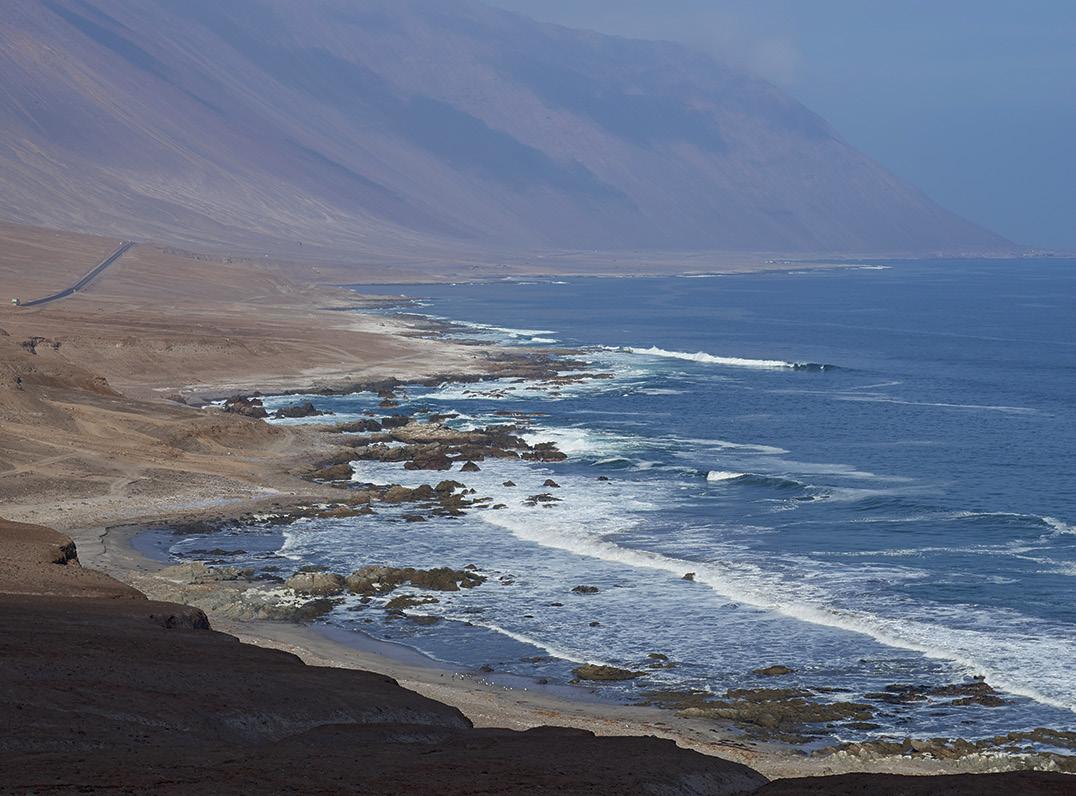

colonization of the region in the 16th century. Both Peru and Chile lay claim to the origins of pisco and have fiercely debated its history. Regardless of origin, pisco is an important cultural and culinary symbol in both Peru and Chile, celebrated in festivals, cocktails, and traditional dishes.
Viña Kunza, a boutique vineyard, is another family-owned winery that mostly sells its wine locally. From its sprawling vineyards to its meticulously crafted wines, Kunza offers a glimpse into the artistry of winemaking in the desert. And with each glass of velvety cabernet sauvignon, you are transported to the sun-drenched slopes of the Huasco Valley.
For lunch, it is a quick drive to La Casona de Chanchoquín from the vineyard. The restaurant is home to a local woman who uses her house as a hostel/restaurant. The food, including lemon-marinated chicken, is homemade with all the ingredients locally sourced.
Before you end the day make sure to visit the Pisco Museum at Jahir Saba Distillery. Here, you will be given pisco shot
LEFT: THE NIGHT SKY IN THE ATACAMA DESERT ATTRACTS STARGAZERS FROM AROUND THE WORLD.
TOP: THE ATACAMA COASTAL ROUTE WHERE THE DESERT LANDSCAPE MEETS THE OCEAN
ABOVE: THE CECILIA AND SANDRA RAMÍREZ SISTERS AT THE VIÑA ARMIDITA IN ALTO DEL CARMEN WHERE THEY BREW PISCO, A TYPE OF BRANDY
OPPOSITE PAGE
TOP LEFT: LLANOS DE CHALLE NATIONAL PARK, WHERE THE DESERT MEETS OCEAN
BOTTOM LEFT: VINYA KUNZA, A FAMILY OWNED VINEYARD
RIGHT: THE ATACAMA DESERT, TRAPPED BETWEEN THE ANDES MOUNTAINS AND PACIFIC OCEAN, IS ONE OF THE DRIEST PLACES ON EARTH.
after pisco shot – and if you get hungry, the seafood risotto is perfect.
DAY
Your itinerary should include Vallenar, a three-hour drive from Copiapó. The city is known for farming and mining but it’s a secret spot that culture enthusiasts and adventure seekers visit for its scenic desert trails and vineyards. For accommodations, the


charming Hotel Orígenes is recommended.
One of the larger vineyards, Viña Buena Esperanza offers an Assisted Tasting Experience where guests can sample their finest wines and soak in the desert’s influence. What makes wine production in the driest place on earth unique is that because they are near the ocean, the sea creates a fog called the camanchaca that gives them the moisture they need to survive.
Next make your way to Almazara Payantume, where ancient olive trees line the landscape. Here, guests can taste the renowned Huasco Valley Olive Oil. You should follow with lunch at a nearby restaurant in Huasco, with delicious seafood and a surreal ocean view.
If you are heading back to Copiapo take the scenic Atacama Coastal Route, and make sure to stop at Llanos de Challe National Park. Known for its diverse flora and fauna, visitors can explore the park’s trails and take in the breathtaking views of the desert landscape meeting the ocean. A family of seals will even swim by to say hello.
As the sun begins to set, head straight

to Mar de Dunasa for an Astrofography Tour – a tour in the middle of the desert with a fire pit, a tent set up with food and water, and a giant telescope. The Atacama Desert has one of the darkest skies in the world and is frequently visited by astronomers from around the globe. The tour includes an astronomer who will guide you through the Milky Way and several planets.
The open-air museum at San José Mine is another must-visit cultural site. Here, guests can learn about the history of Chile’s mining industry and the rescue of the 33 miners who captured the world’s attention in 2010. One of the rescued miners still works here as a guide, walking guests through the site while recalling the event.
Next, include a visit to the Parque Los Dedos Paleontological Museum, where you will discover the fossilized remains of ancient creatures that once roamed the desert. The desert, once covered by the ocean, has remains of prehistoric aquatic sloths and whales. As you’re by the sea, make sure you
have lunch at Restaurant Coral de Bahía Inglesa. There, amidst the stunning coastal scenery of Bahía Inglesa, you can indulge in traditional Chilean dishes paired with the finest wines from the region.
If the night is still young, explore the desert’s nightlife scene for one final hoorah. The people of Chile are warm, welcoming, and know how to party. The desert has many options for clubbing or bar hopping that pulsate with energy. After ordering some drinks and dancing to Reggaeton – it will feel like you’re back in Miami – do not leave without stopping at a food cart for a completo, a Chilean-style hot dog twice the size of the ones you’d find in the U.S. The perfect hangover cure.
While a few days in the desert provide a taste of Chile’s adventure offerings, it’s clear that a deeper exploration is needed to fully appreciate the country’s diverse attractions, including its famous coastal town of Valparaiso – home to the poet Neruda –close to Santiago. Only then can one grasp the full extent of Chile’s potential as an adventure destination. l

Seven years ago, Nusret Gökçe, a relatively unknown Turkish butcher and restaurateur, skyrocketed to fame overnight when a video of him ostentatiously sprinkling salt on a long cut of beef went viral. He was christened “Salt Bae” by the public and quickly capitalized on the Internet moment, opening 32 restaurants worldwide in subsequent years.
Today, the now global sensation has a huge following and his high-end steakhouses have played host to celebrities like David Beckham, Leonardo DiCaprio, and DJ Khaled. His Miami outpost opened in 2017, his first in the U.S., with its iconic selection of highly marbleized American Wagyu beef, seasoned only with Maldon salt from the United Kingdom.
“Believe it or not, seasoning… takes the flavor from the steak. [It] dries it up a little bit,” says Al Avci, COO of Nusr-Et America. Maldon salt, he explains, “penetrates” the steak better than other salts. And while Nusr-Et’s steaks are all highly marbleized, they’re not quite as marbleized as Japanese Wagyu (which Gökçe believes is too rich) or as heavy as Australian Wagyu.
Each steak is cooked on a charcoal grill, using Mexican charcoal because it generates more heat than other coal. The combination of the high-heat charcoal and the high marbelization makes them sizzle, cooking evenly for one of the most tender steaks you’ll ever taste. It also means there’s quite a bit of smoke generated, which requires a special exhaust system that cost about half a million dollars to install. And because the steaks have a high chance of getting charred, the meat is slathered in mustard, of all things.


ABOVE:
OPPOSITE PAGE:
“If you just put the steak directly onto the grill, there’s a big chance of burning the outside,” our server explained. “The mustard serves as a sealant and a protector. It keeps the juiciness inside without changing the flavor.”
We sampled the Nusret Special ($170 for 14 ounces), a sliced filet sizzled on a hot plate with boiling-hot butter, and the Amor ($300 for 21 ounces), one of the mustard-marinated Wagyu cuts. We were skeptical of a steak seasoned with only salt, but our fears were abated by the tenderness and the flavors packed inside. The Amor, advertised as “#SaltBae’s Private Reserve Cut,” is an uncommon cut, taken from a lateral slice of the rib that circumvents the fatty area of, say, a Tomahawk or a ribeye. “That’s why it’s so unique, because you’re not going to have the fat, but you still have the flavor,” our server added.
The most surprising part of the meal was not the steaks, however, but the first course – the appetizer salad. We didn’t expect to be blown away by the Nusret Special Salad ($23), but we were. The pomegranate molasses dressing was divine, combined with feta cheese and walnuts, and enhanced by green apple slices and raisins. A dizzying combination of sweet and savory. Our waiter said the dish had convinced many greens-haters to go vegetarian – probably not what Gökçe intended when he crafted the steakhouse’s menu. Next time we’ll try the tomato


Nusr-Et promotes itself as a multi-sensory experience, with the mood set by an urn of smoking rosemary and thyme arriving at your table when you first sit down. The burning herbs are meant to prepare your senses – and sinuses – for the extravagant dining experience to come. The herbs are book-ended by dessert, another sensory excess: pistachio baklava with ice cream flown in from Turkey ($18). The Maraş ice cream gets its name from the town of Kahramanmaraş, located in southern Turkey on the outskirts of Mount Ahir. This dairy delicacy is made from powdered tubers of purple orchids that grow around the mountain, and milk from the local mountain goats. It is slightly thicker than American ice cream or Italian gelato thanks to the final ingredient: Arabic gum, a resin that makes each bite a little chewier.
Nusr-Et Miami will soon offer more than just food, with a “revamp” to embody the eating and dancing concepts of Mykonos, where restaurants turn into lounges in the later hours of the night. It also offers a business lunch menu from noon to 5:30 pm at $39 per person – the steaks here are only five ounces and you won’t find the evening’s “Golden Experience” menu, which takes excess to new levels by coating a variety of steaks and other meats in digestible gold – $950 for a Golden Tomahawk, for example, or $800 for a Golden Rack of Lamb – Gökçe at his most ostentatious. l
walnut salad with onion, parsley, chili flakes, and paprika ($21).Beginning with this story, each issue of Global Miami will interview one of the leading CEOs in Greater Miami, with two questions: Where would you take a client for a formal luncheon, and where would you go for a less formal “guilty pleasure.” For our inaugural spotlight we interviewed Carlos Fernandez-Guzman, president and CEO of Pacific National Bank on Brickell Avenue, in the heart of the city’s financial district. These were his choices.
PM Buenos Aires Fish & Steak House is situated in a cavernous space on the edge of the Brickell District, its walls done in red brick, with exposed duct works and heavy wooden floors. An iron spiral staircase and amber lamps also encased in cast iron grids exude industrial chic – enhanced by photos of heavy cranes and cargo at Puerto Novo. The idea here is porteño authenticity, “the best of argentine gastronomy,” expressed in homemade chorizo sausages, empanadas, beef bouillon, and charcoal-grilled provoleta cheese. There is plenty of fish on the menu, but we stayed with the flavorful meats that Argentina’s pampas are famous for, trying the skirt steak and the pincnha. Both superb. The service here is impeccable, with seating available outside amid tropical flora or within the warm interior. "It's important that how we entertain our clients be an extension of the service quality at PNB...That is certainly the case at PM," says Fernandez-Guzman. Lunch appetizers are $6 to $12, with 10 oz. steaks at $36.
1453 SOUTH MIAMI AVE.
305.200.5606

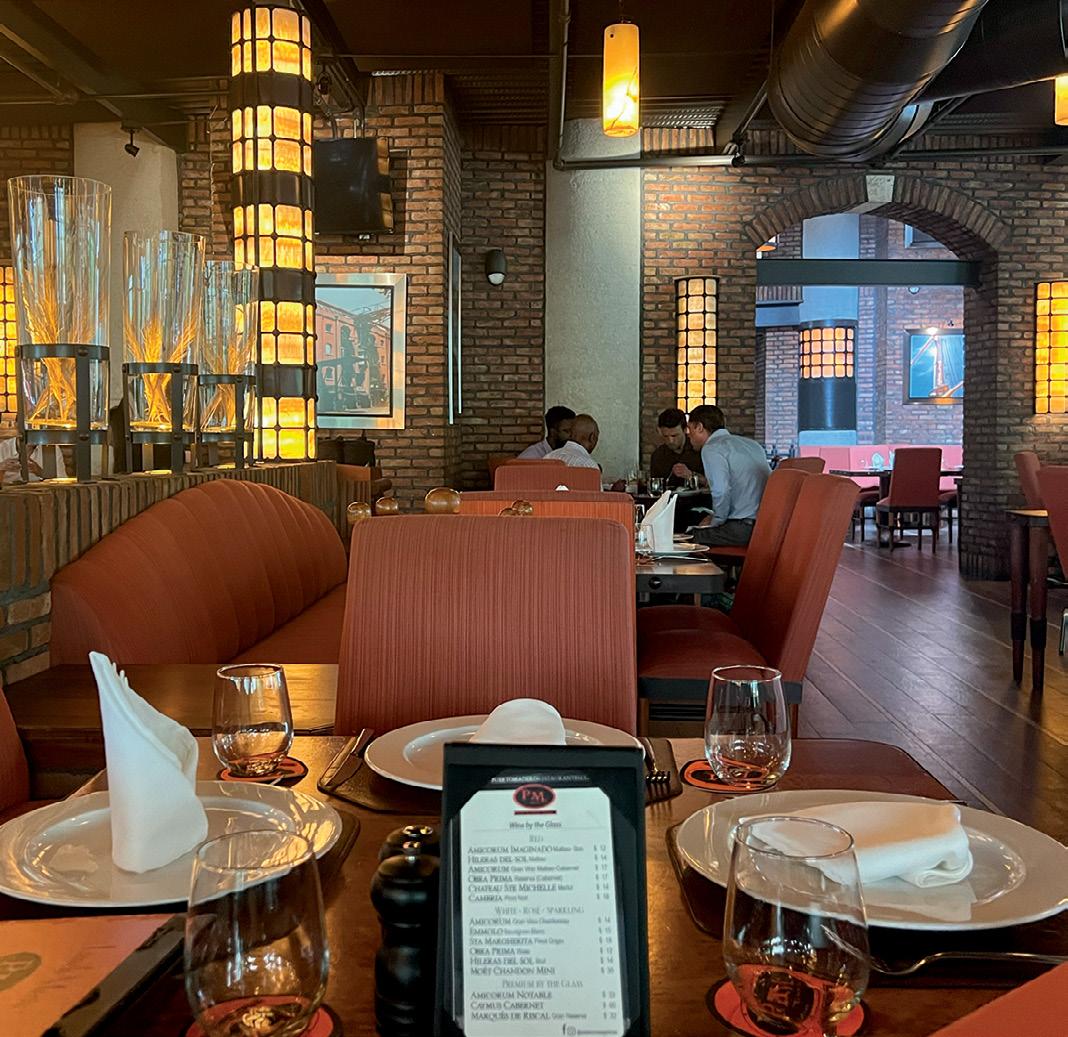



Momi Ramen has so few seats you wonder how they manage to pay the rent. Possibly because the ramen does not come cheap here. Most are $35 a bowl, but this is the financial district after all. And the ramen here is superb, with variations that include chicken, pork belly, beef brisket, shrimp, veggie, and the exotic deboned oxtail ramen ($42). The restaurant itself feels authentically Japanese, with flags, lanterns, and wooden tables, and is located down a side street – away from the madding crowd, so to speak. The menu is utterly simple, just a check list of ramen, dim sum, and fried rice, with sake, Japanese soda, and green tea available. You hand the ticket to the cook and minutes later you have a rich steaming broth with noodles, ginger, garlic, mushrooms, scallions, and eggs, along with spice to your taste. "It's my hidden treasure for an outstanding culinary experience... where I sneak off to enjoy one of my favorite cuisines," says Fernandez-Guzman. 5 SW 11TH ST. 786.391.2392


DORAL’S CONTEMPORARY ART MUSEUM MOVES FROM ONE POP-UP SPACE TO THE NEXT
BY YOUSRA BENKIRANEAdjacent to Miami International Airport, the city of Doral has attained a global significance as Greater Miami’s logistics hub. As a cultural center, however, the industrial city is just beginning to emerge. A key indicator of that renaissance is the emergence of The Doral Contemporary Art Museum (DORCAM).
In the wake of the global pandemic shutdown in 2020, a group of artists decided to transform Doral’s public parks into openair galleries, since traditional galleries and museums were closed to the public. Recognizing the relative safety of outdoor spaces and the universal accessibility of public art, DORCAM that year celebrated the largest outdoor sculpture exhibition of Spanish artist Manolo Valdés.
The show was the first major outdoor display by DORCAM, which had previously used unconventional spaces to set up exhibitions. Founded in 2017 by collectors, community leaders, artists, and entrepreneurs who saw the need for a contemporary art museum in Doral, DORCAM continues to display art works in warehouses, garages, open office spaces – and now parks. “After the pandemic there were many empty
spaces. So, we have an agreement with them to occupy the spaces while waiting for new business. We always see how we can best maximize any space,” says Marcelo Llobell, co-founder of DORCAM.
Llobell says the museum pulls inspiration from the German artistic movement Bauhaus – combining art and technology in pursuit of creating a “total” work of art. The school emphasized a functional, minimalist aesthetic characterized by clean lines, geometric shapes, and a focus on craftsmanship, says Llobell which has had a profound influence on modern design and architecture, especially in Miami. “This type of art movement in Miami is changing the way the architects are creating,” says Llobell, who office is connected to a warehouse that contains his personal collection.
Unlike other cultural institutions in Miami, DORCAM has yet to find a permanent home. Instead, the group organizes and participates in pop-up shows, including joining in overseas shows. They also specialize in displaying the work of artists from Latin America and Europe. One of their more ambitious exhibitions covered 23 empty warehouses with artists from Venezuela,
Cuba, Colombia, Spain, and more.
In its first six years, DORCAM achieved notable accomplishments, including six exhibitions of contemporary art and design, along with ten community outreach programs (encouraging artists of all ages), attracting more than 5,000 visitors. Strong institutional alliances were forged with the City of Doral, Miami-Dade Cultural Affairs, Chase Bank, and the Doral Business Forum, among others. The museum also established partnerships with international cultural organizations in Spain, Chile, Brazil, and Germany.
Each year DORCAM participates in Spain’s international photography festival PHotoEspaña, inviting its artists from Doral. Most of the museum’s participating artists live in Doral but have immigrated from South America. The group receives its funding from Miami-Dade County and fundraising initiatives to provide opportunities for local and global artists to showcase their work. “We are accessible to all kinds of artists, designers, architects, and from different countries. The support we provide helps them become part of the community,” says Llobell.
The presence of DORCAM in the Doral industrial hub is symbolic of the city’s evolution from a primarily commercial center to a multifaceted community with a burgeoning arts scene. “By repurposing industrial spaces for cultural purposes, we breathe new life into it,” says Llobell. The museum is now working with the county to find a permanent location in Doral. l
The Miami Customs District is a tri-county entity, comprising not only Miami-Dade County, but Broward and Palm Beach Counties to the north. Broward itself, with its Fort Lauderdale/Pompano/Hallandale coastal urban core, is now home to numerous global companies like
Heico, Embraer, andAlactel-Lucent, in addition to large high tech U.S. firms like Citrix, Microsoft and Kemet. It is also within close driving distance of Miami. For that reason, we look this month at some ocean-front alternatives to the high-priced Miami market.

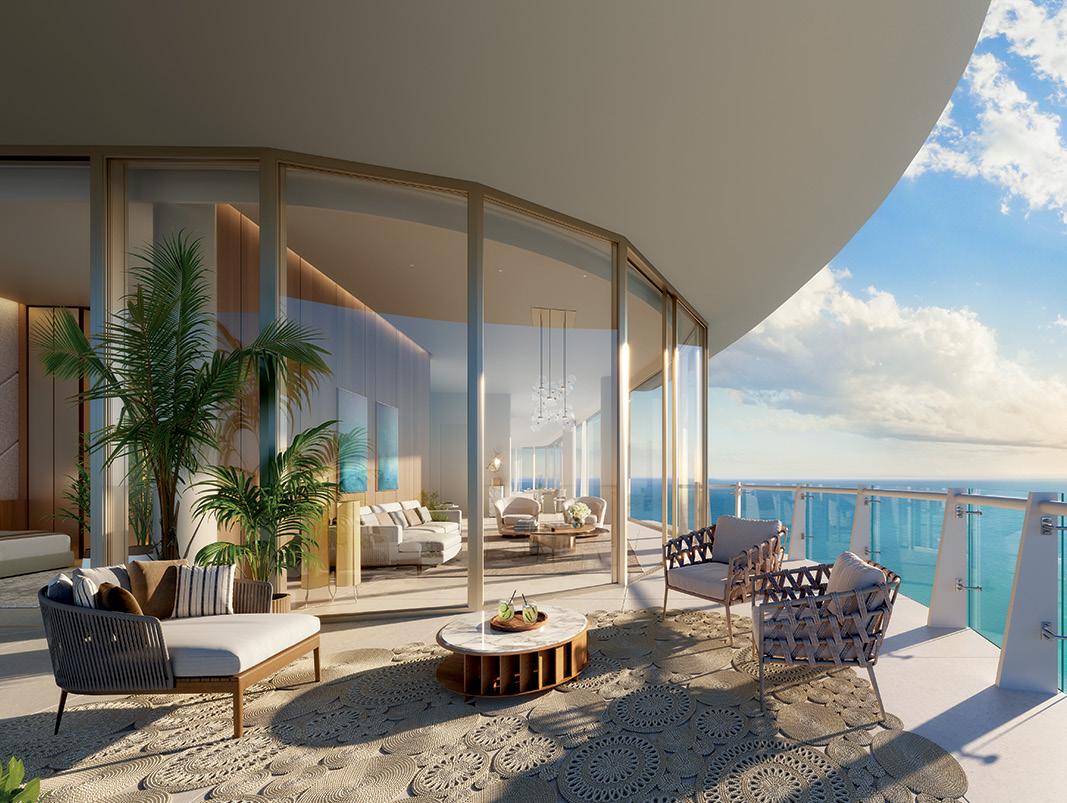

4 bed / 5 bath, 3,804 sq. ft.
Situated in The Beach Tower overlooking the Atlantic Ocean, this southeast corner residence has breath-taking panoramic views. Fully finished with Italian designed kitchen, top-ofthe-line appliances, large primary walk-in closet, east and
west living rooms, breakfast area and expansive terraces. The impeccably designed interior space makes this unique residence the ultimate sunrise to sunset living experience. Sales Agents: Fortune Development Sales 754.600.1348

LISTING PRICE: $6.998M
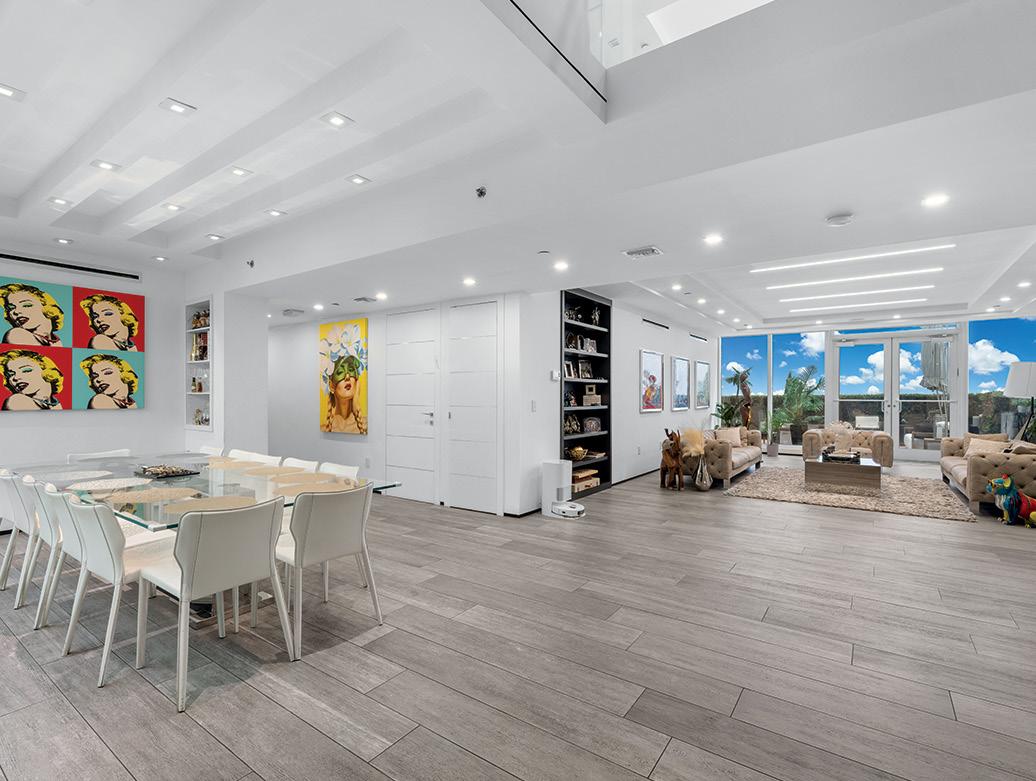
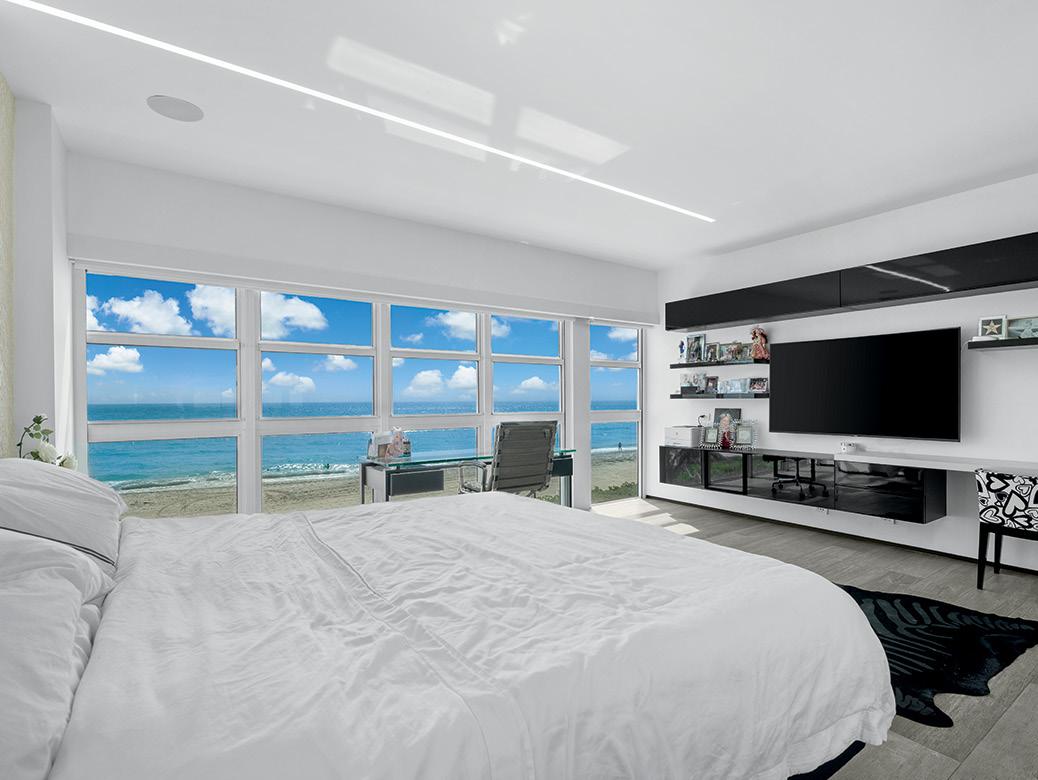
Beach Club Townhouse A. 1830 S. Ocean Drive, Hallandale Beach
6 Bed / 6.5 Bath / 5,015 sq. ft.
Located directly on the ocean, this beach townhouse is one of the most unique oceanfront properties in South Florida. Designed with impeccable style, this home is steps from your own private beach club, offering beach and pool service for all
residences and state of the art gym/spa facility. Private entrance and 2 self-parking spaces give it the feel of a single-family residence. Equipped with smart technology and top of line appliances. Sales Agent: Daniel Tzinker, The Agency. 786.234.9898

Lynare Robbins is an international trade consultant on the Advisory Board of the Miami-Dade County International Trade Consortium. She serves on the board of directors for Sister Cities International and is Co-Chair of Programming for the Sister Cities International All-Americas Summit, taking place in San Antonio, Texas from May 28 to May 31, 2024.
Miami-Dade County is both a bridge connecting the Americas and a global gateway. Sister Cities relationships enhance this role by offering valuable insights into the history, culture, and business practices of partner cities, particularly in Miami’s key sectors of tourism, commerce, and trade. In an era emphasizing effective cross-cultural communication, this asset is vital for international business in Miami.
The Sister Cities program was established in 1956 by President Dwight D. Eisenhower, who envisioned post-World War II stability through direct city-to-city connections. By 1967, Sister Cities International had evolved into a nonpartisan nonprofit corporation, uniting 545 U.S. sister cities, counties, and states with 2,121 partnerships in 145 countries across six continents.
The creation of a Sister City relationship involves a formal agreement between a U.S. city’s mayor or highest elected/appointed official and his or her counterpart in another country. Components of a sustainable Sister Cities partnership include governmental exchanges linking officials, policymakers, and multi-sector business leaders, as well as other relationship-building activities.
Miami-Dade County’s government has over 30 Sister Cities, while municipal governments across Miami-Dade County have 65 Sister Cities. These partnerships span Latin America, the Caribbean, Europe, Africa, the Middle East, and Asia, reinforcing Miami’s role as a vibrant international hub.
In 2023, the Miami Customs District reported a total trade of $137 billion, involving key export destinations like Brazil, Chile, and the Dominican Republic, as well as major import sources such as Colombia, Italy, and France. Established Sister Cities in these strategic locations contribute to facilitating offshoring connections and nurturing collaborations at the local government level, as well as in the private sector.
As offshoring continues to play a key
role in global trade, Sister Cities relationships further enhance these efforts by fostering deeper connections between trade partners. This facilitates streamlined transactions with a heightened understanding that transcends the transactional nature of trade.
Historical and cultural nuances become strategic assets, positioning communities for success in the ever-evolving global marketplace. Sister Cities connections with Miami and cities across Asia, as well as in Europe, the Middle East, Africa, and of course Latin America, serve as a foundation for nurturing both cultural and trade relationships.
In South Florida, Miami has the most Sister City relationships with 24, including with Bogotá, Buenos Aires, Lima, Madrid, and Santiago; Miami-Dade County follows with 17, including Asunción, Kingston, San Jose, São Paulo, and Veracruz; followed by Fort Lauderdale with 16, including Panama City, Haifa, and Medellin; and Miami Beach with 10, including Cozumel and Fortaleza. Other Miami-Dade County cities have 25 sister cities, other Broward cities 23, and cities in Palm Beach County 11.
By leveraging these partnerships, South Florida not only expands its global reach but also strengthens its pivotal role in international trade and commerce, reinforcing its significance on the global economic stage.
In today’s business landscape, the emergence of nearshoring takes center stage. Sister Cities, particularly in the context of hemispheric trade, provide Miami with an opportunity to develop mutual economic synergies, maximize market access, and enhance logistical and supply chain management. Miami’s strategic positioning in the Americas becomes an asset in an era of proximity-driven commerce. Looking ahead to May 2024, the inaugural All Americas Summit hosted by Sister Cities International will take place in San Antonio, Texas.
The aim is to bring together officials, citizen diplomats, and essential stakeholders from cities spanning the Western Hemisphere, including Miami, representing 35 countries. As leaders, it is imperative to conduct business in a way that recognizes that behind each economic transaction there exists a human foundation. Sister Cities remains a cornerstone of diplomatic and economic success in our interconnected world. l
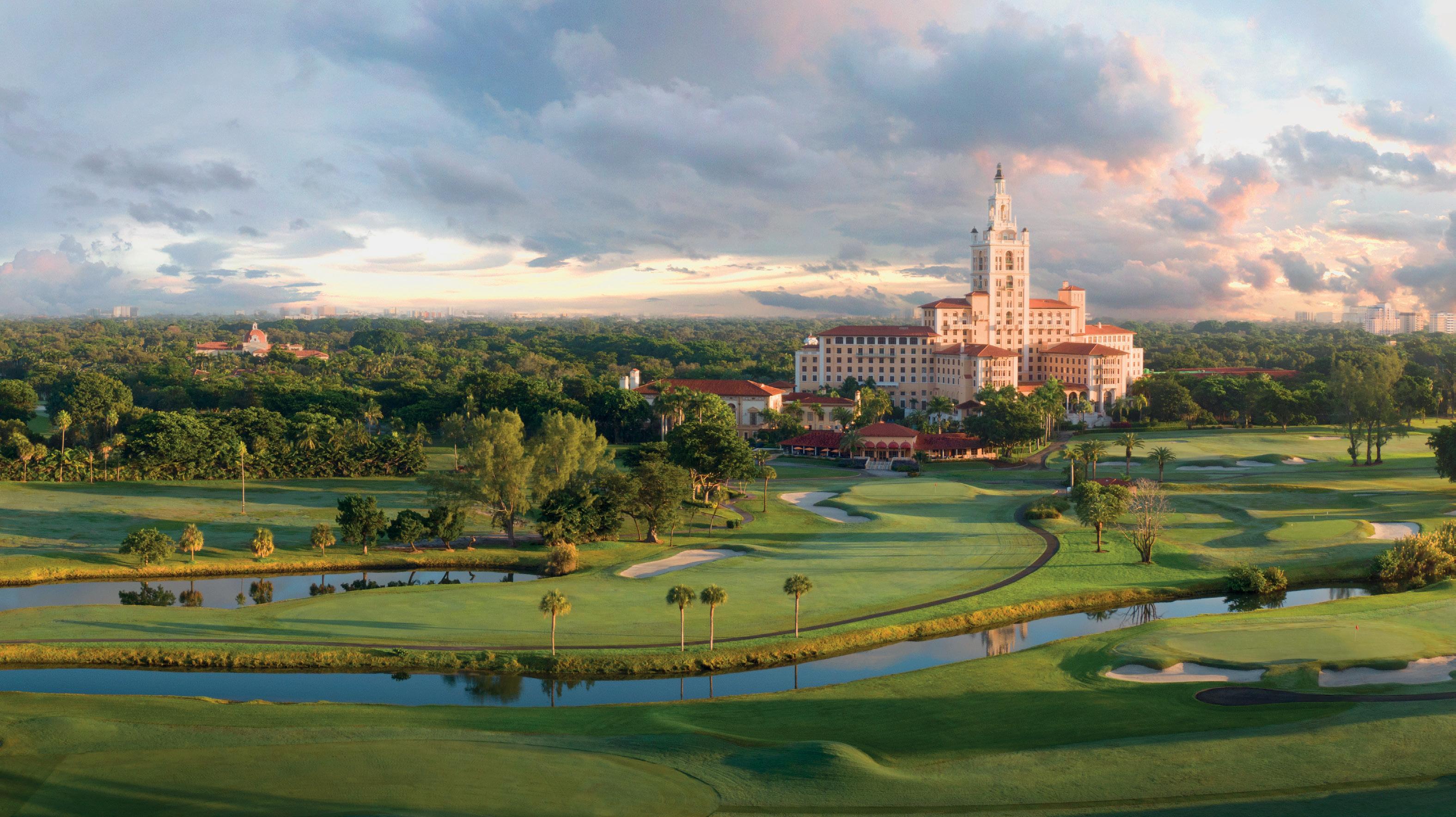


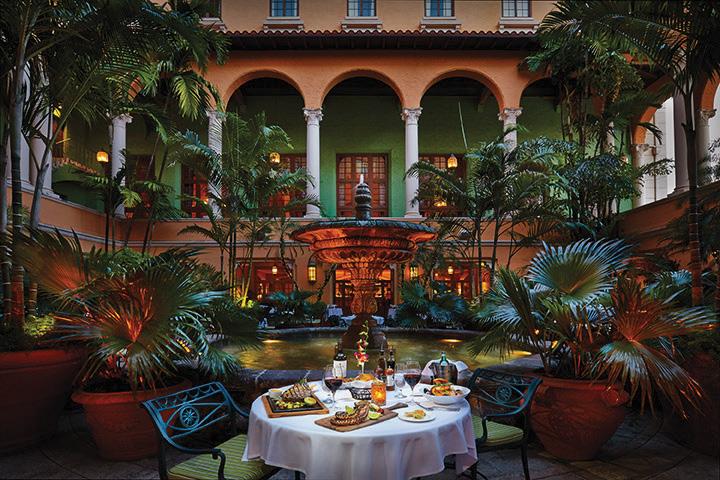

A true icon surrounded by 150 acres of tropical landscape. We invite you to soak in our rich history, world-class golf, European spa, decadent dining, including our internationally recognized Signature Sunday Brunch or Afternoon Tea and more. The Biltmore, where luxury and good taste never go out of style.
THE BILTMORE HOTEL
1200 Anastasia Avenue | Coral Gables, Florida 33134 Reservations: 305-445-1926 | www.biltmorehotel.com
